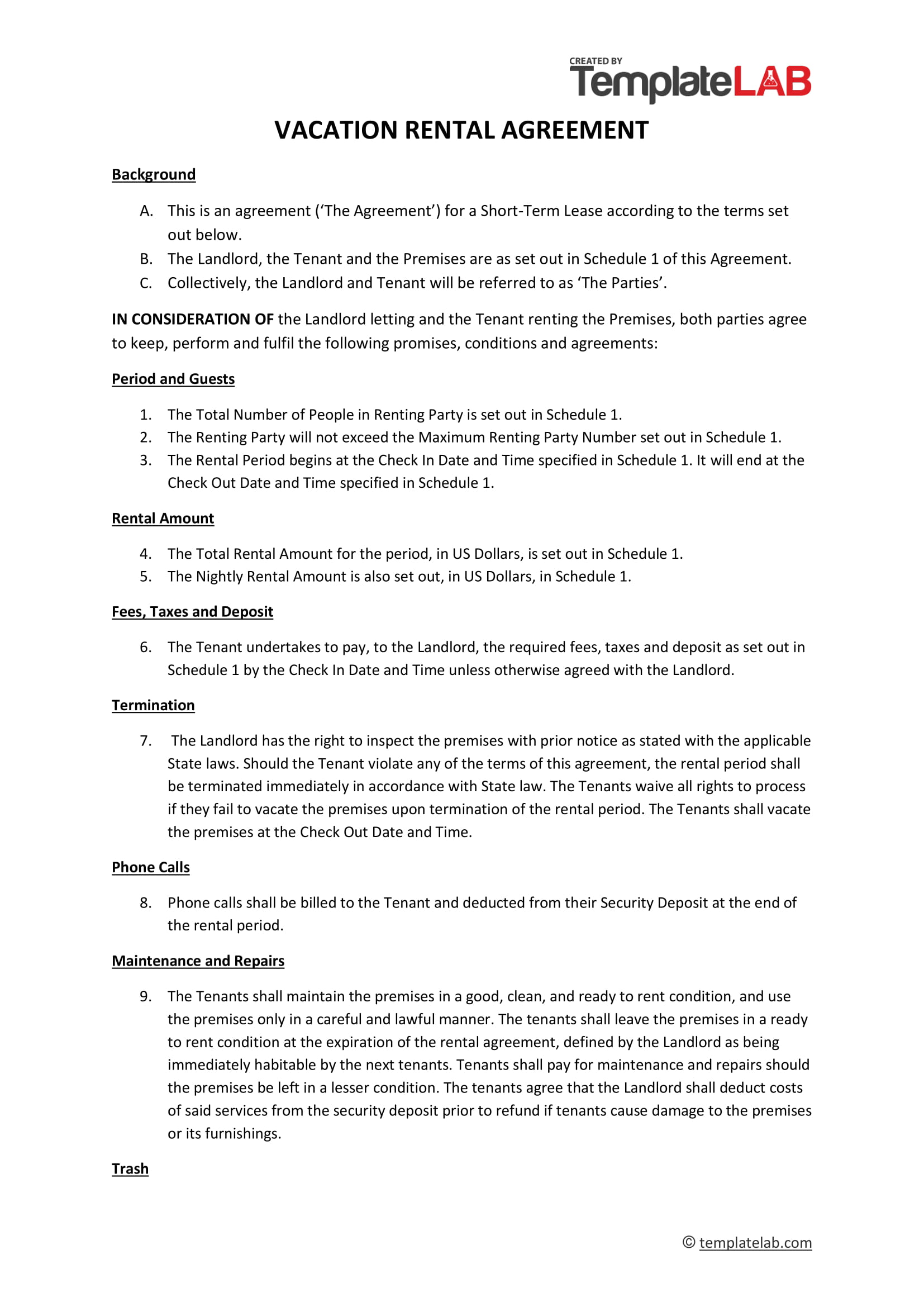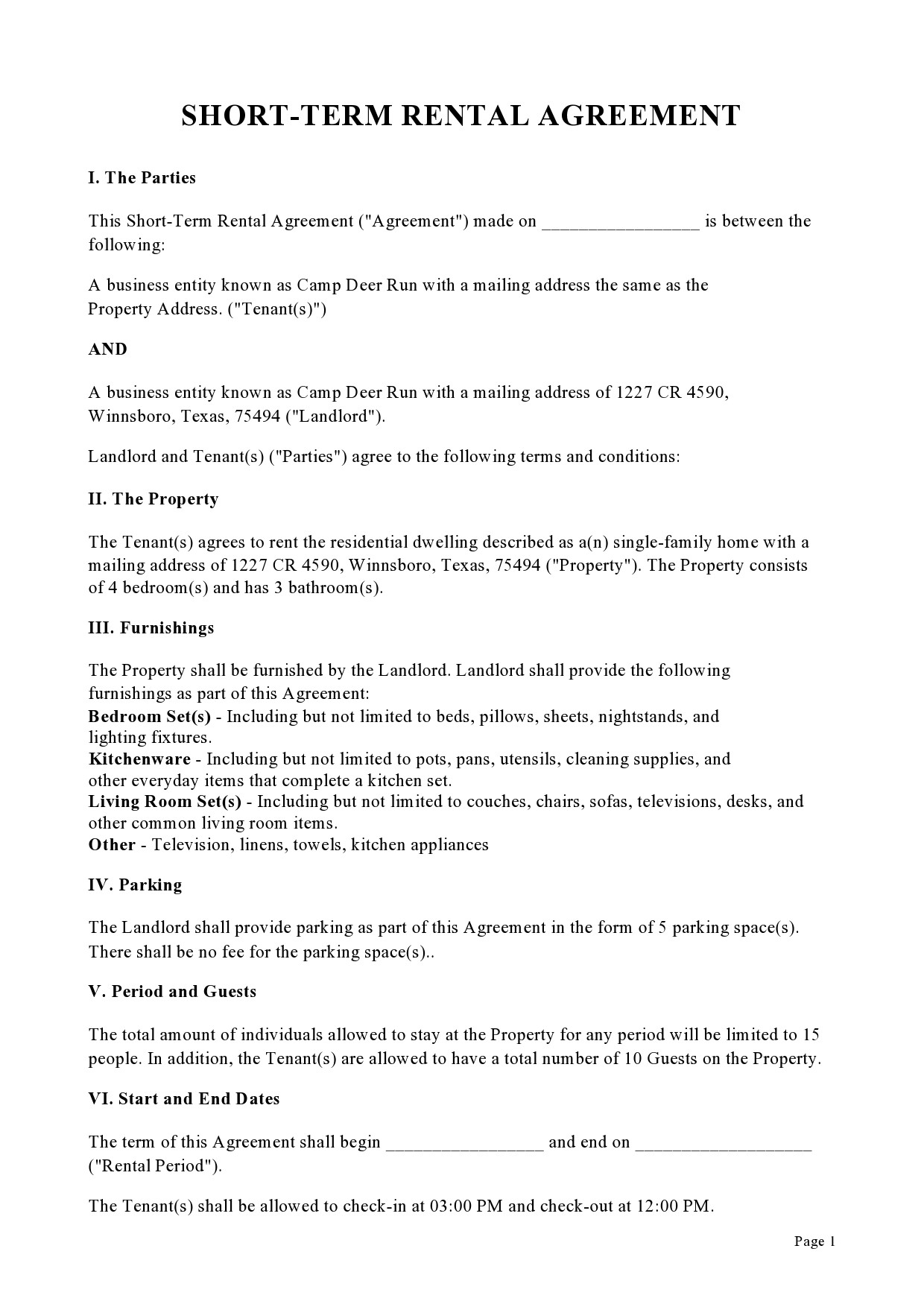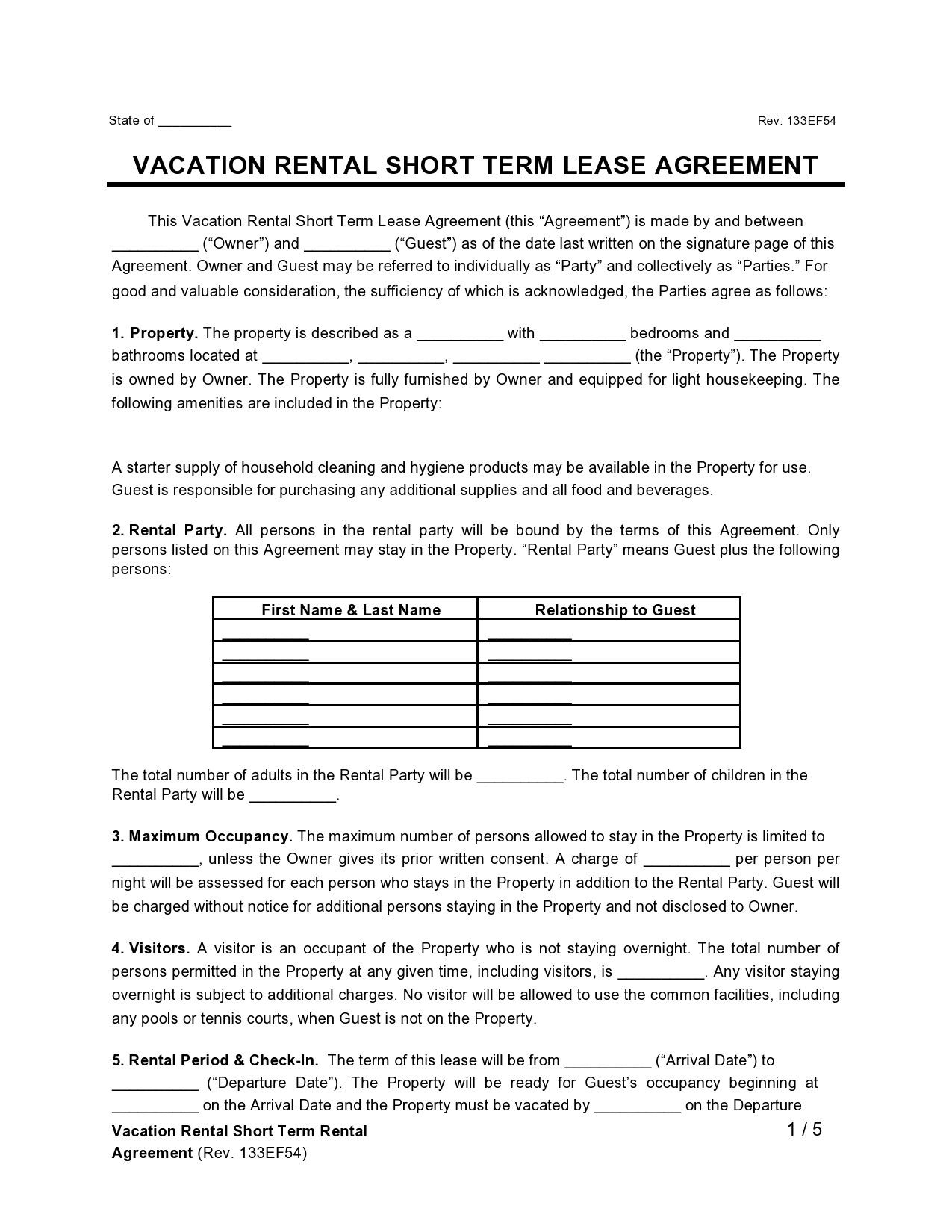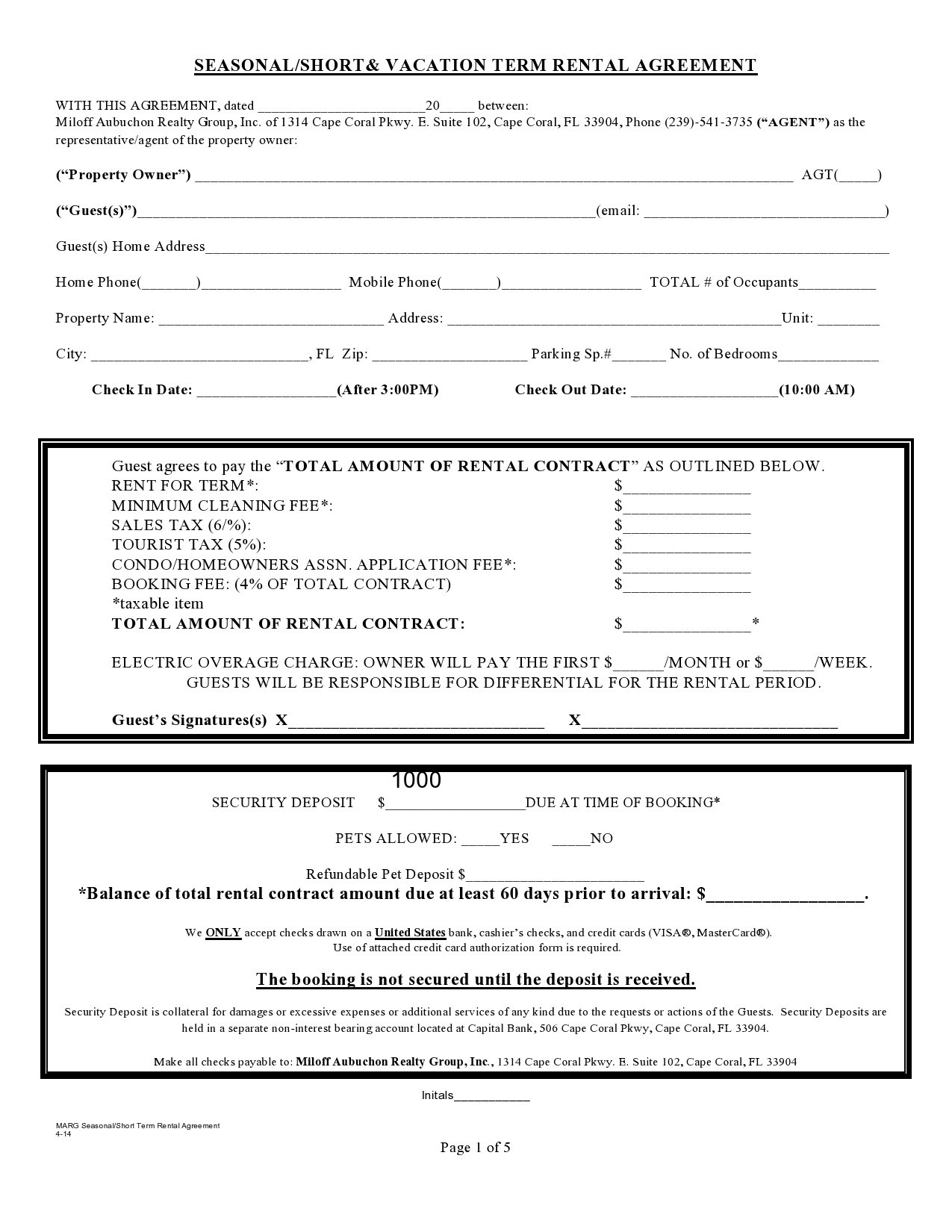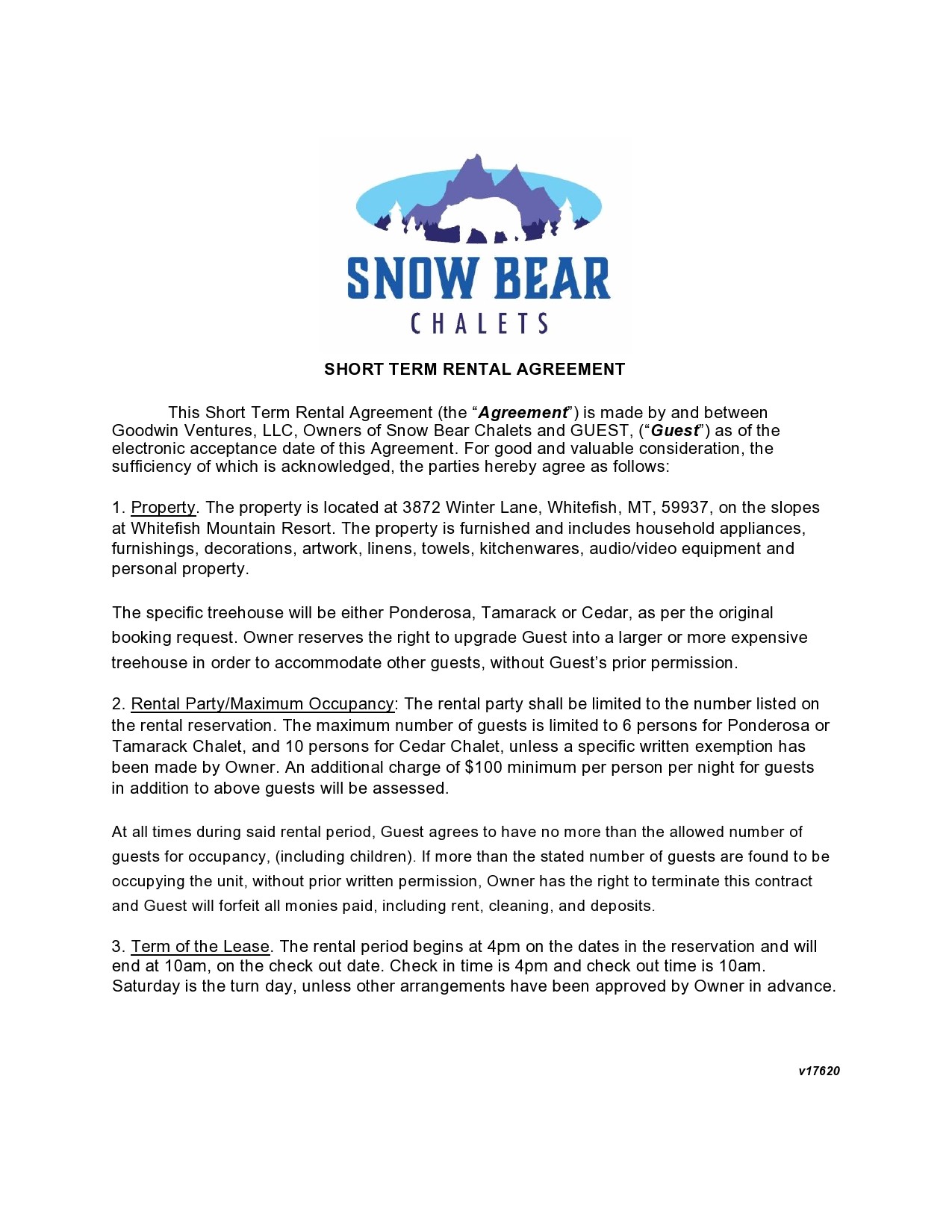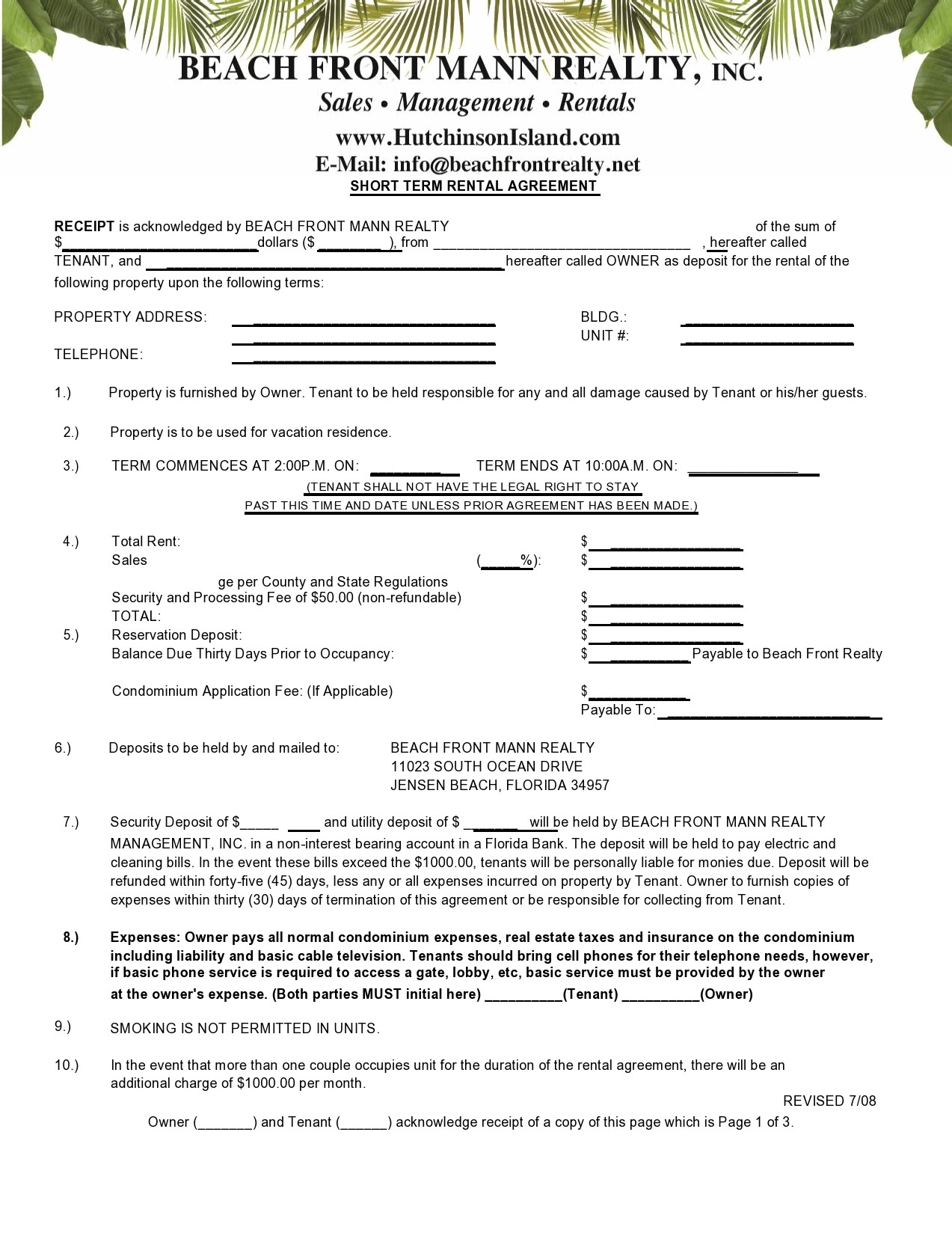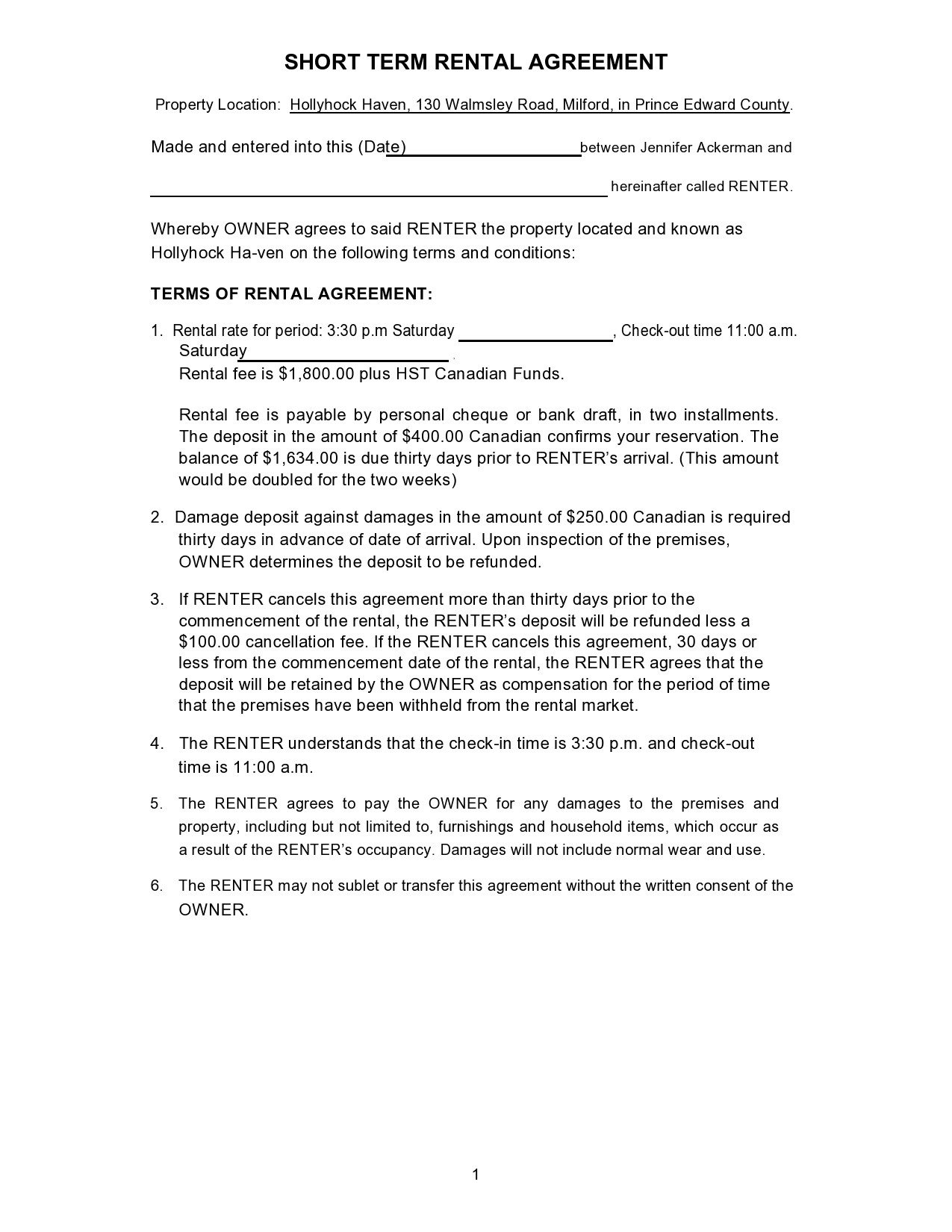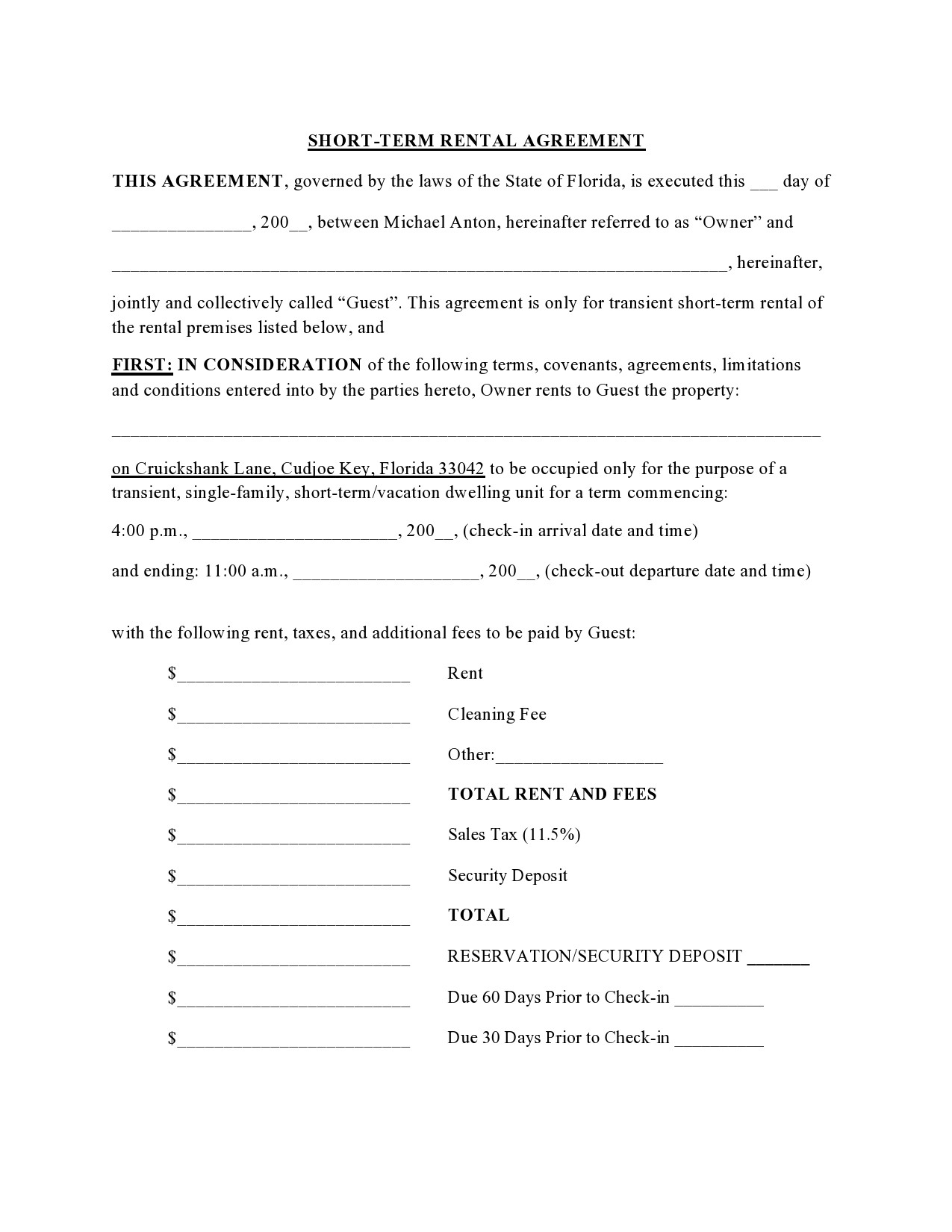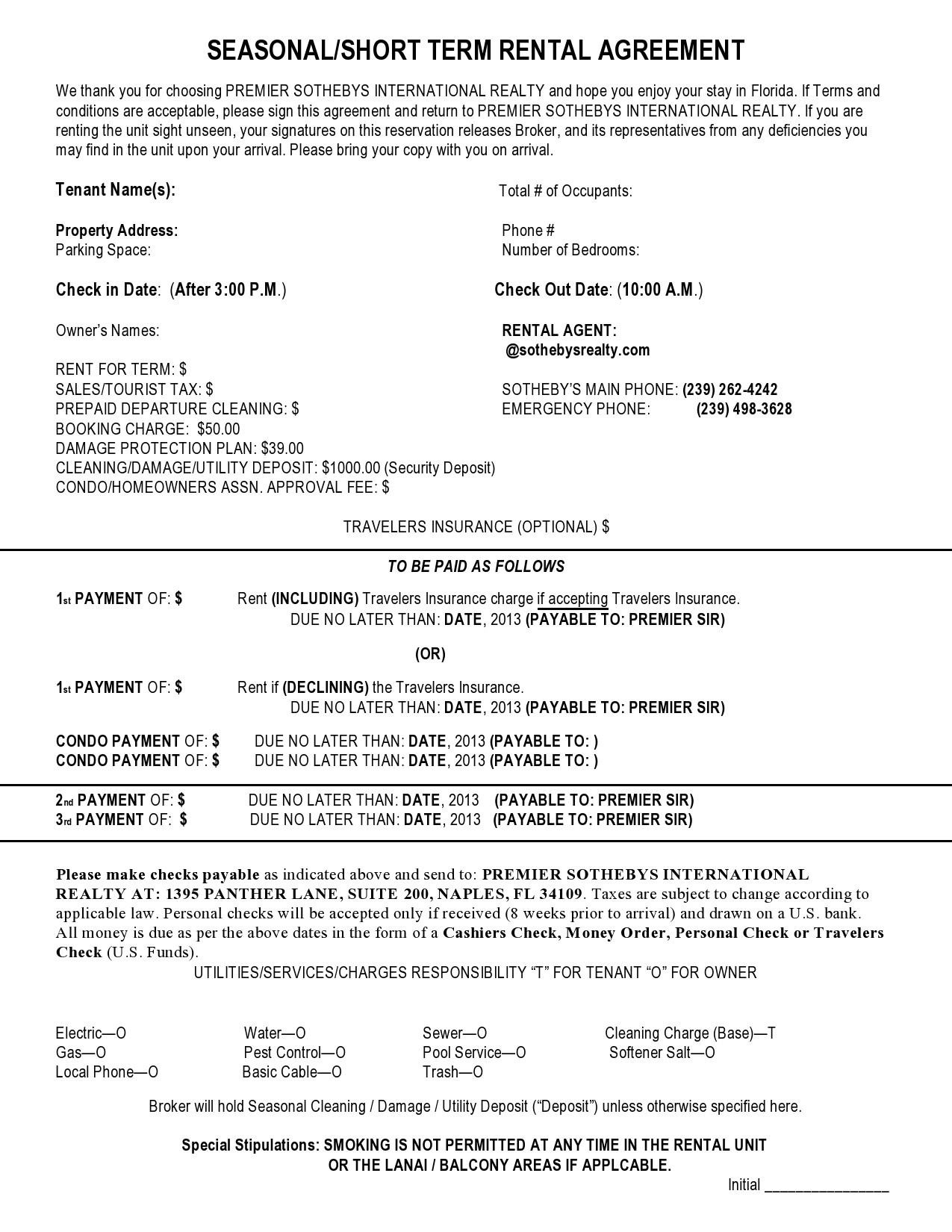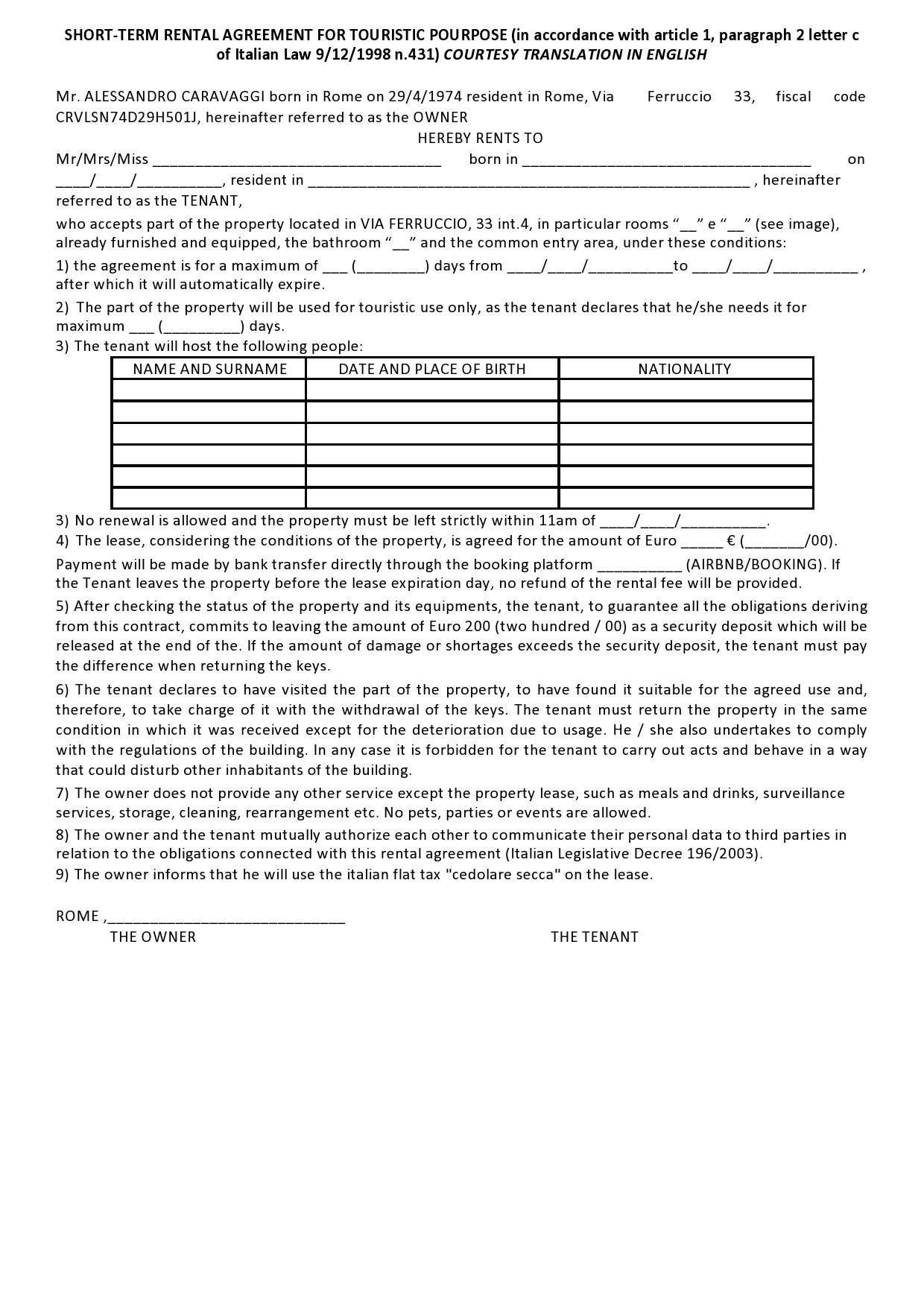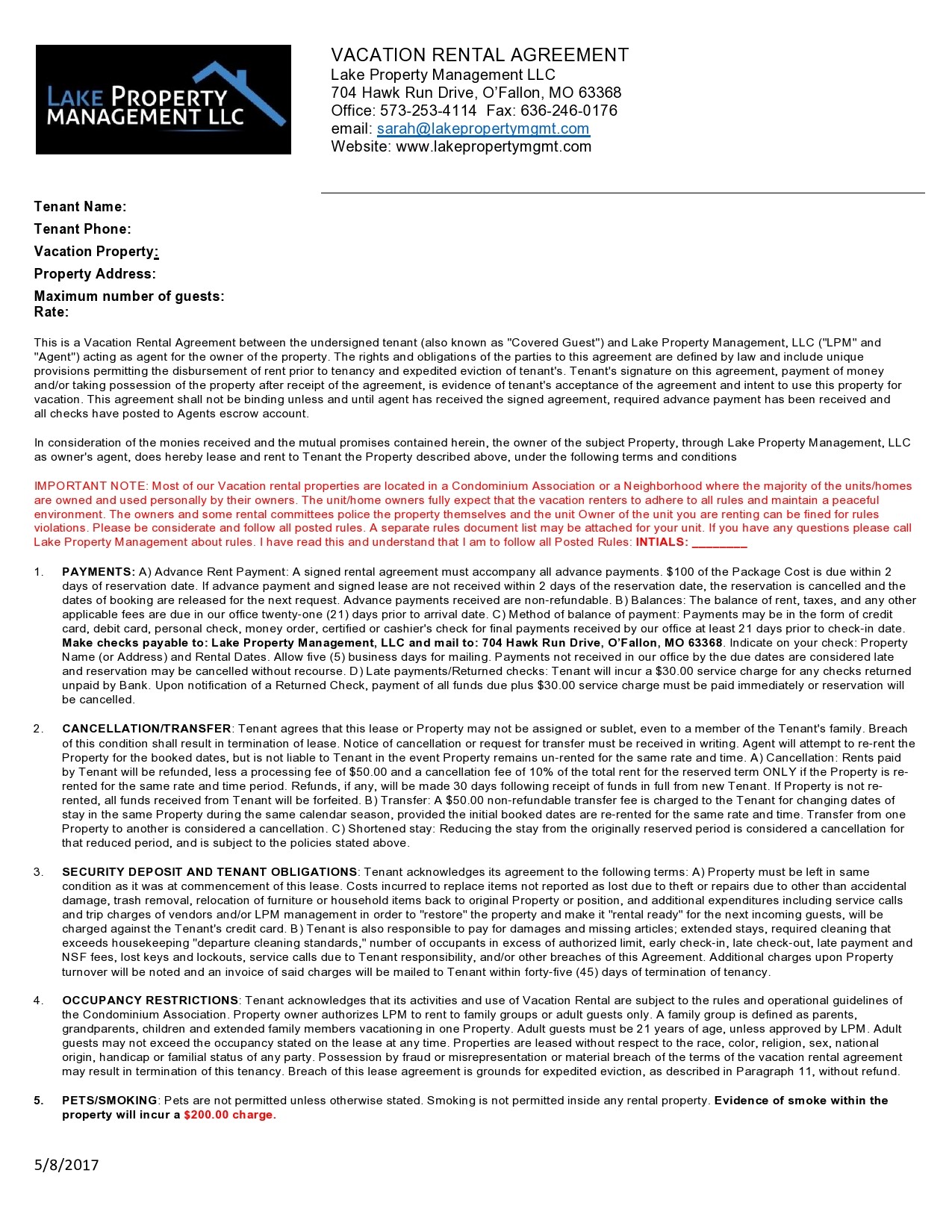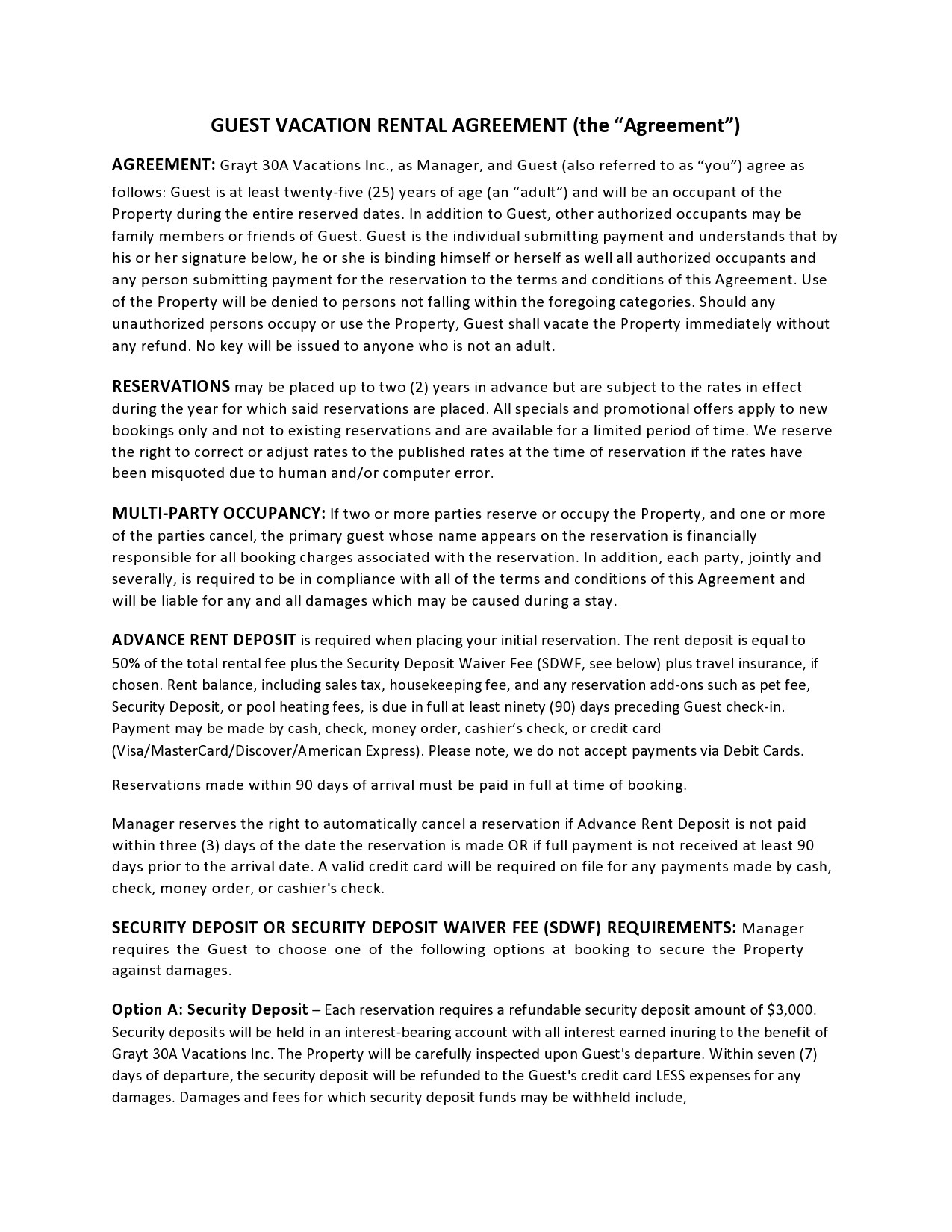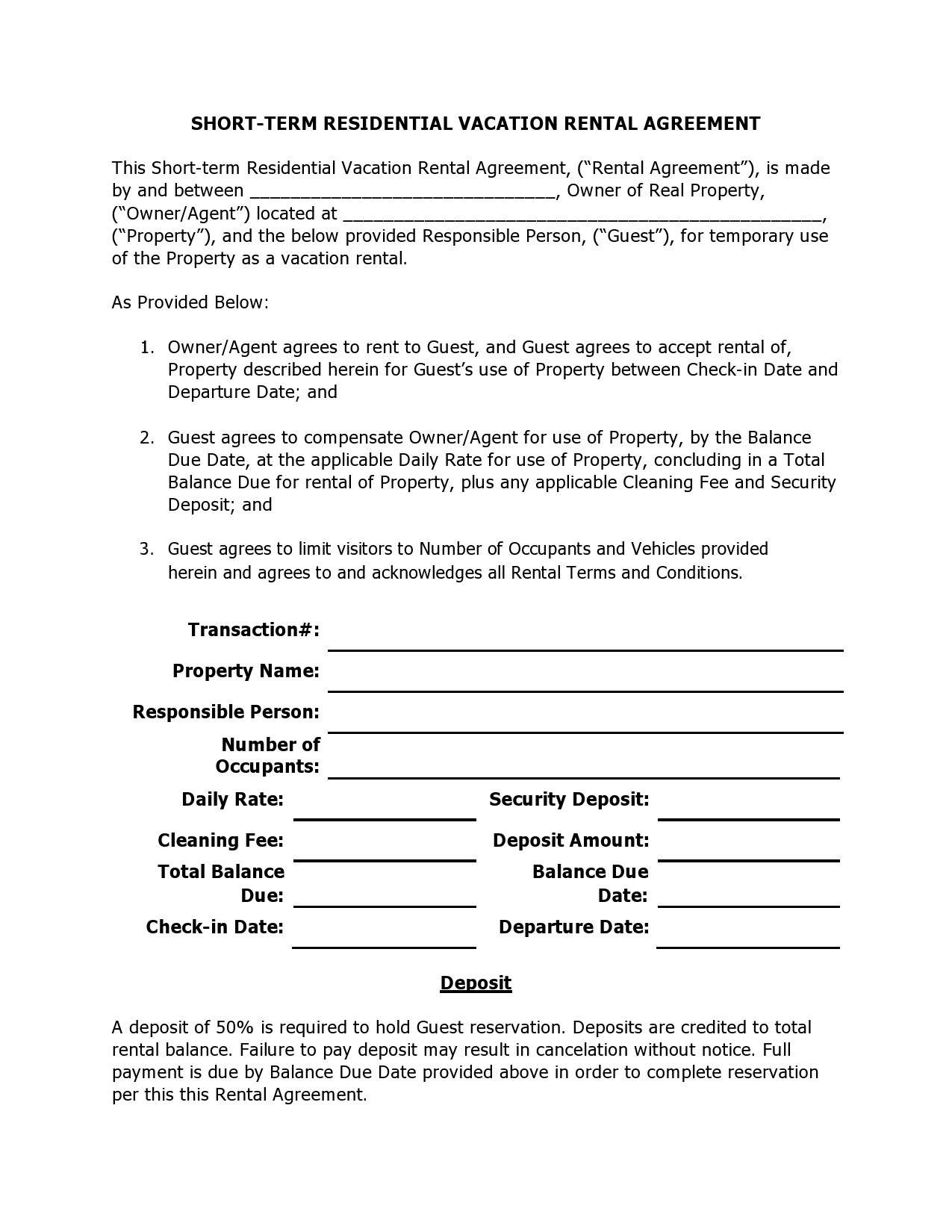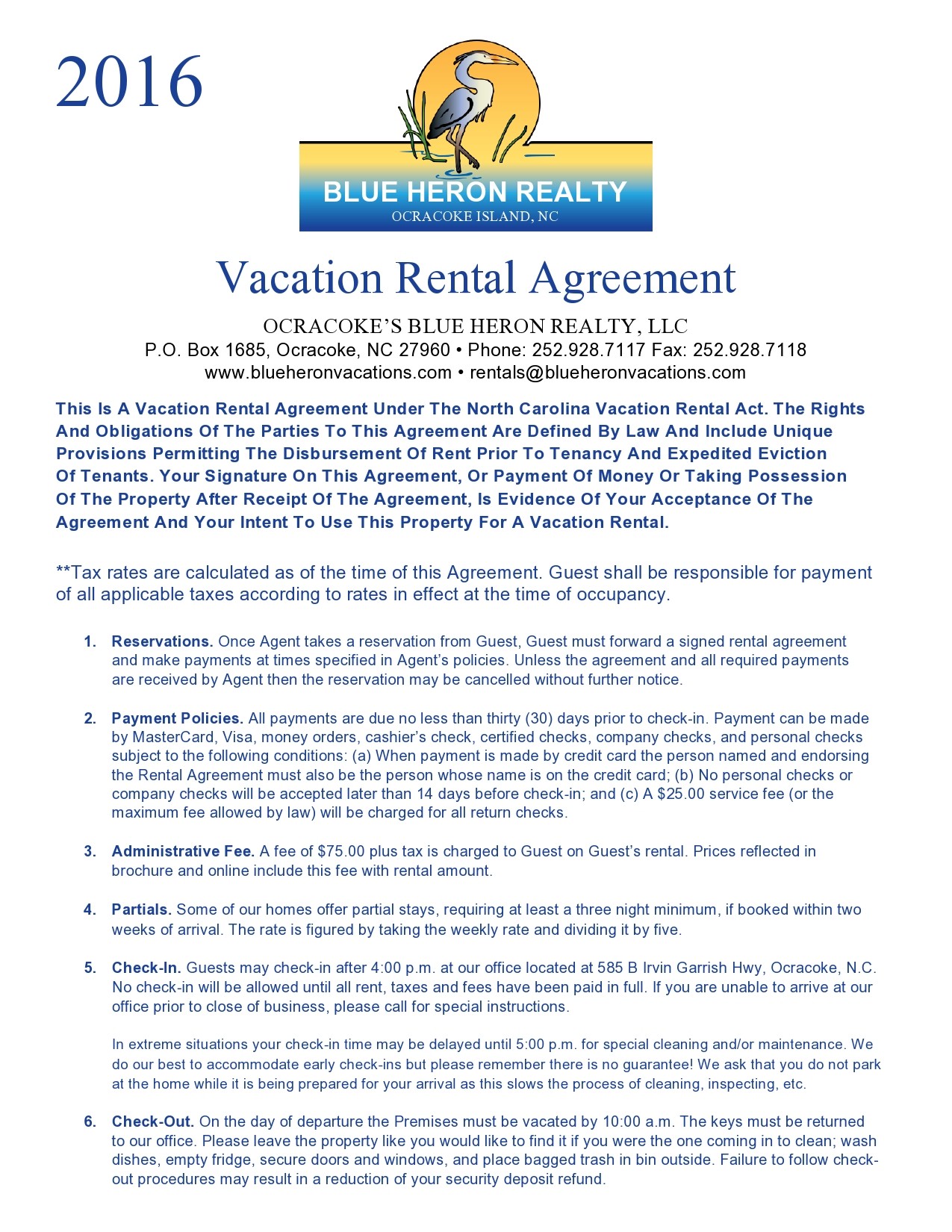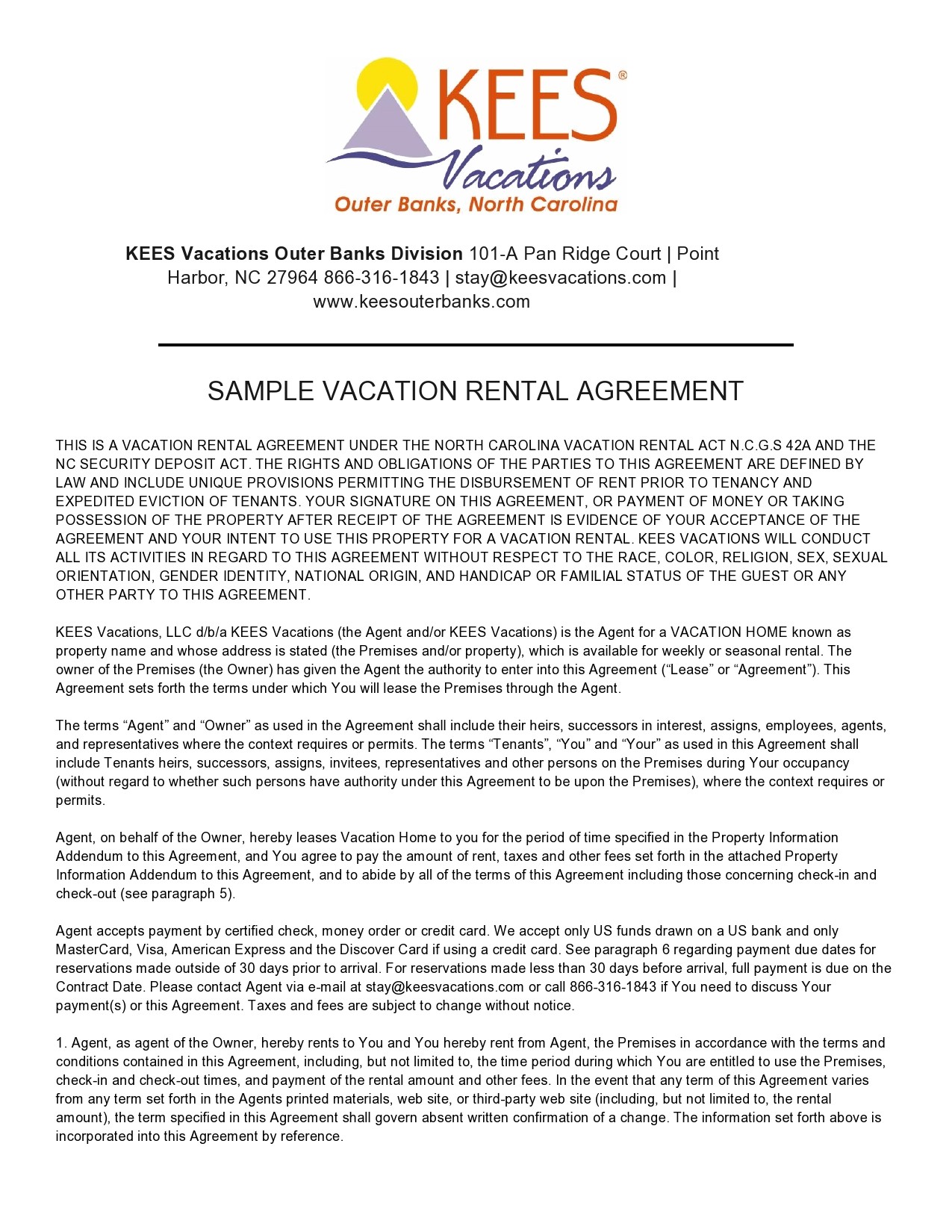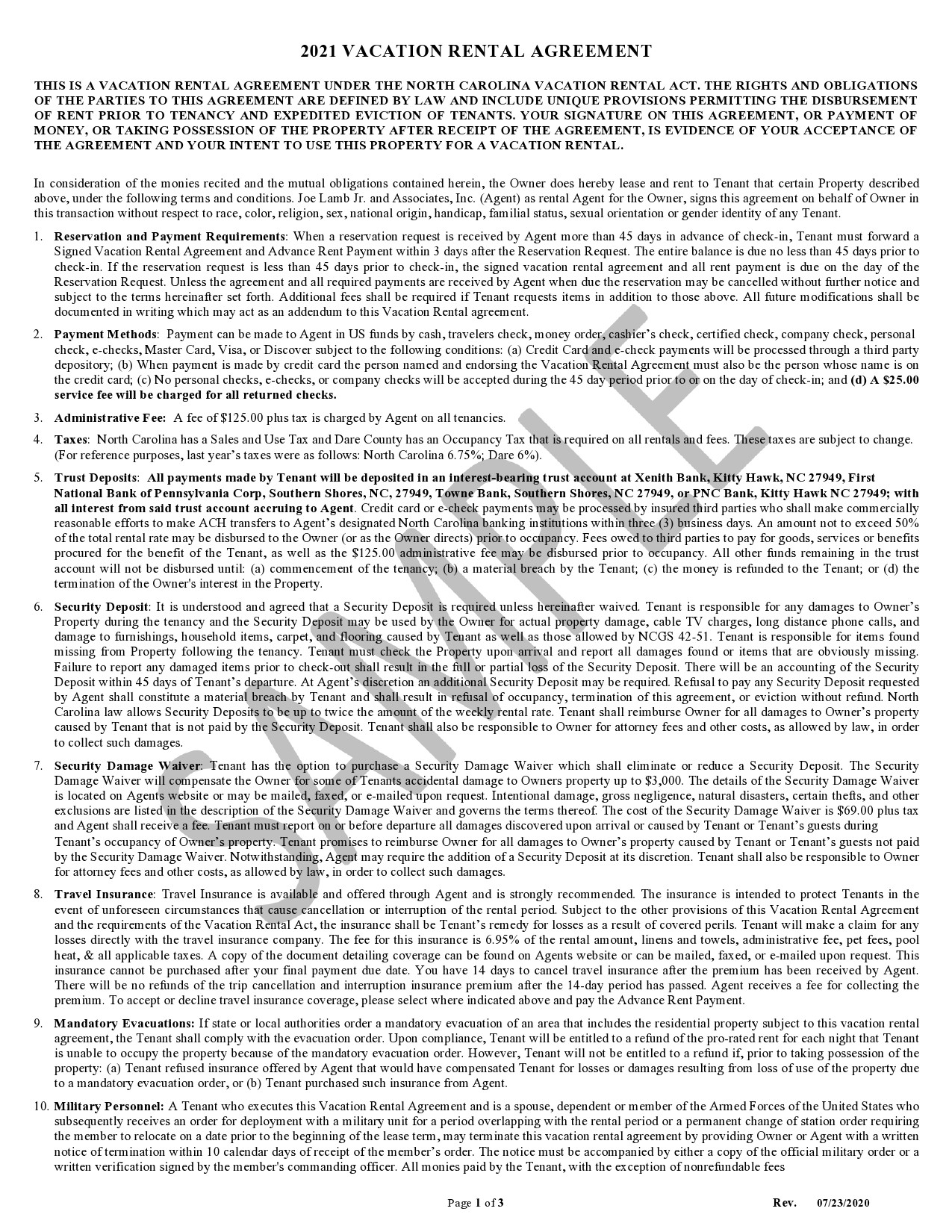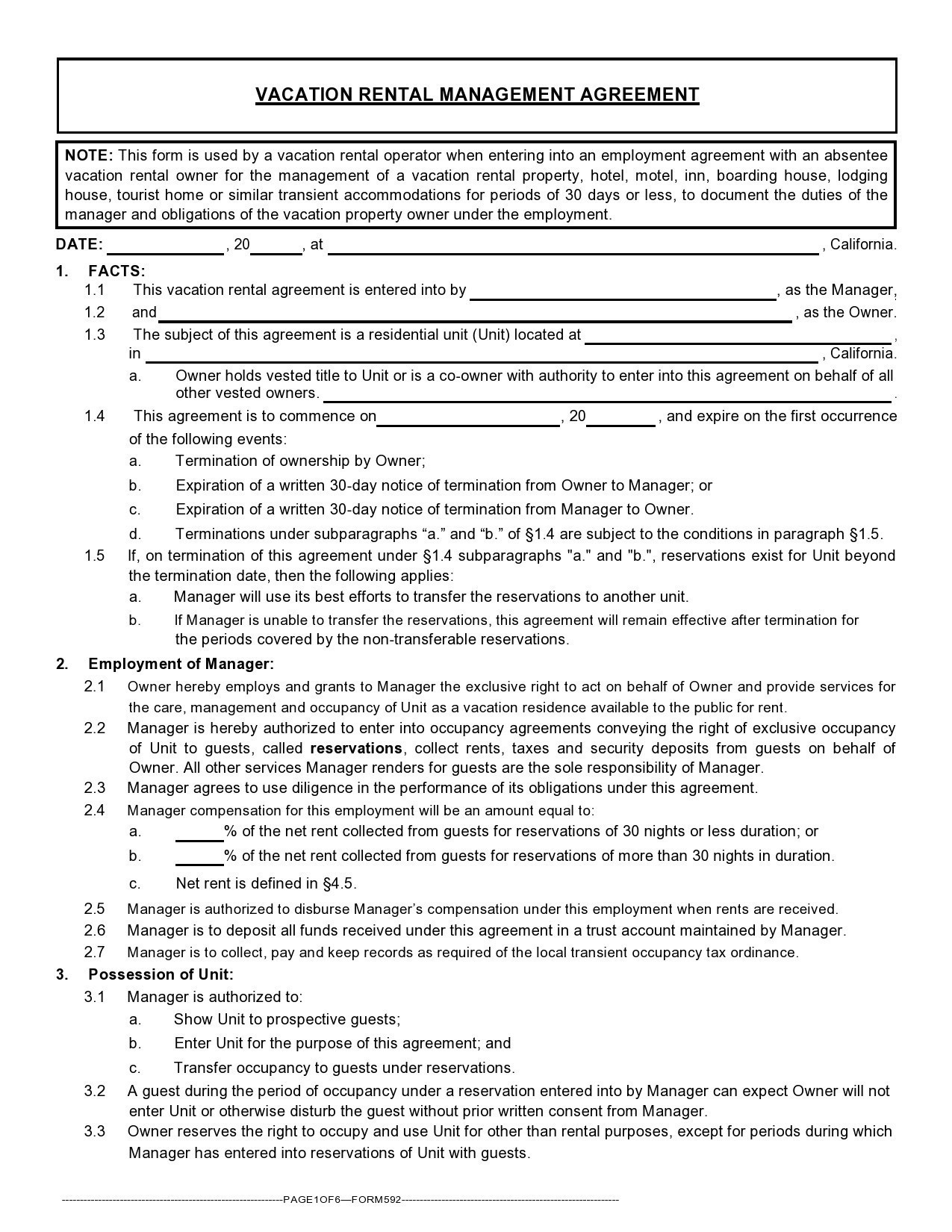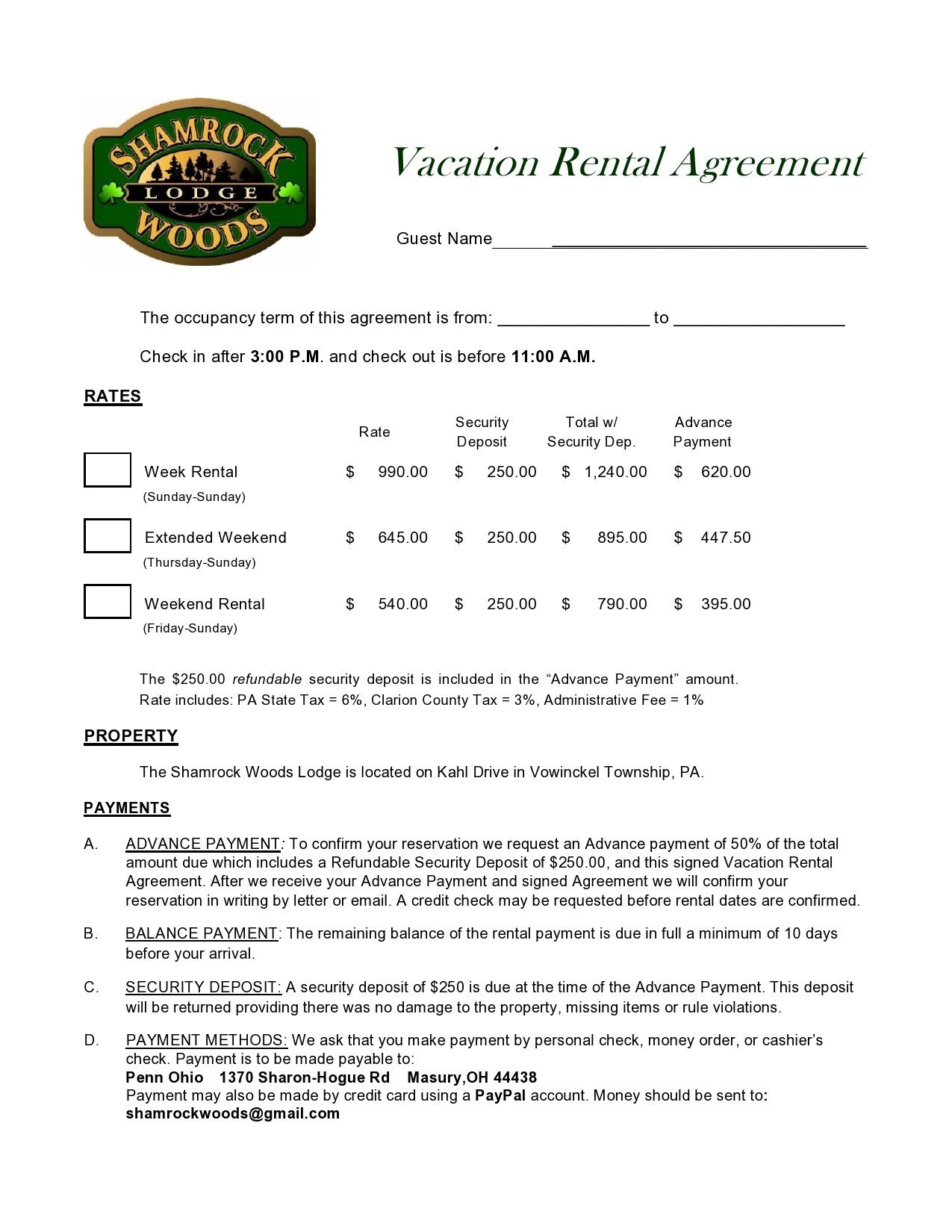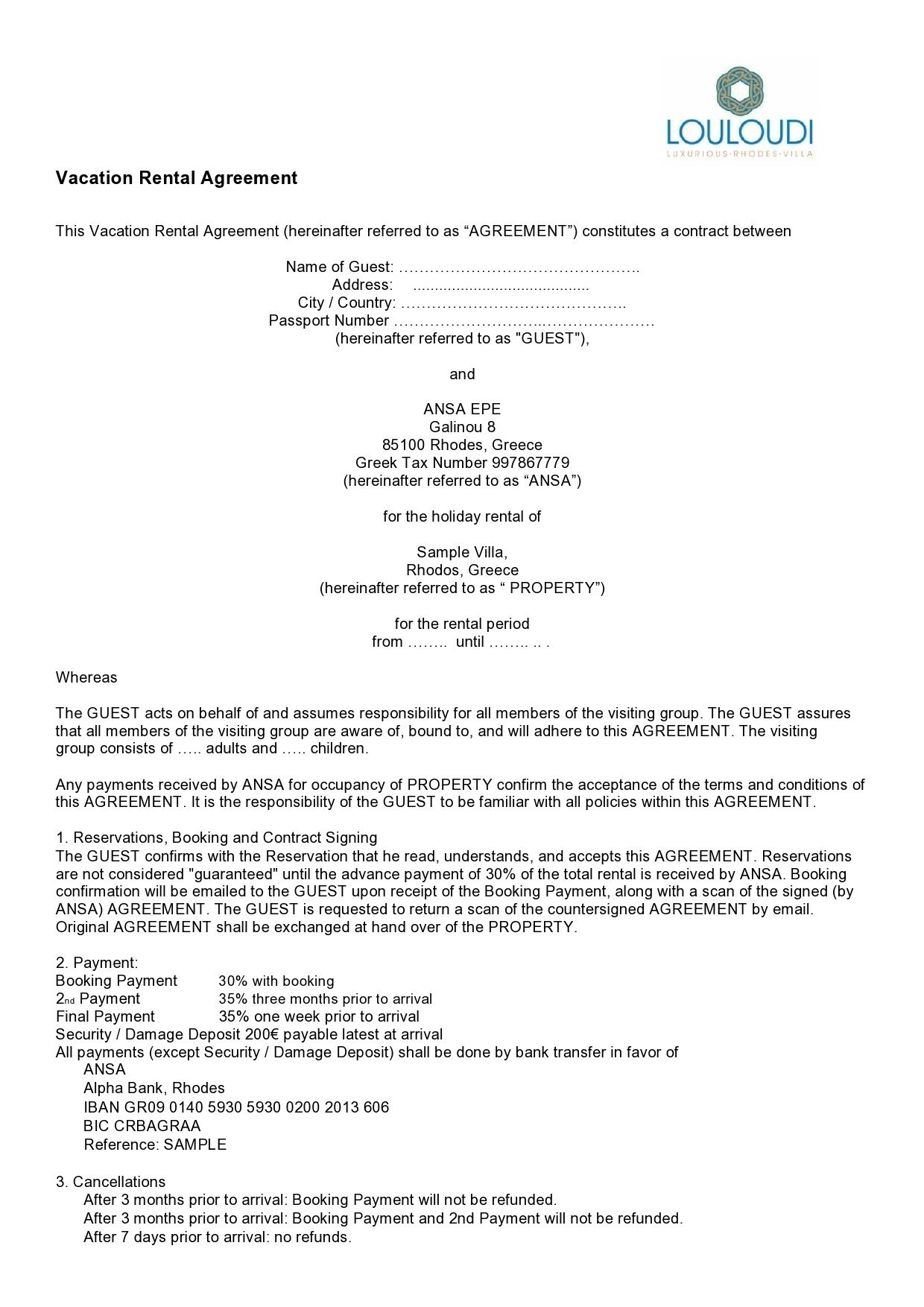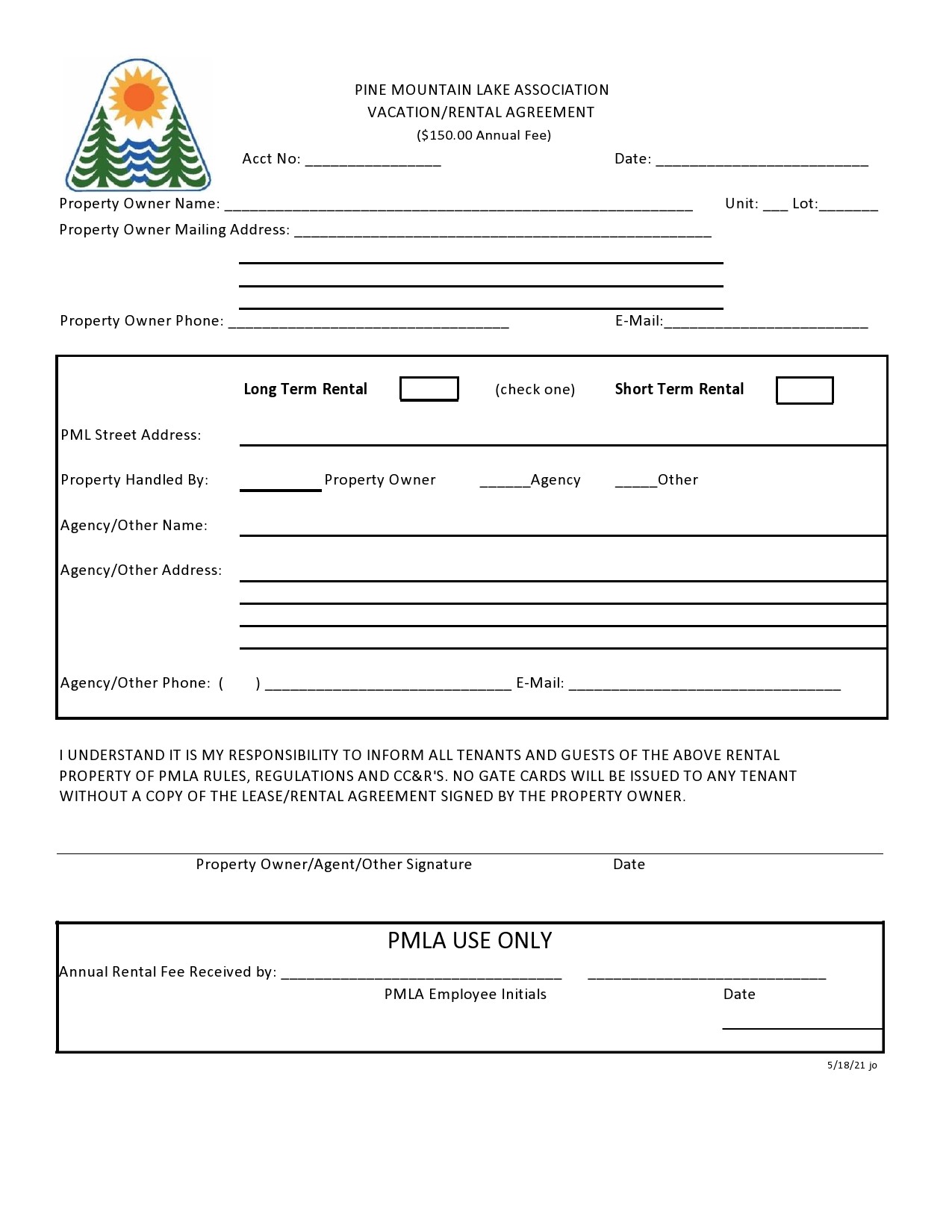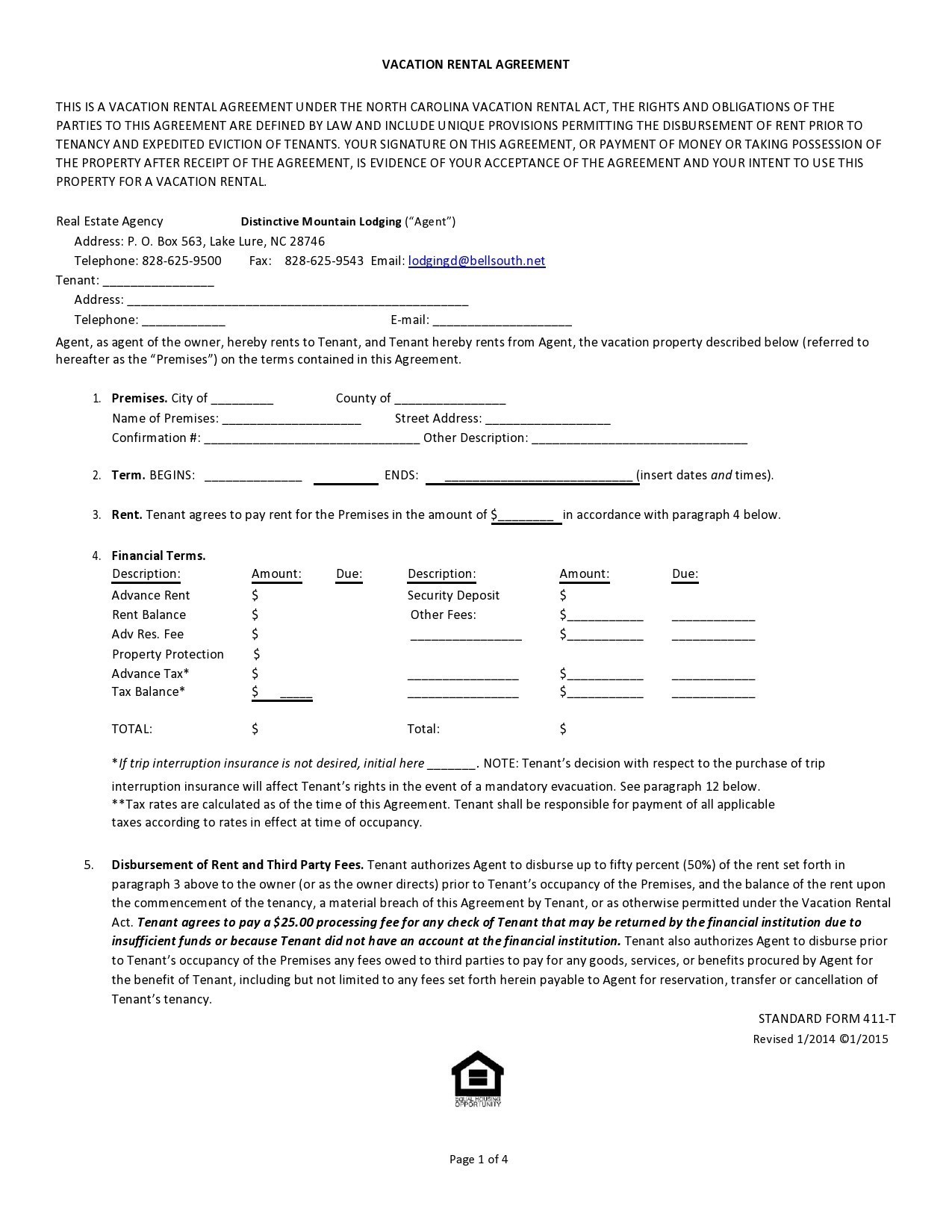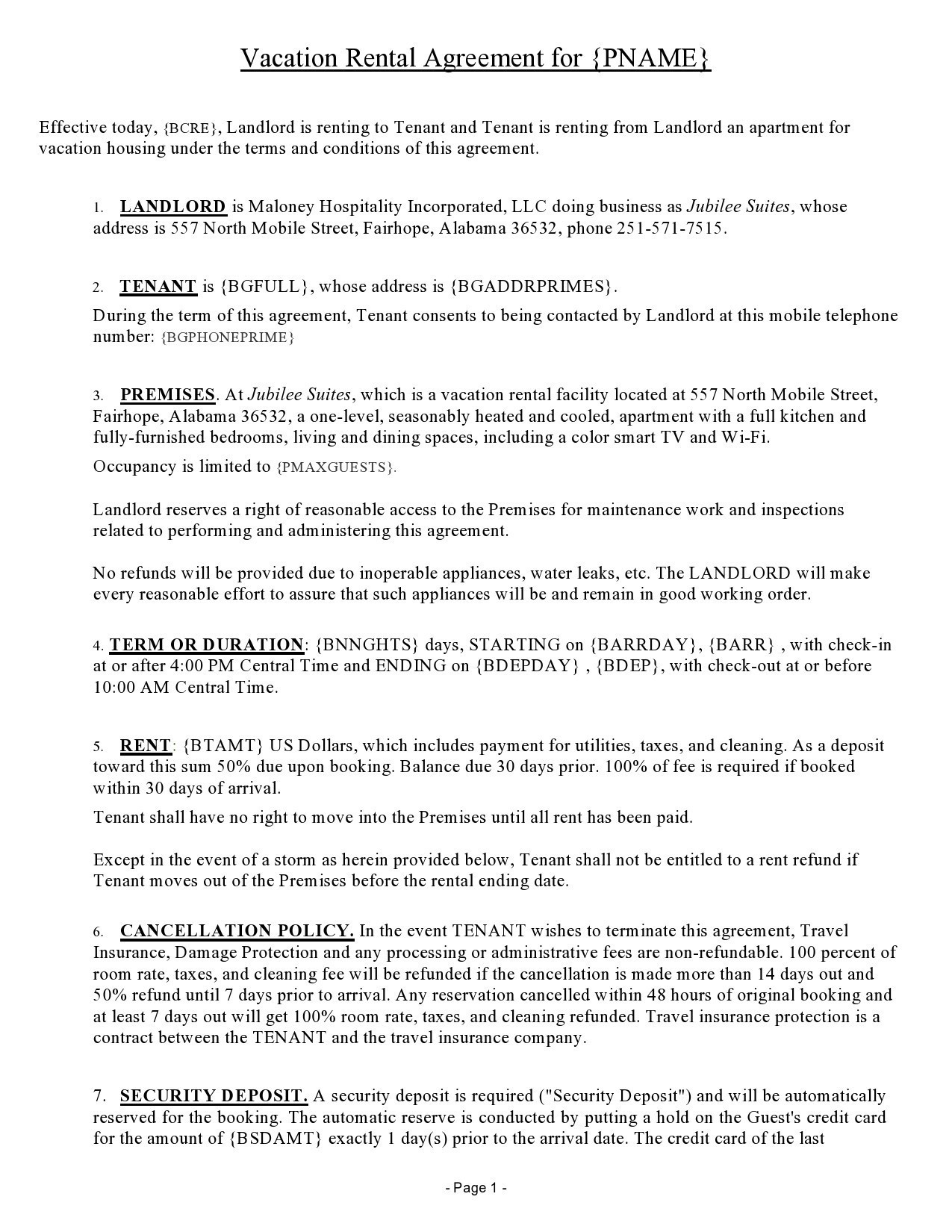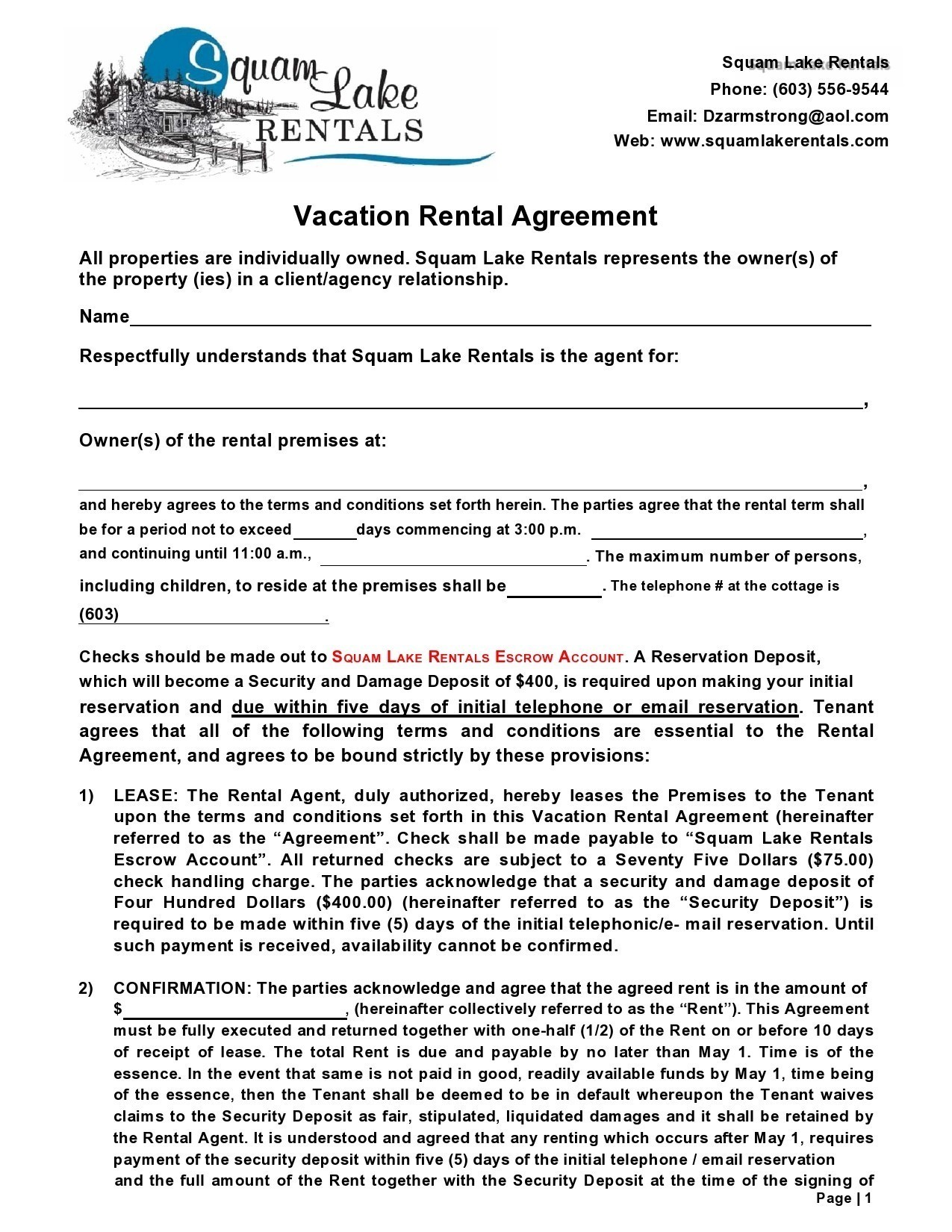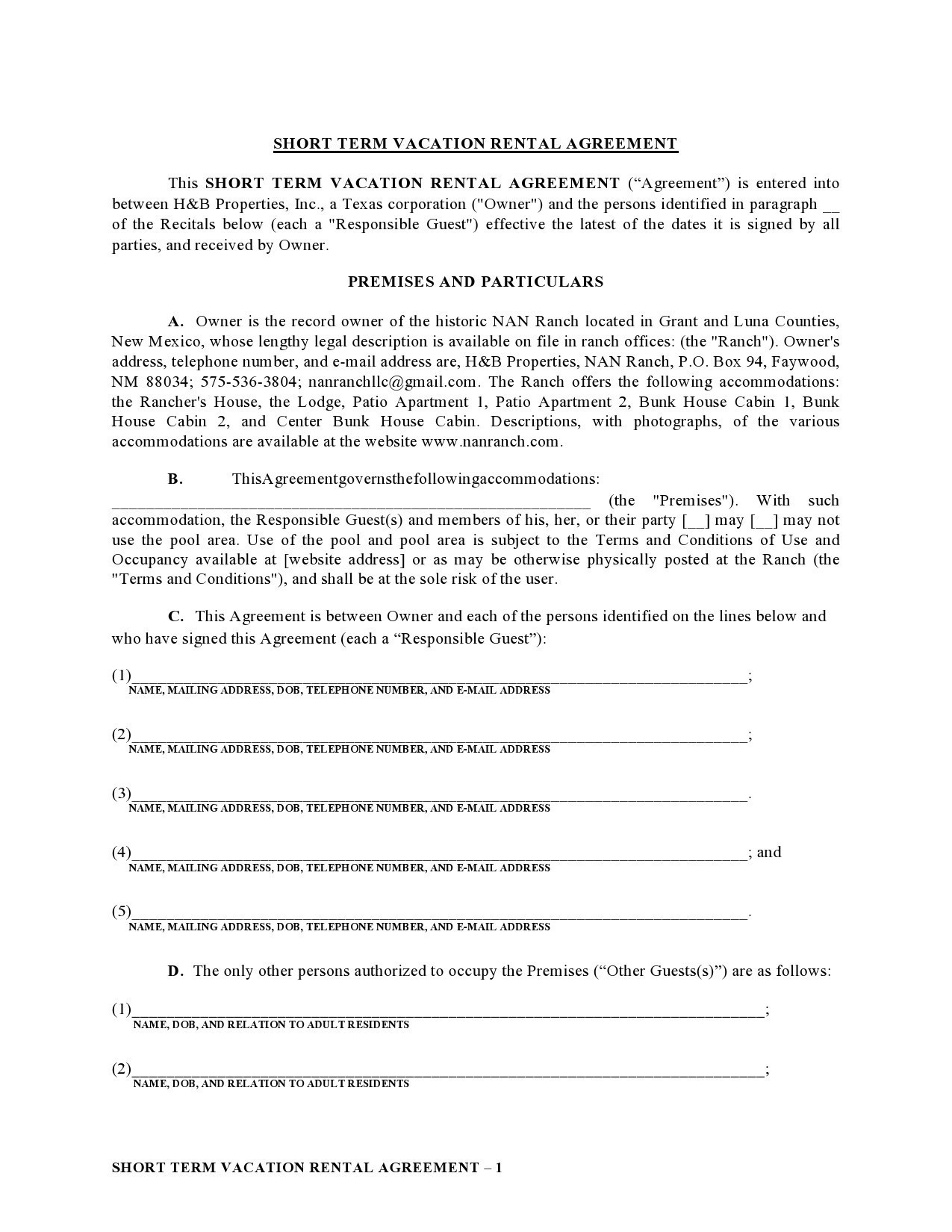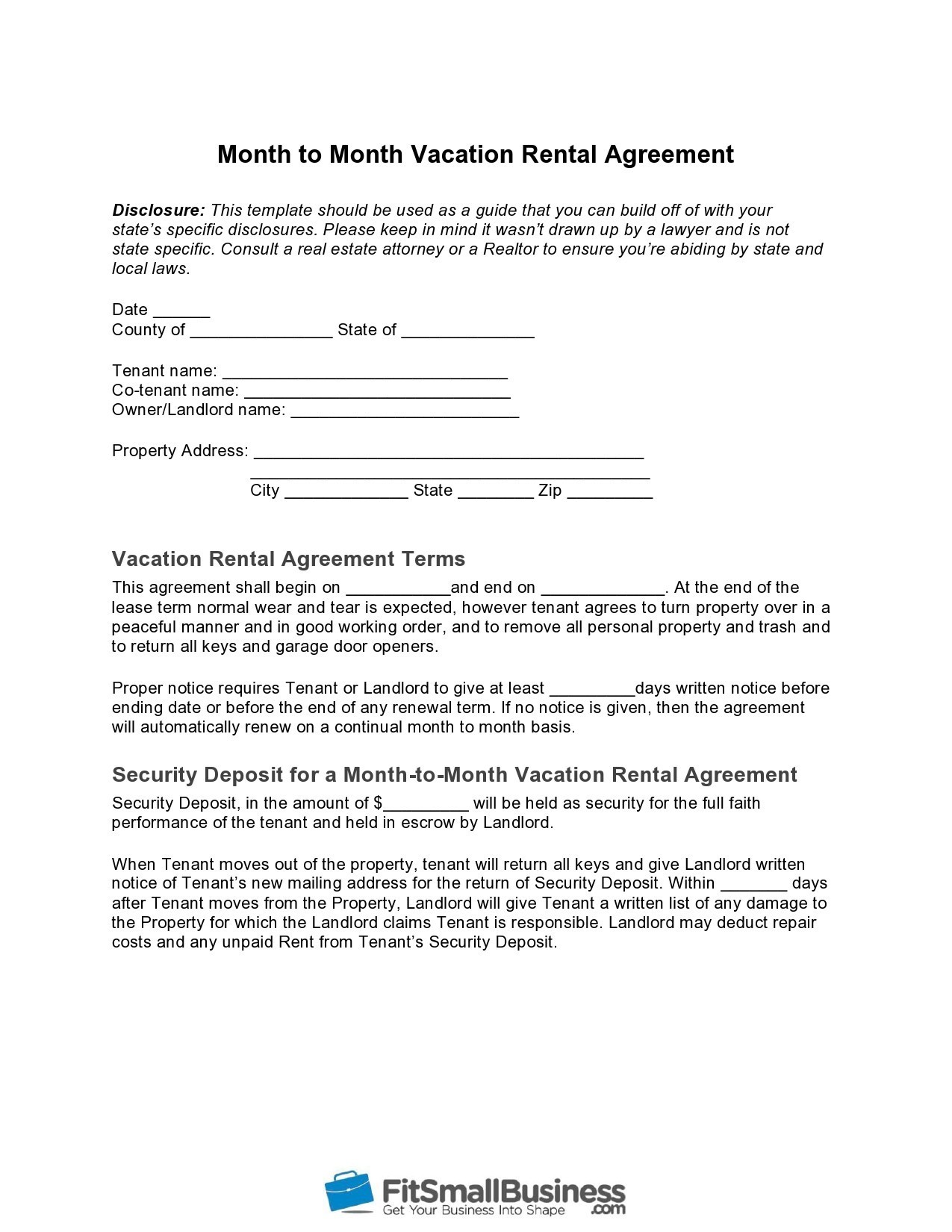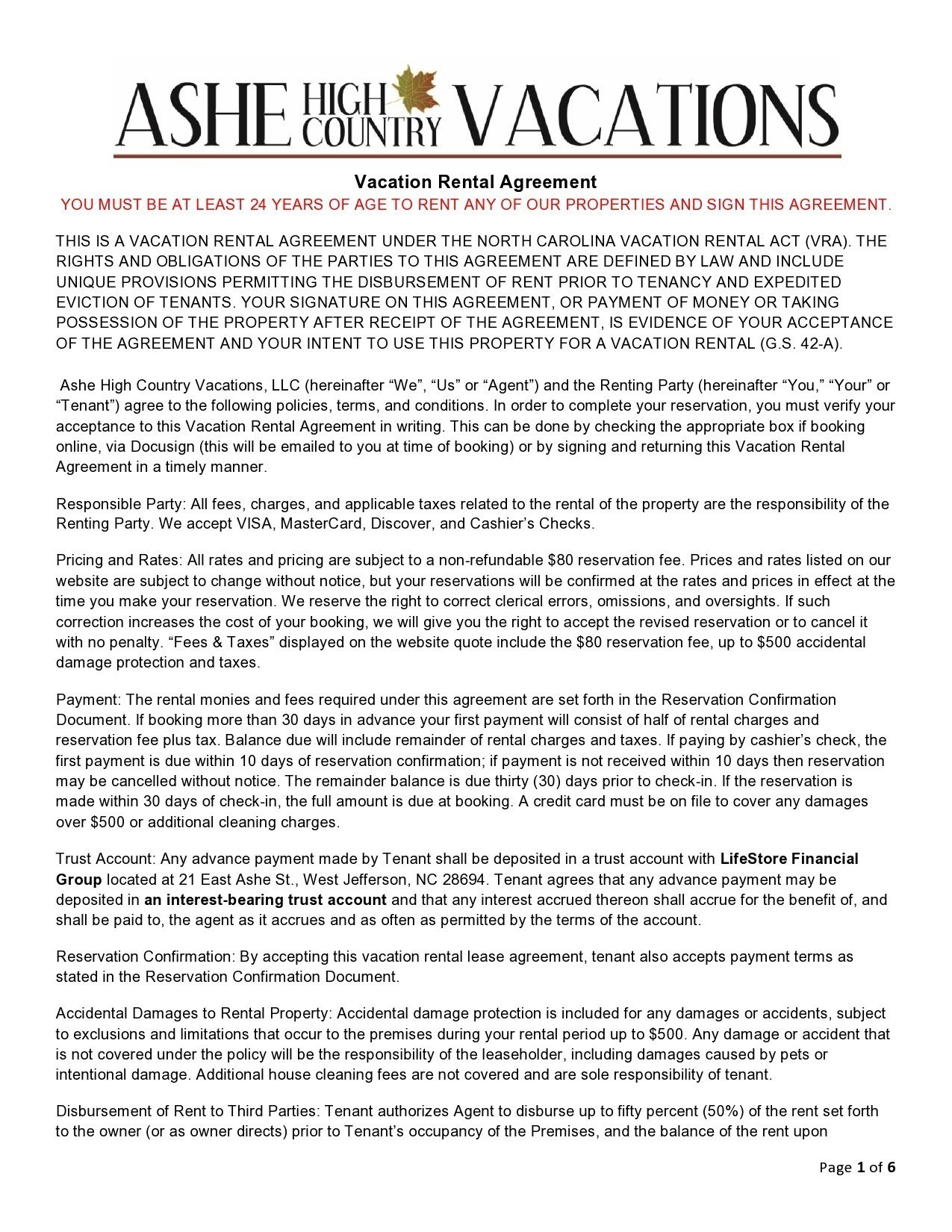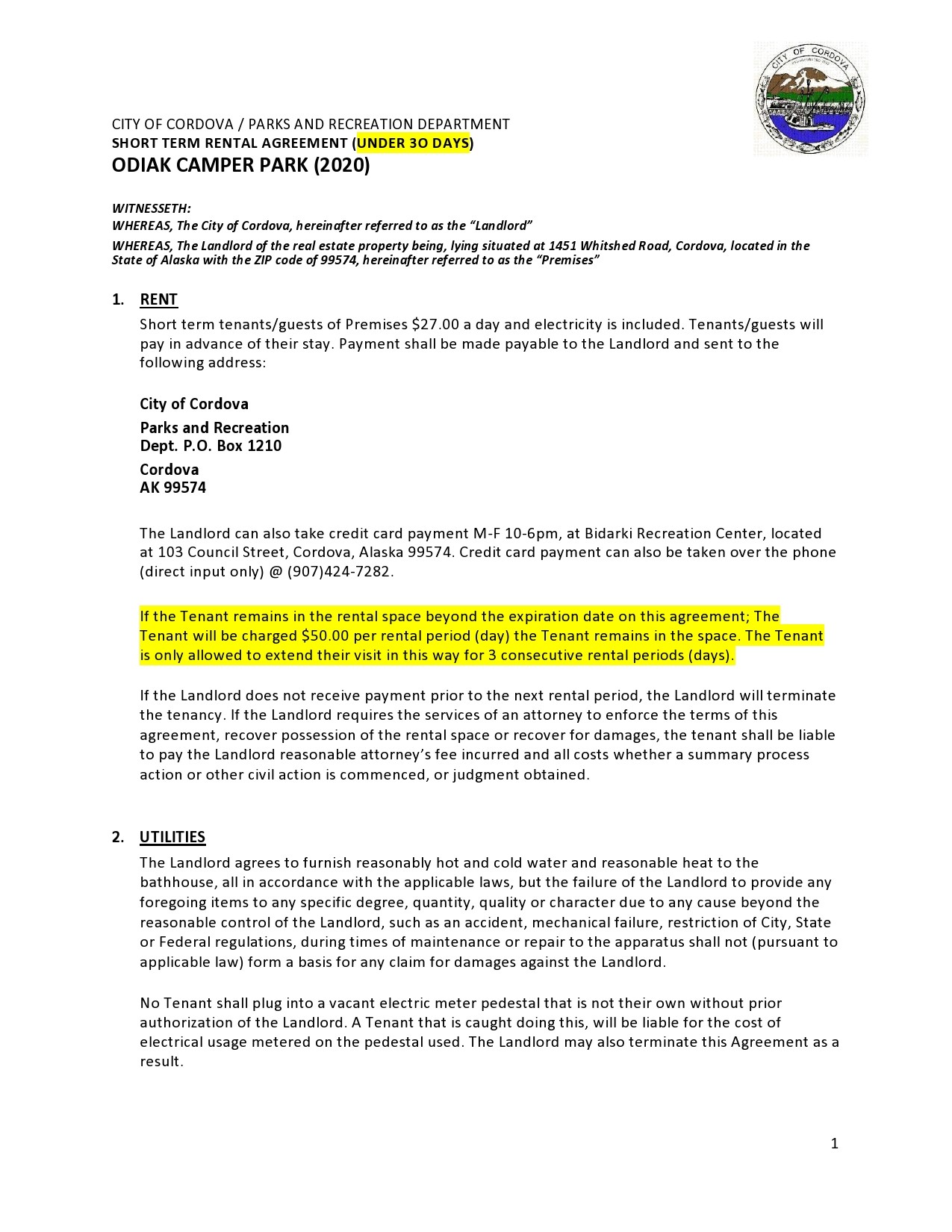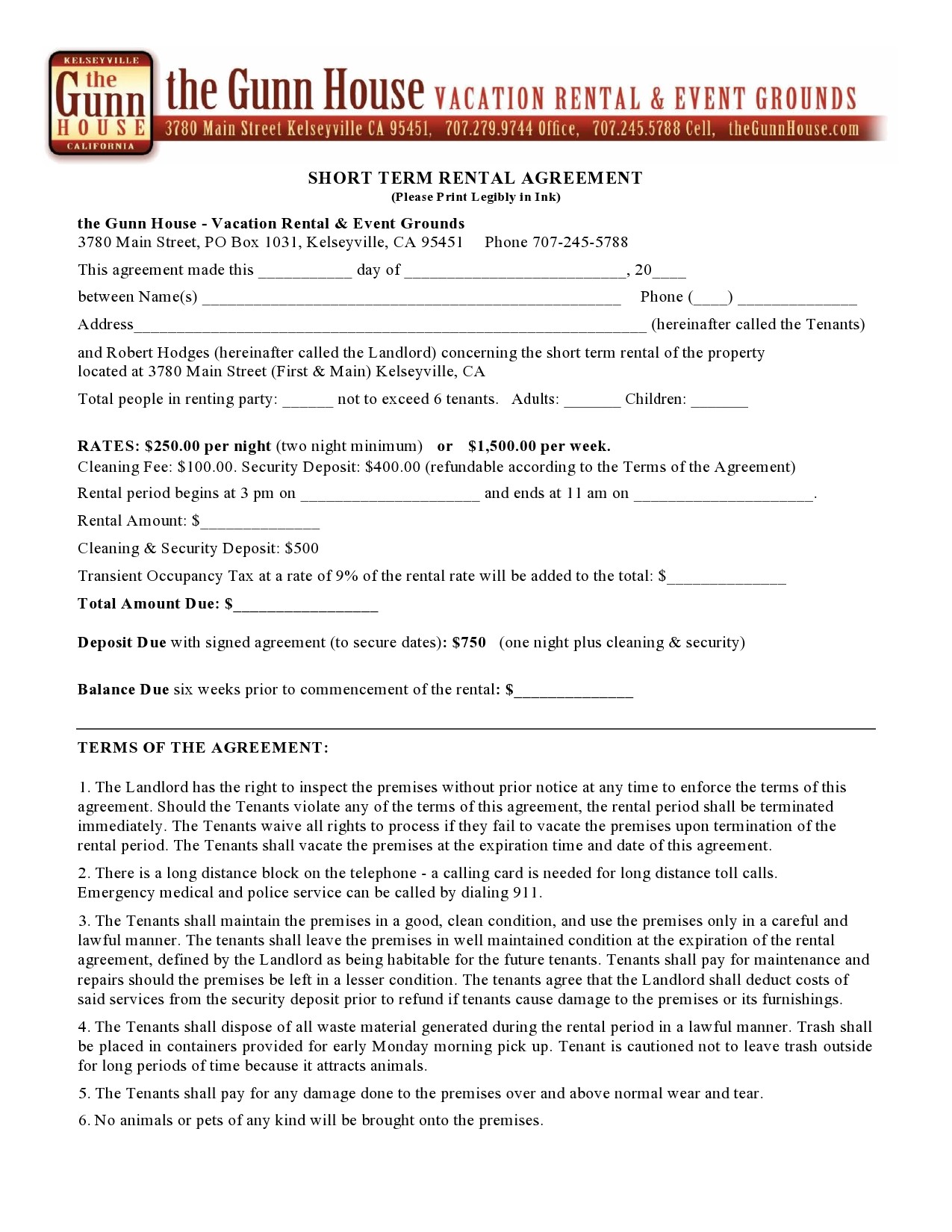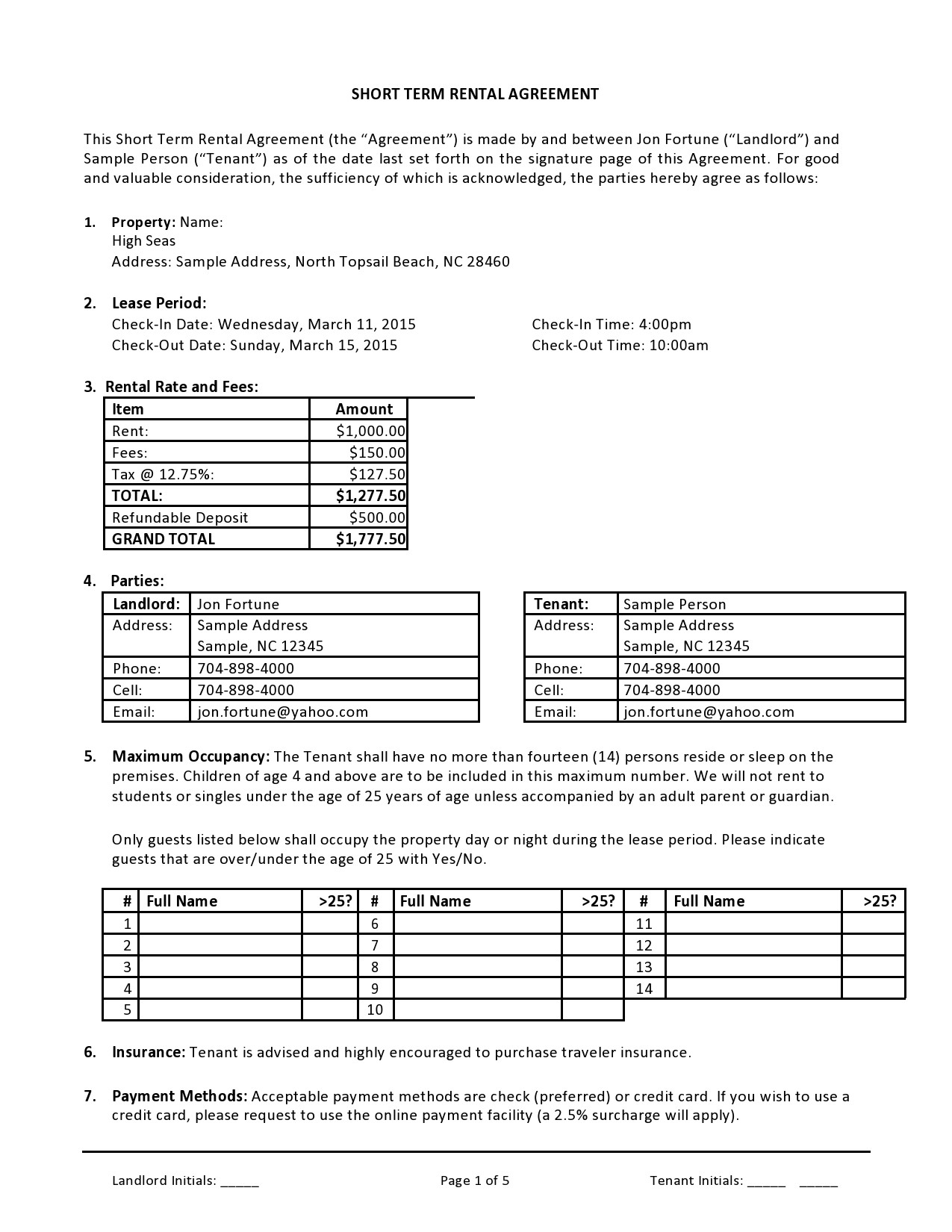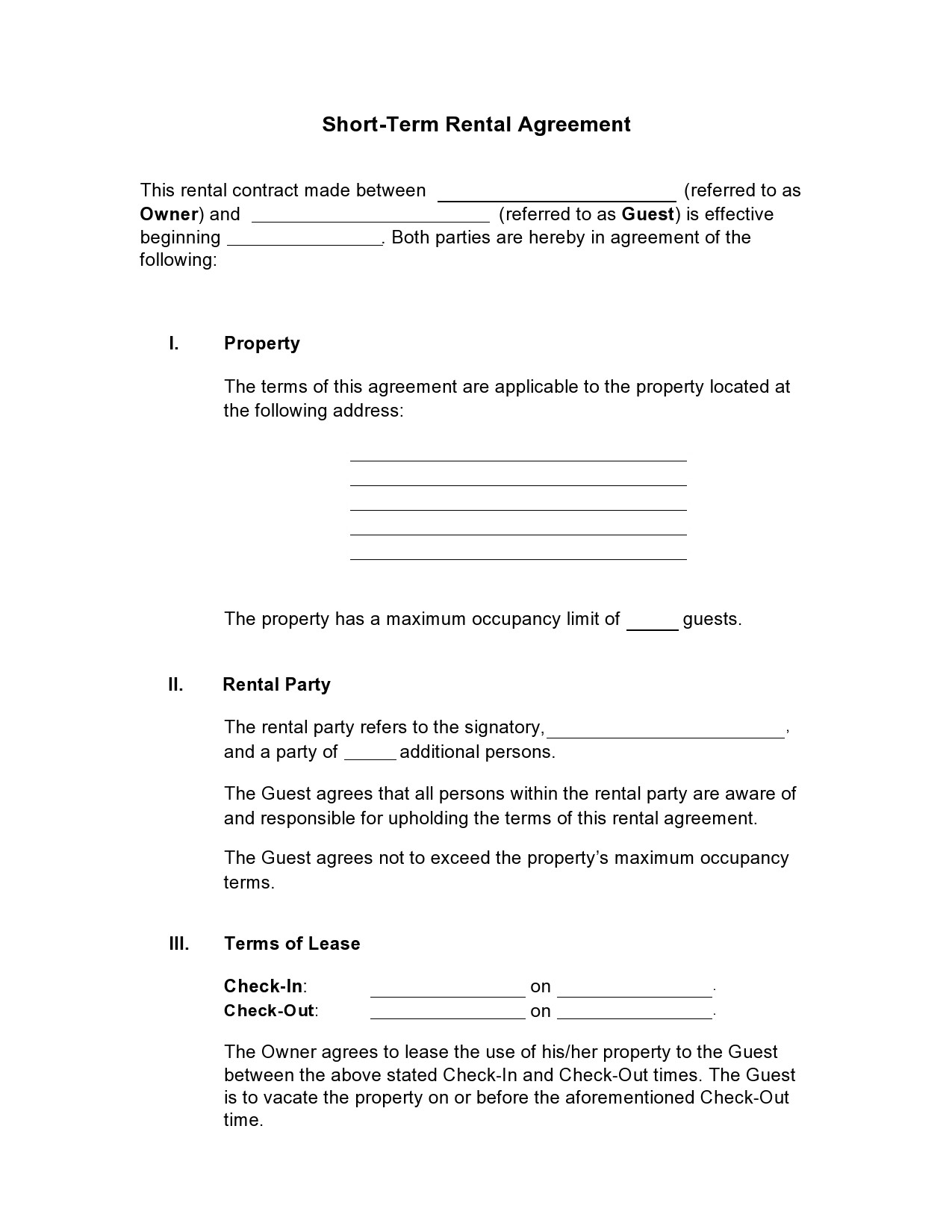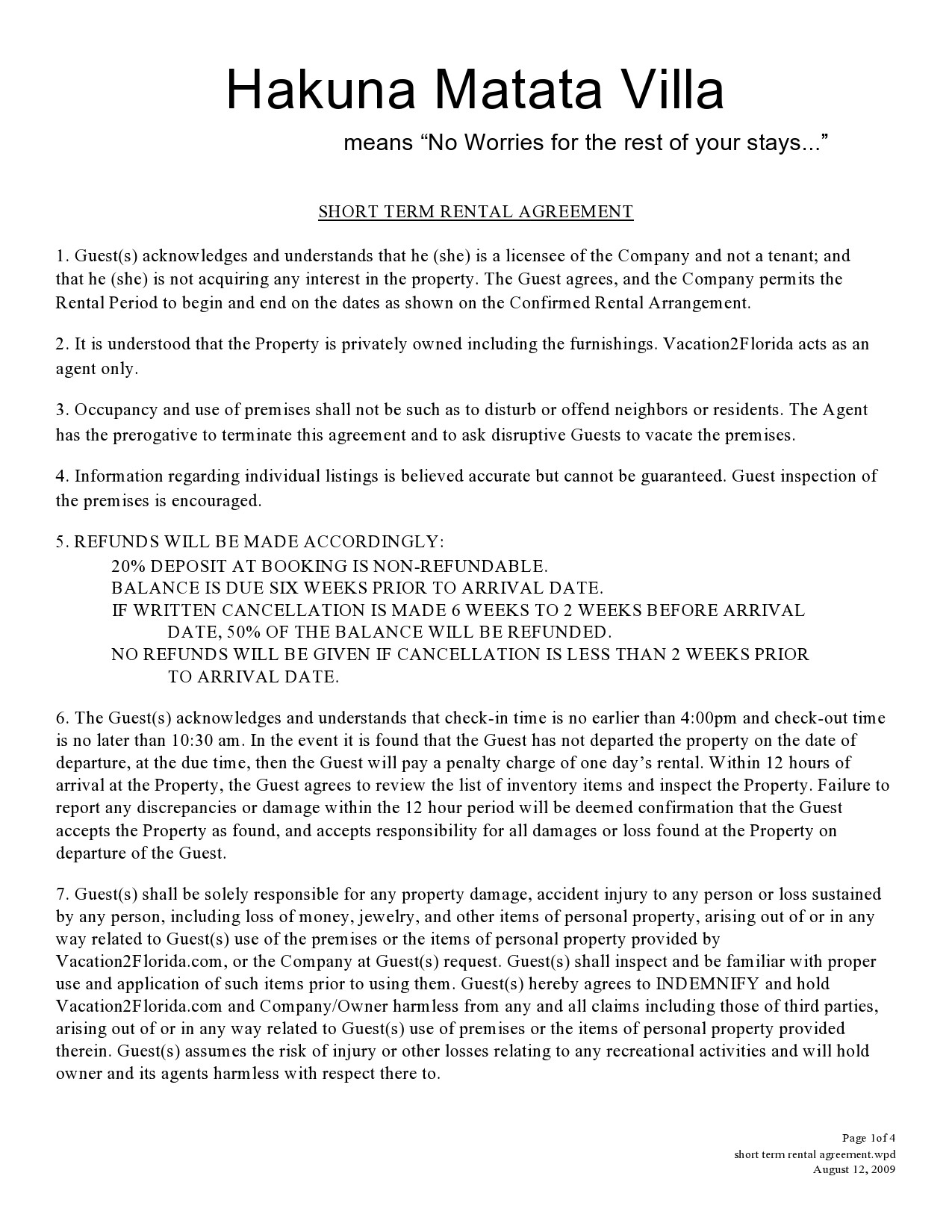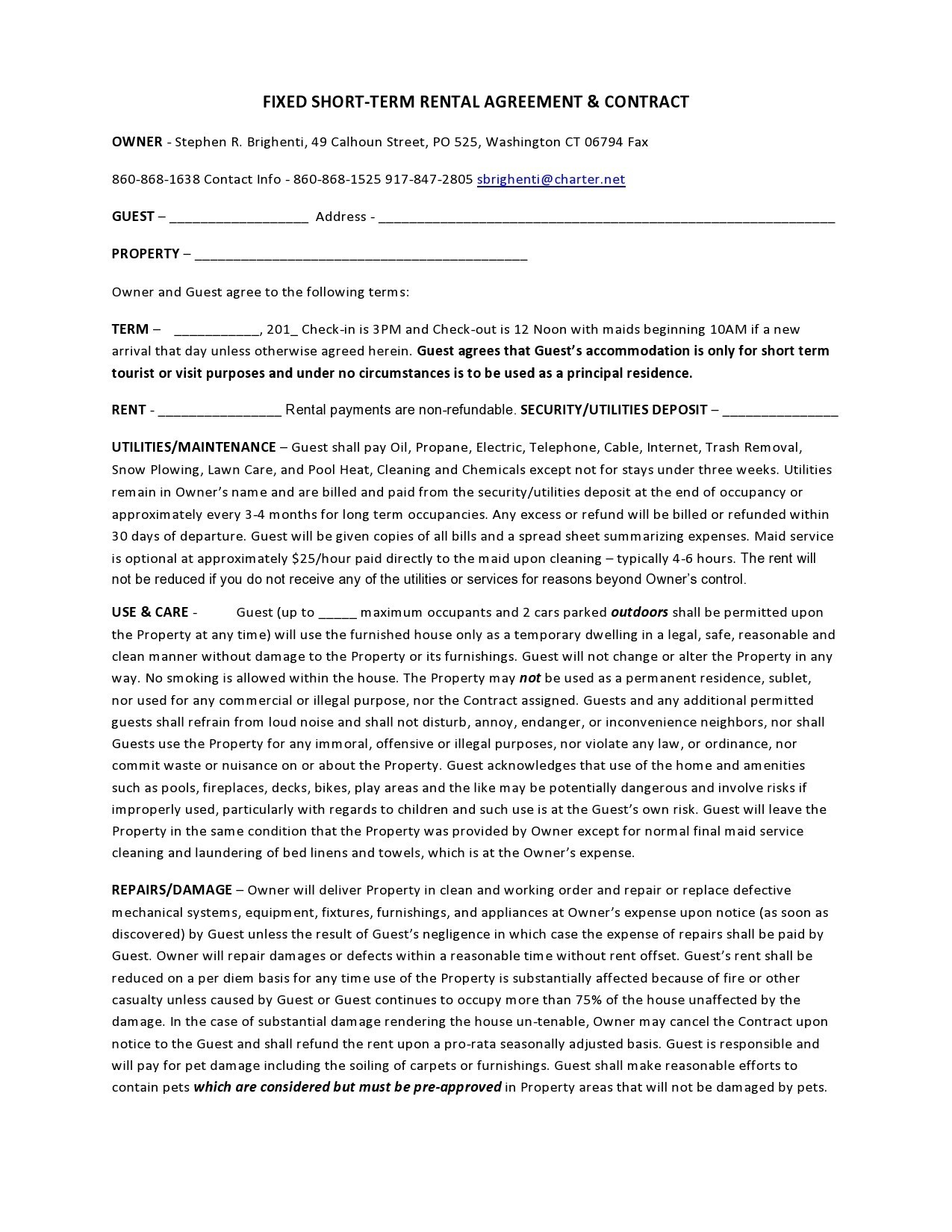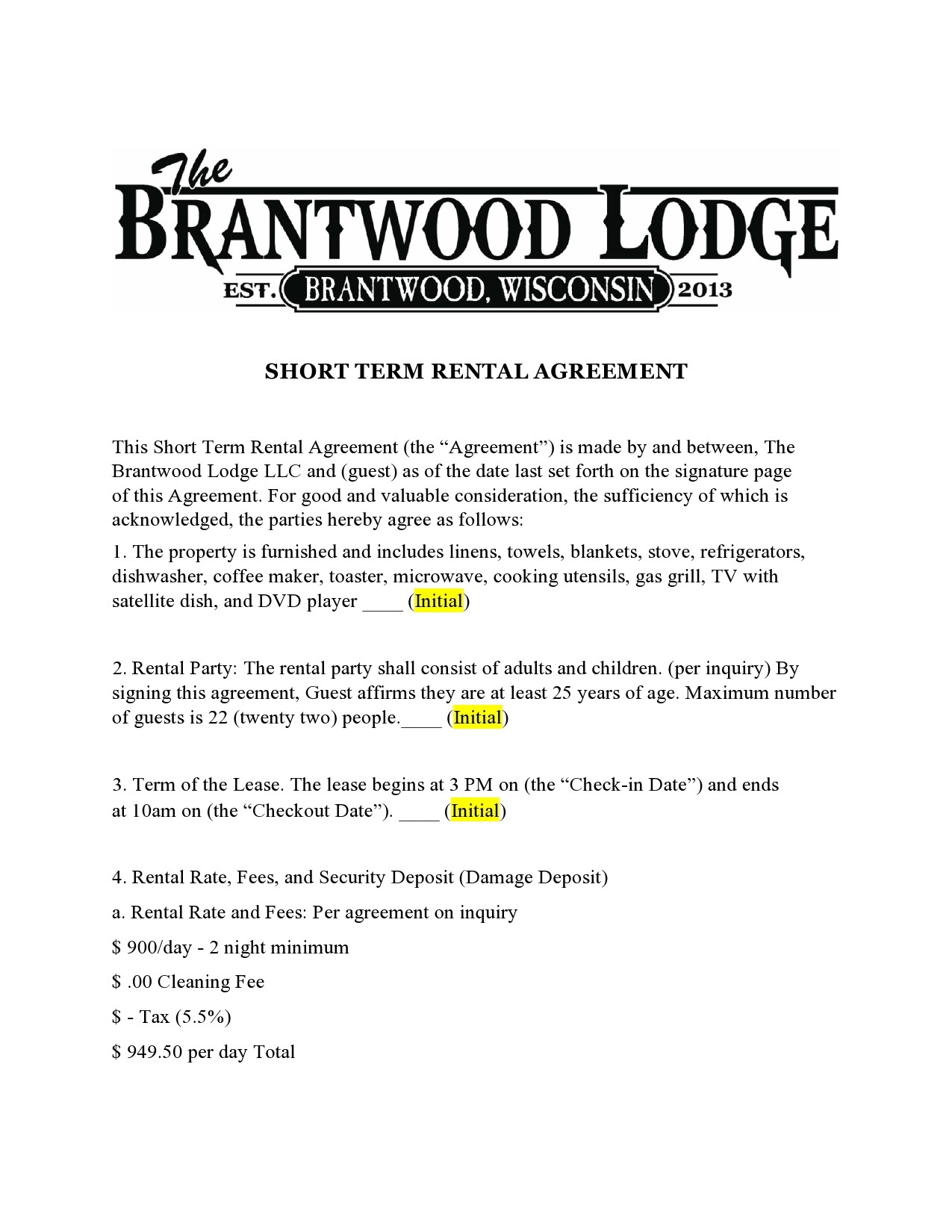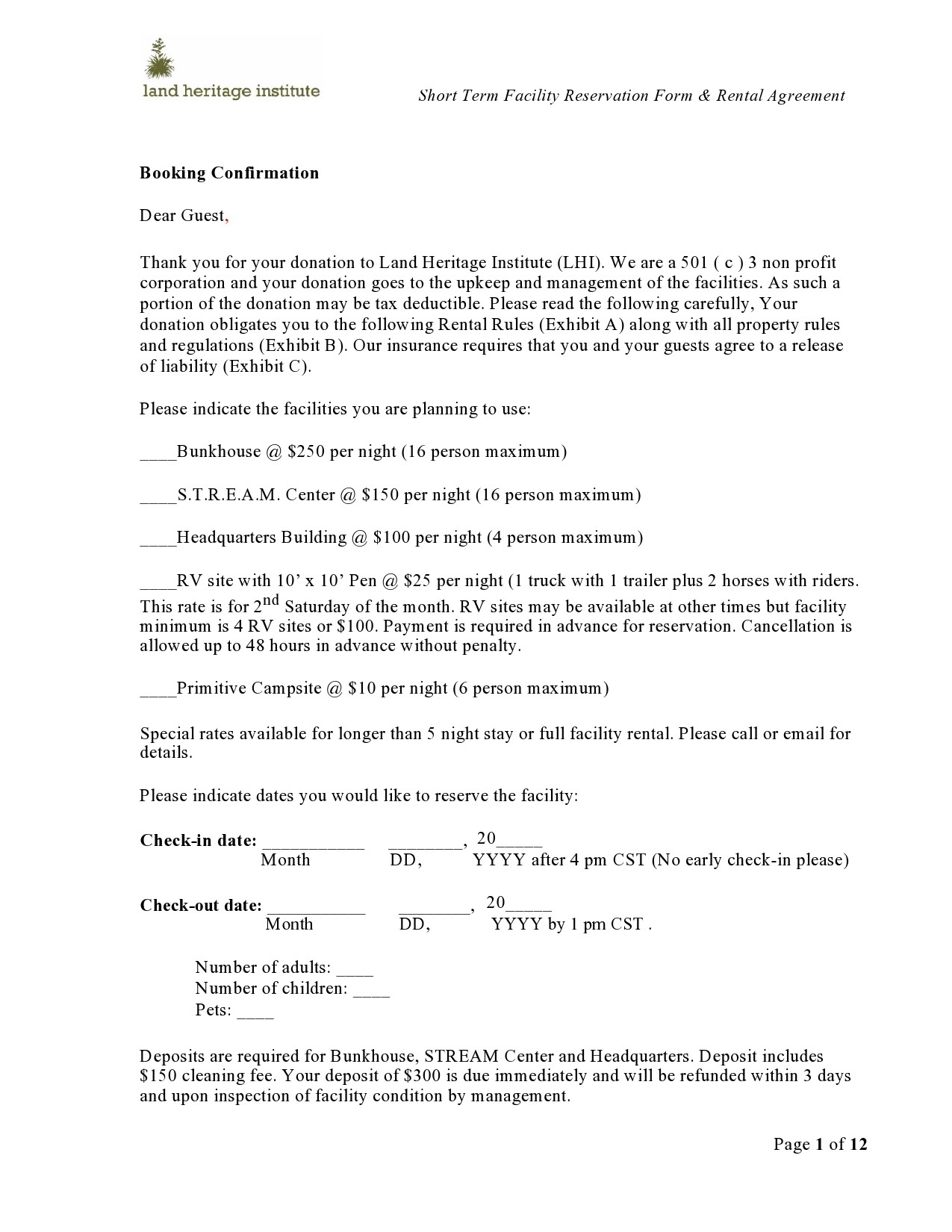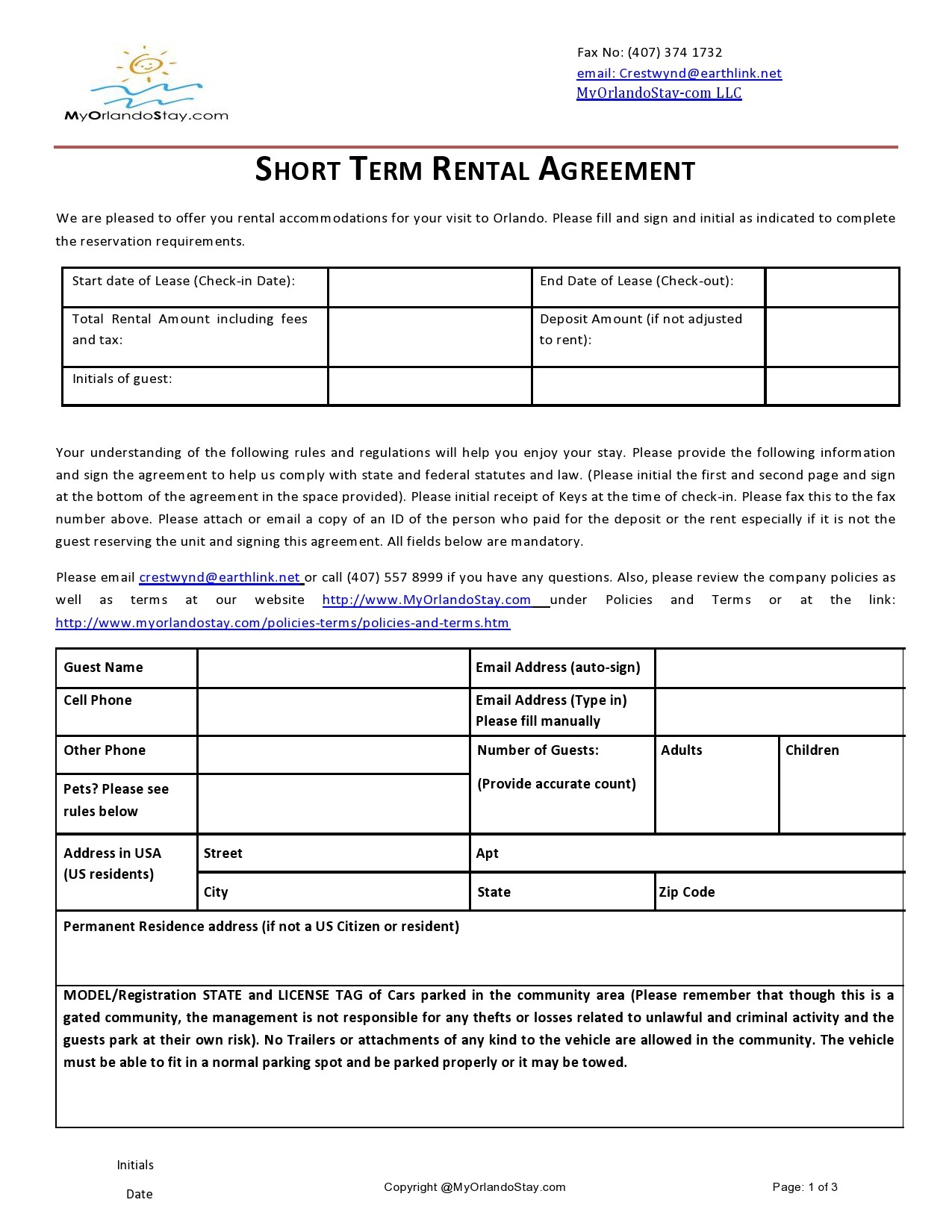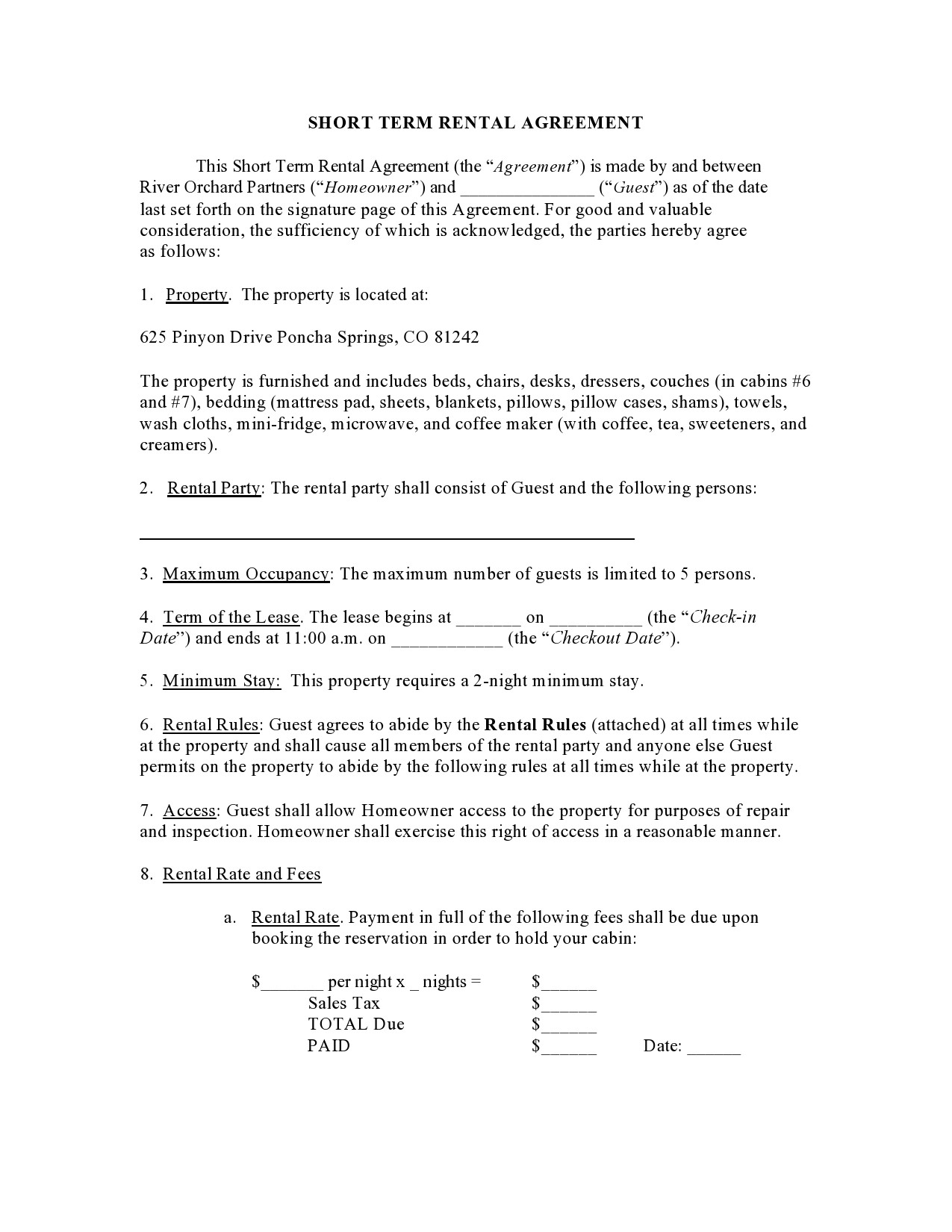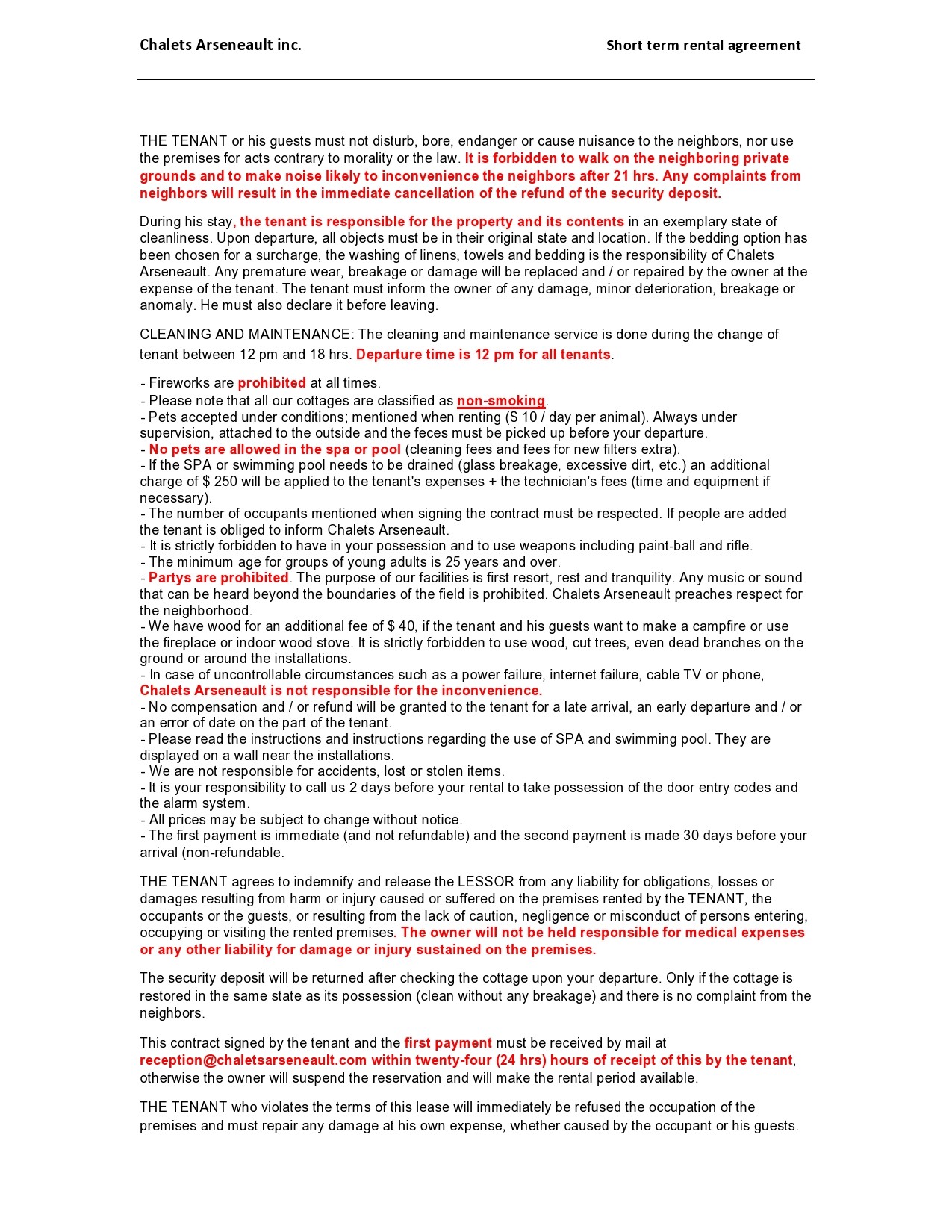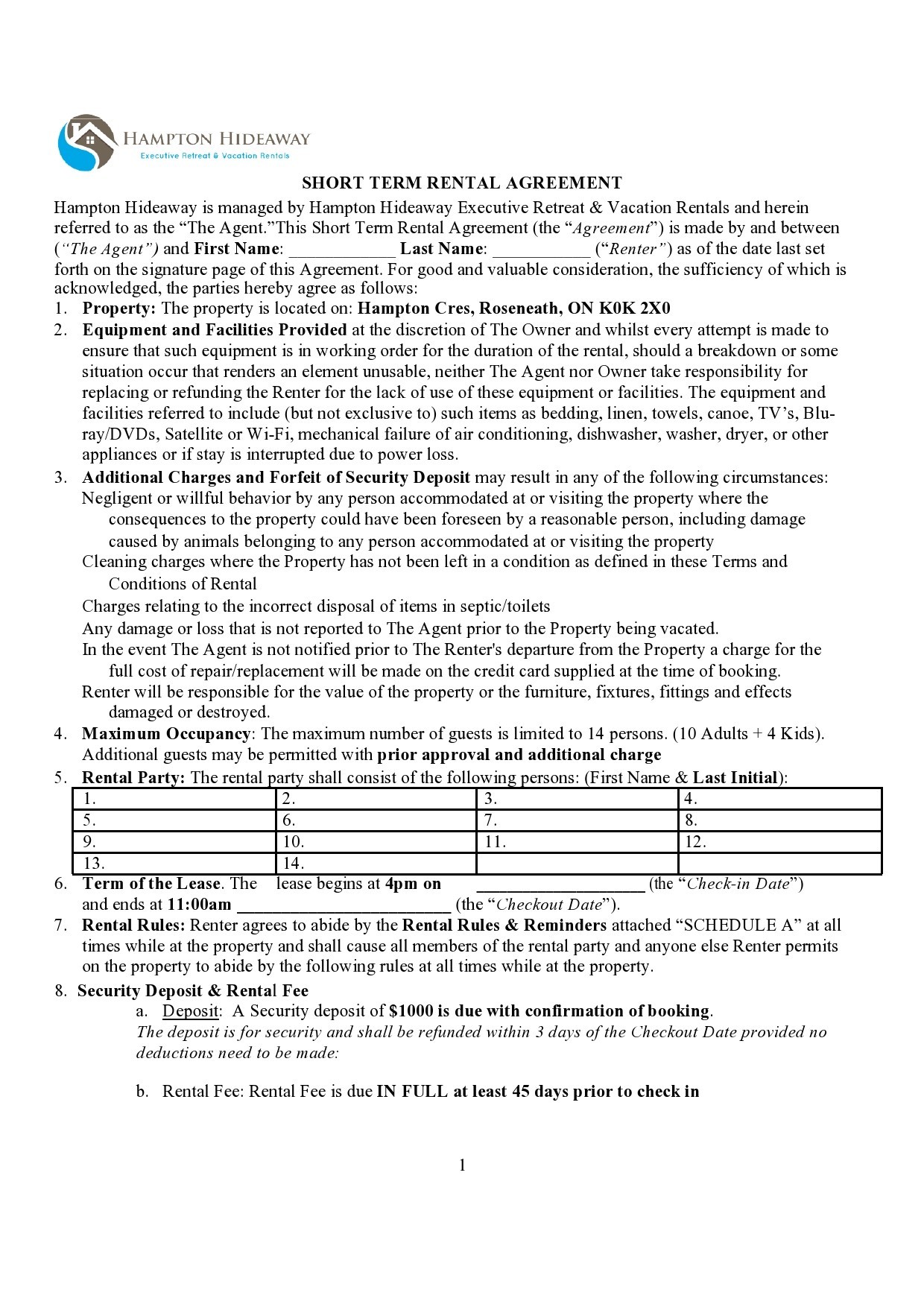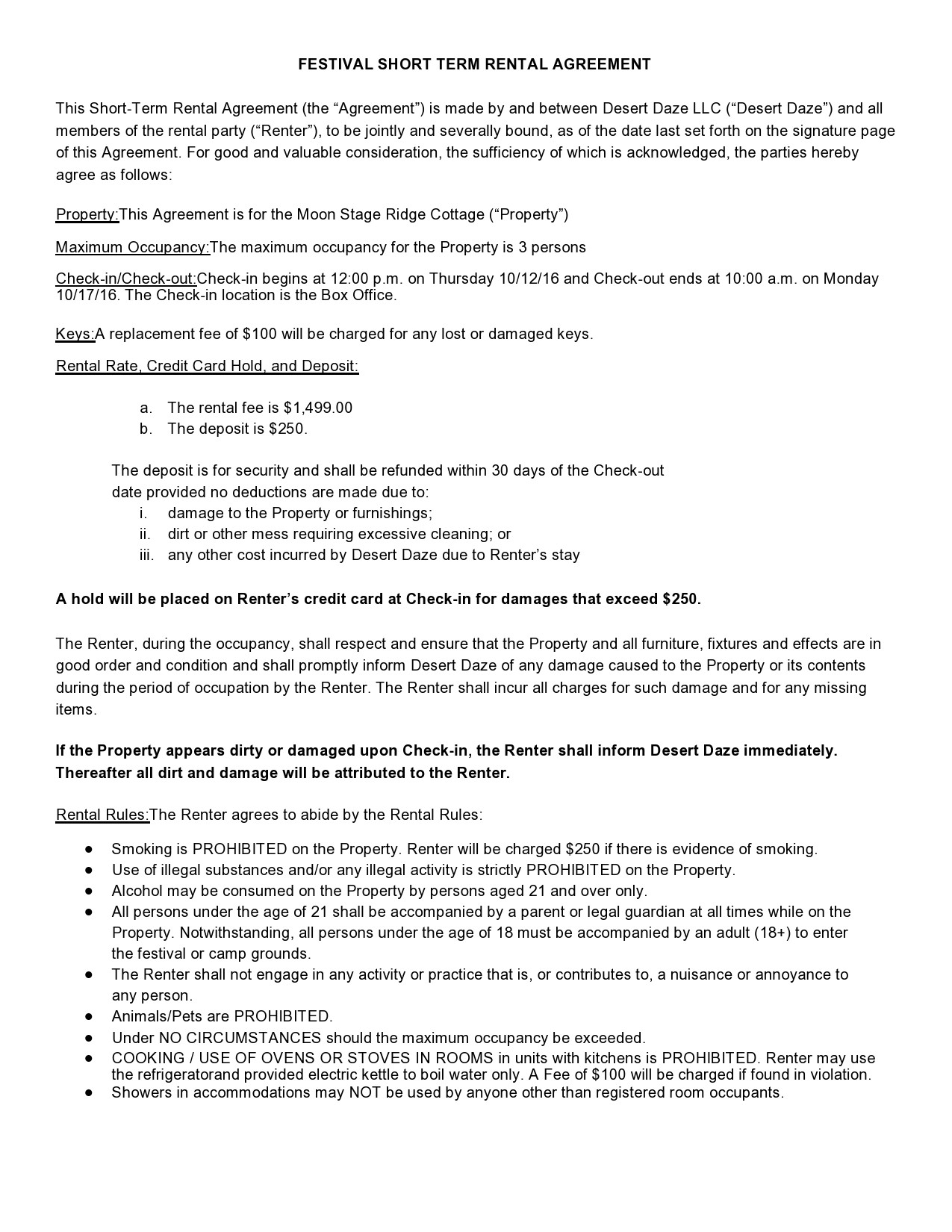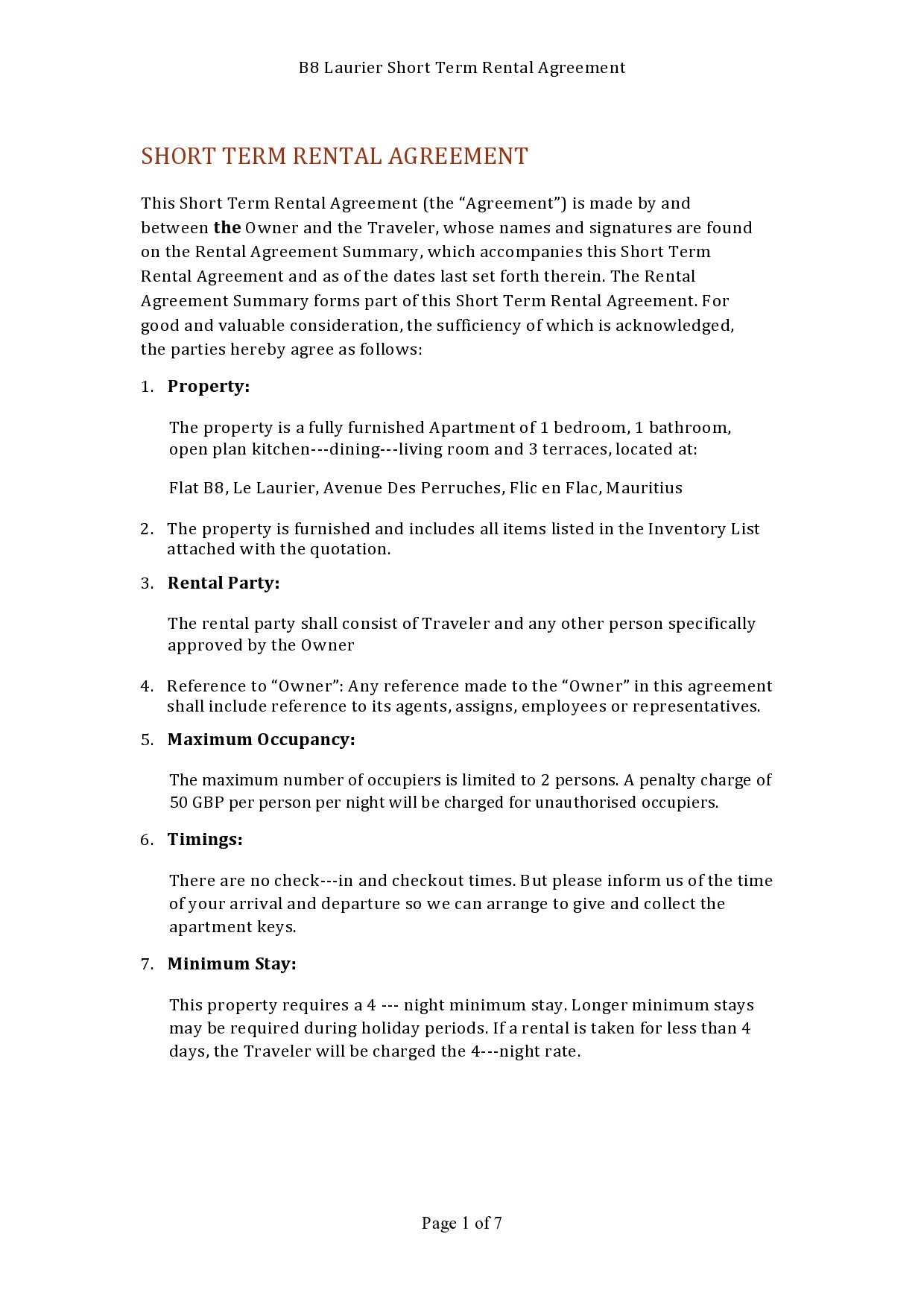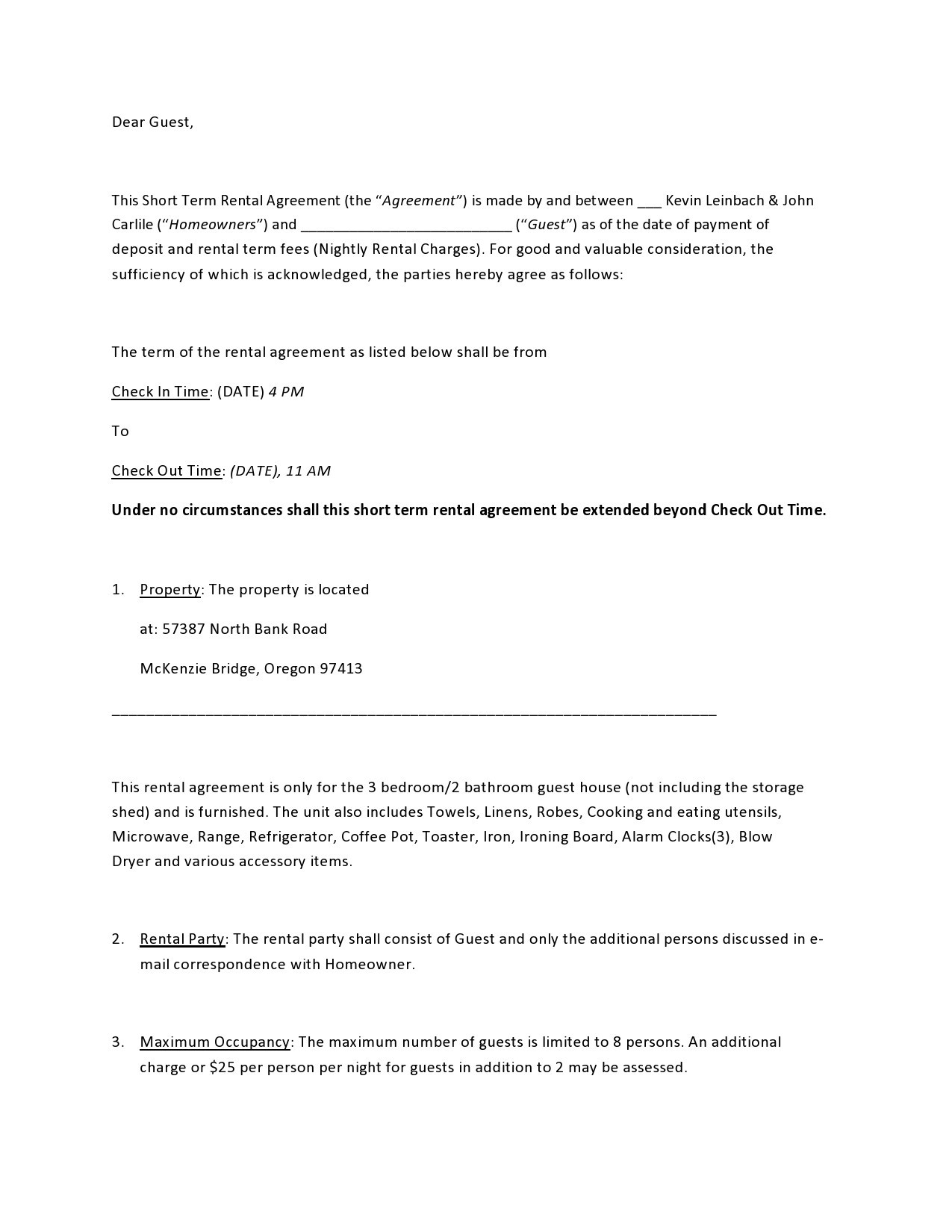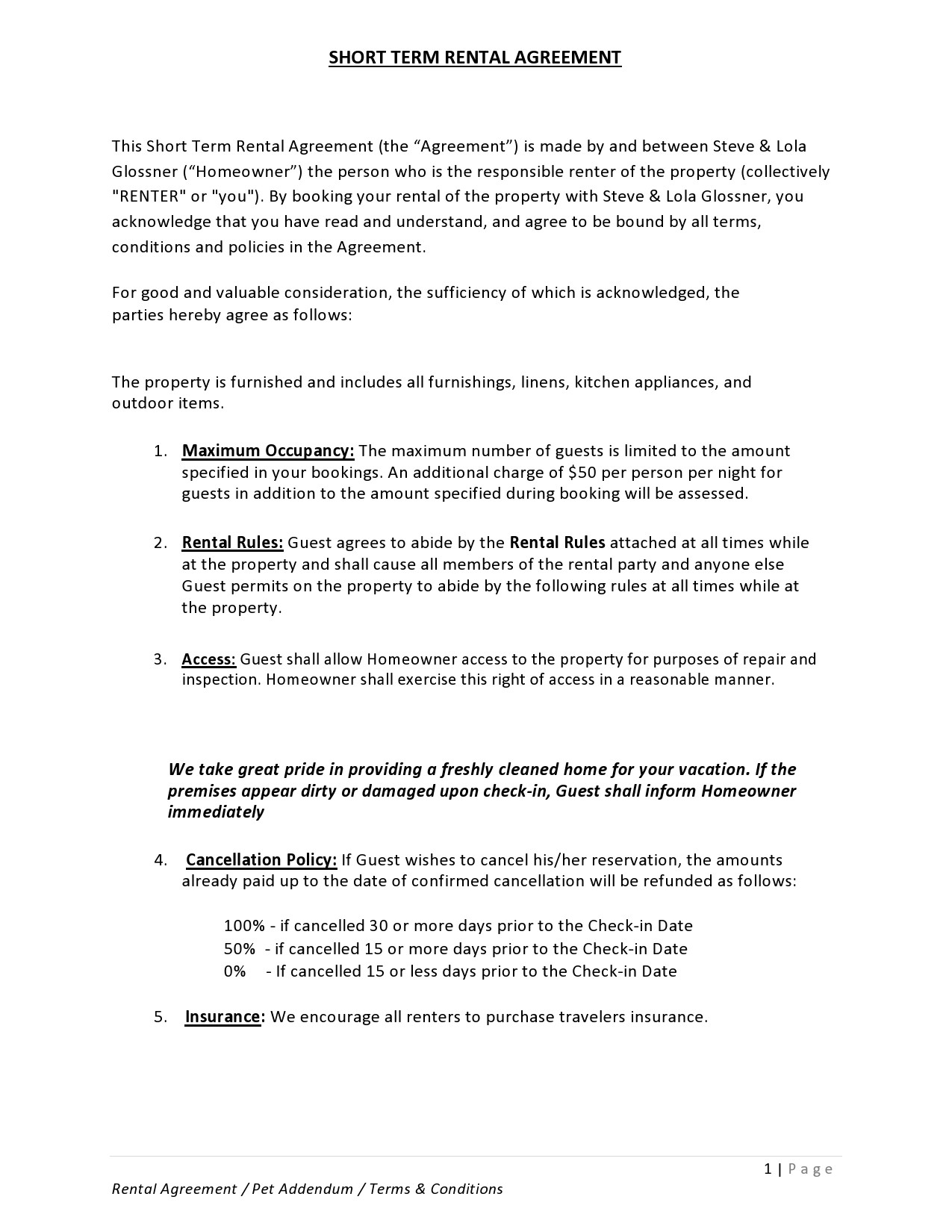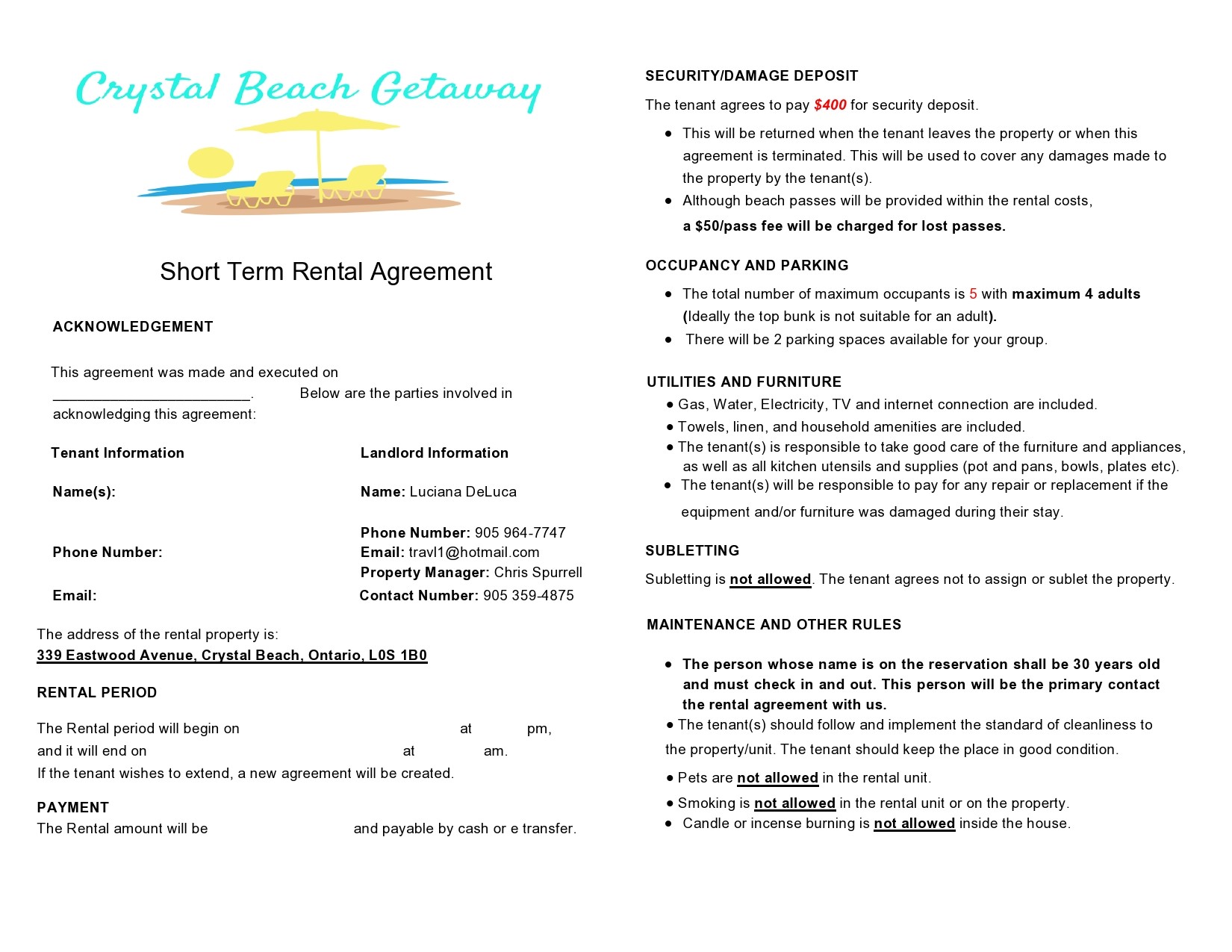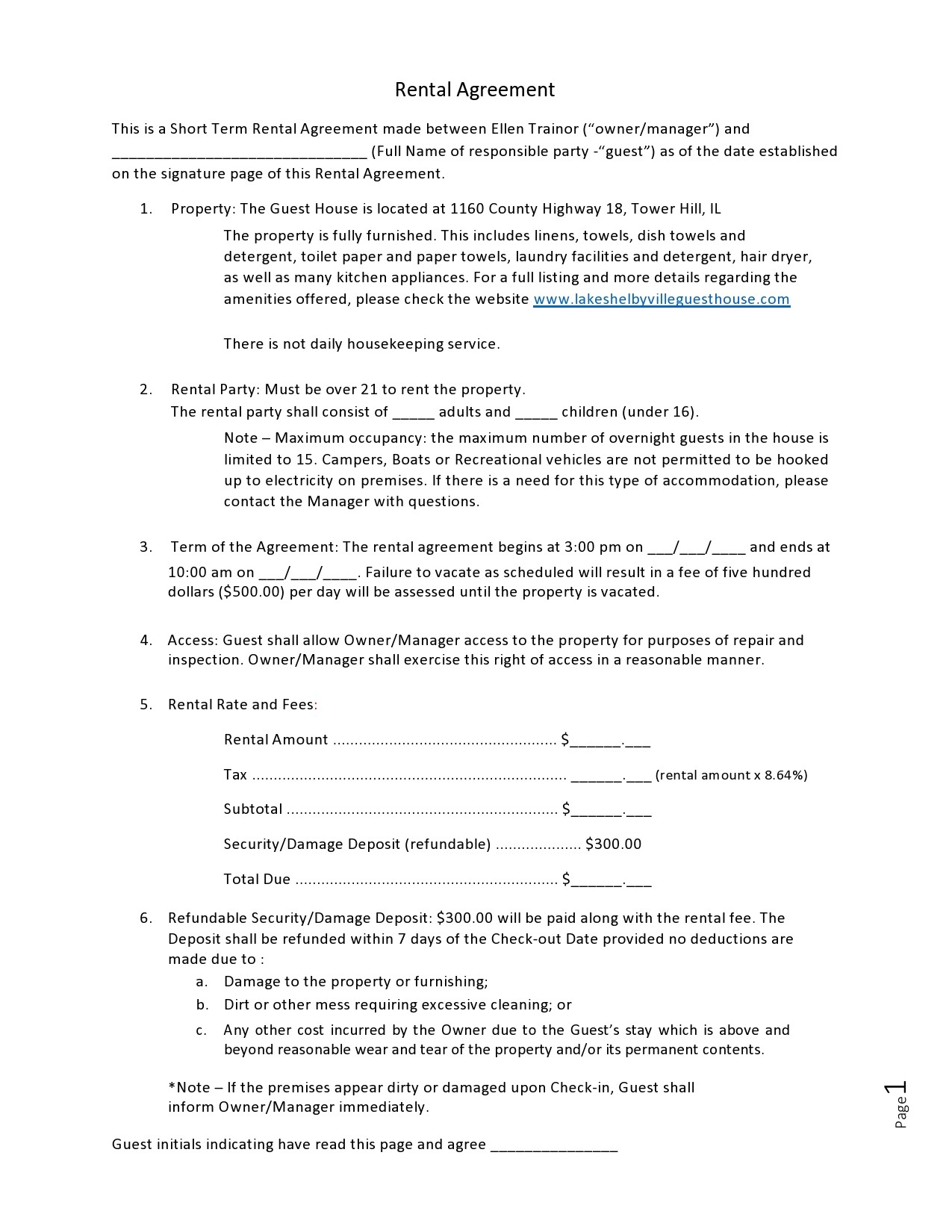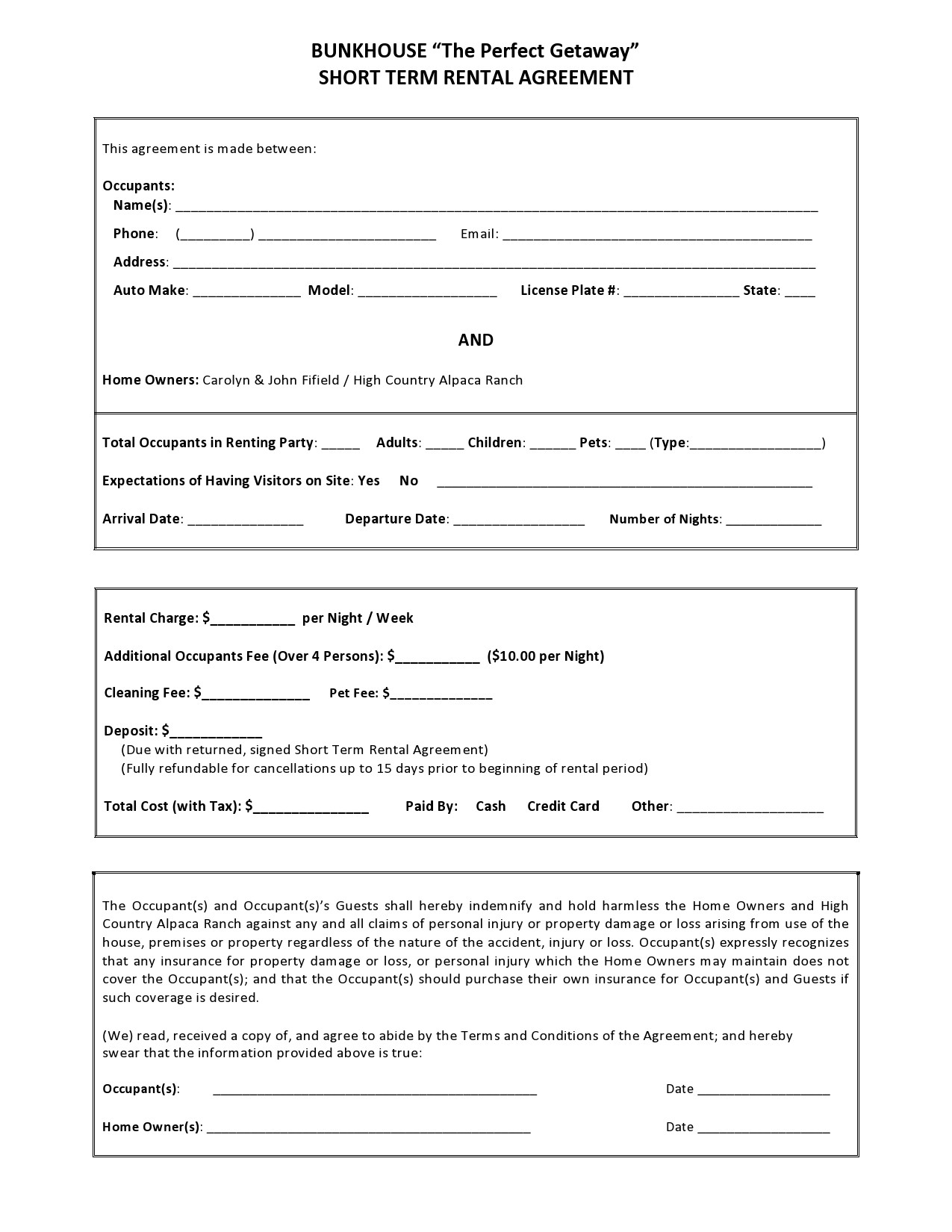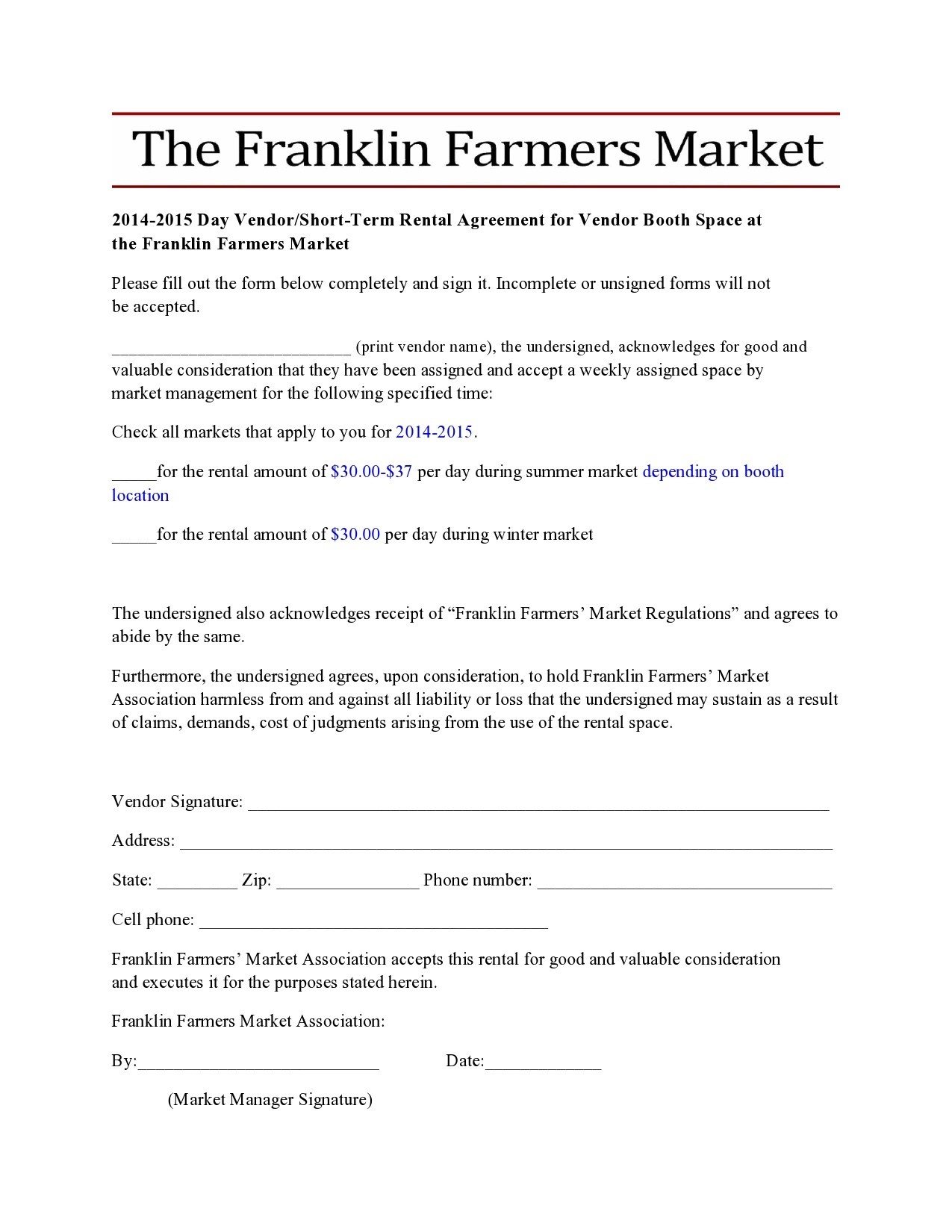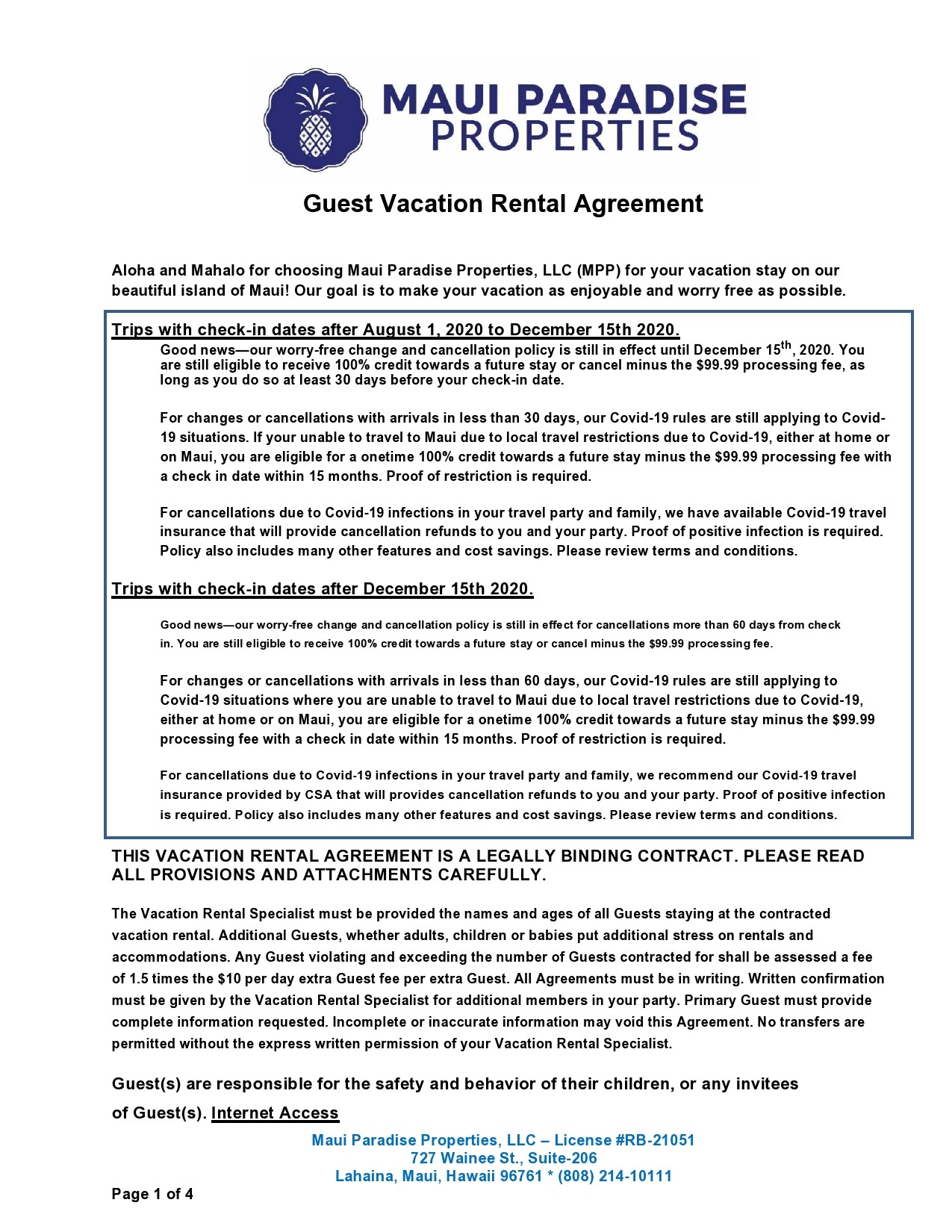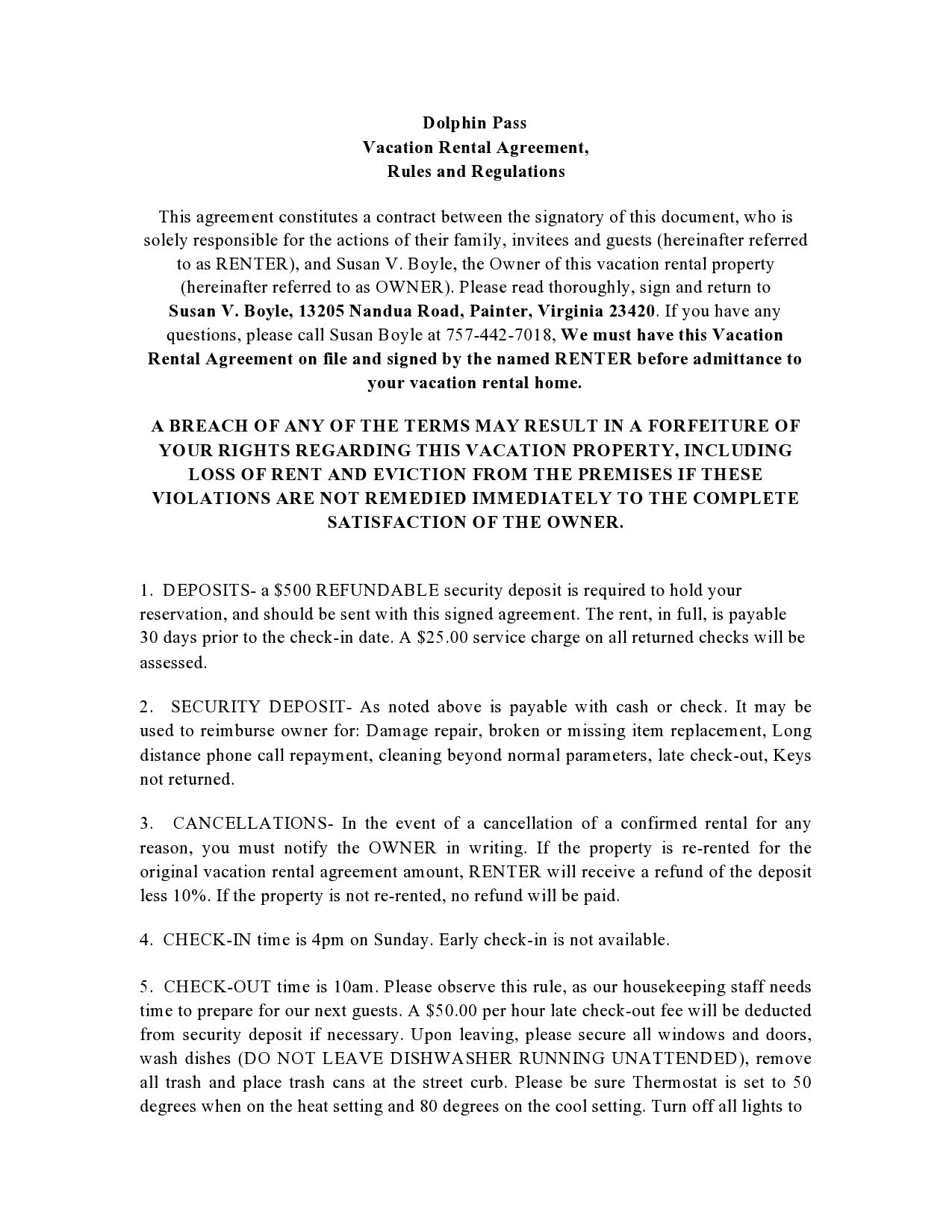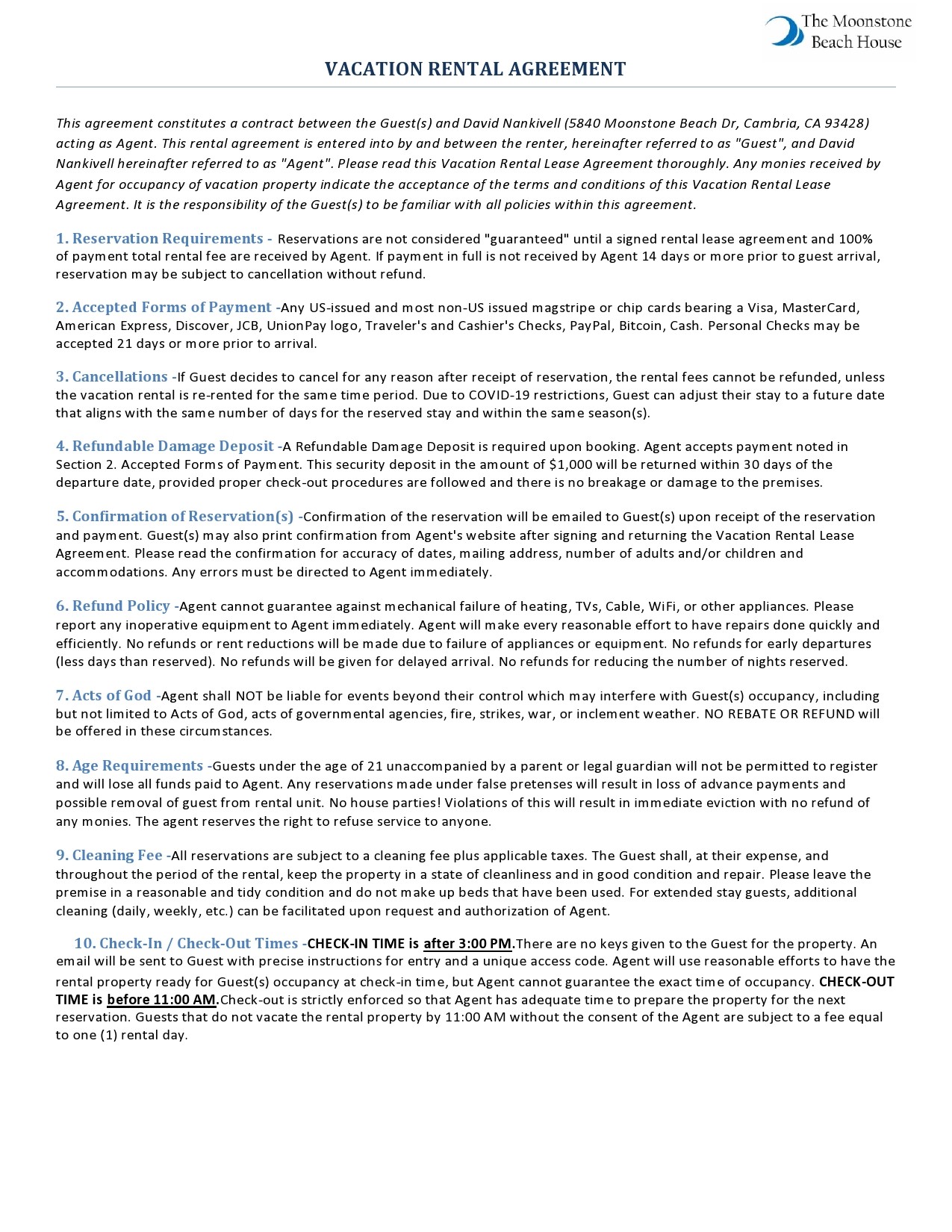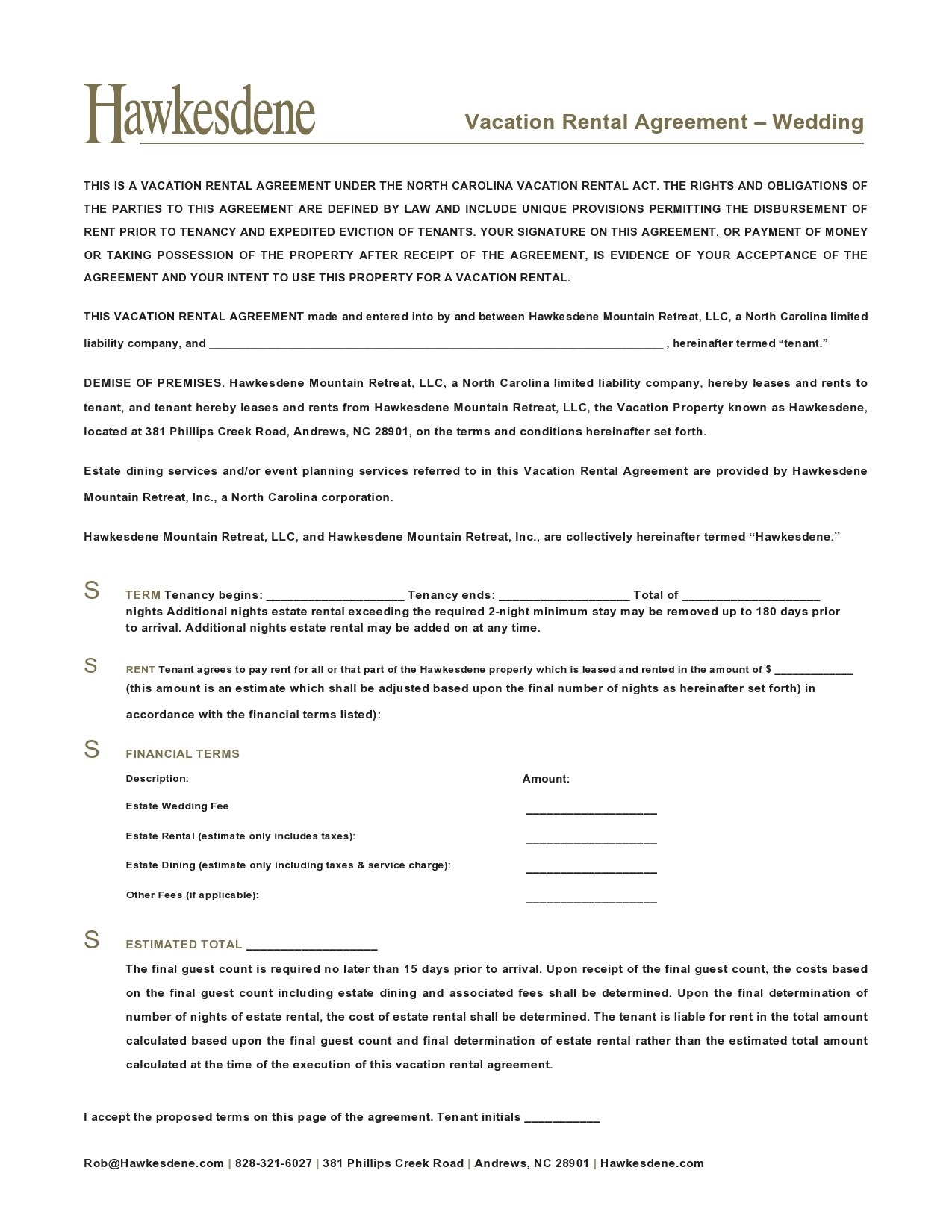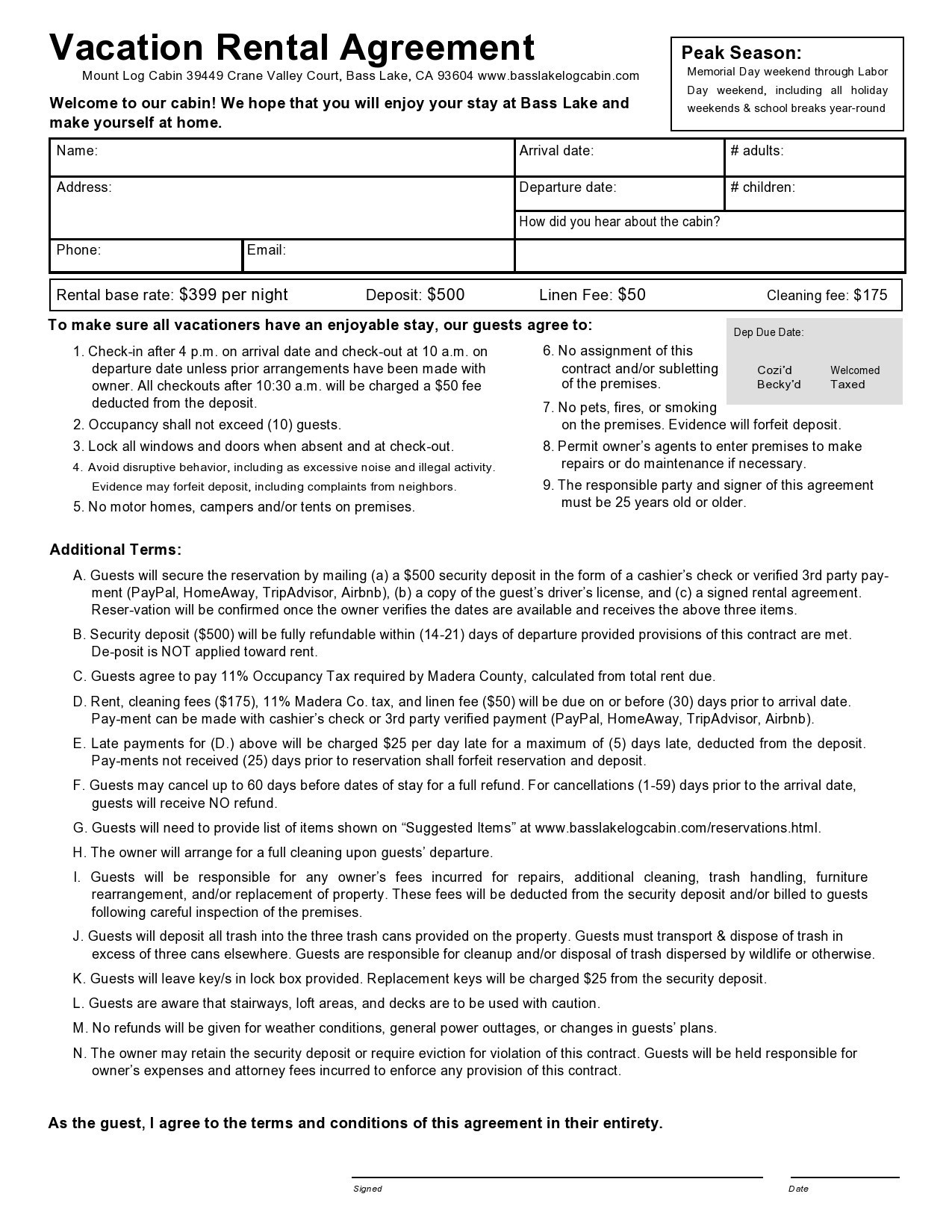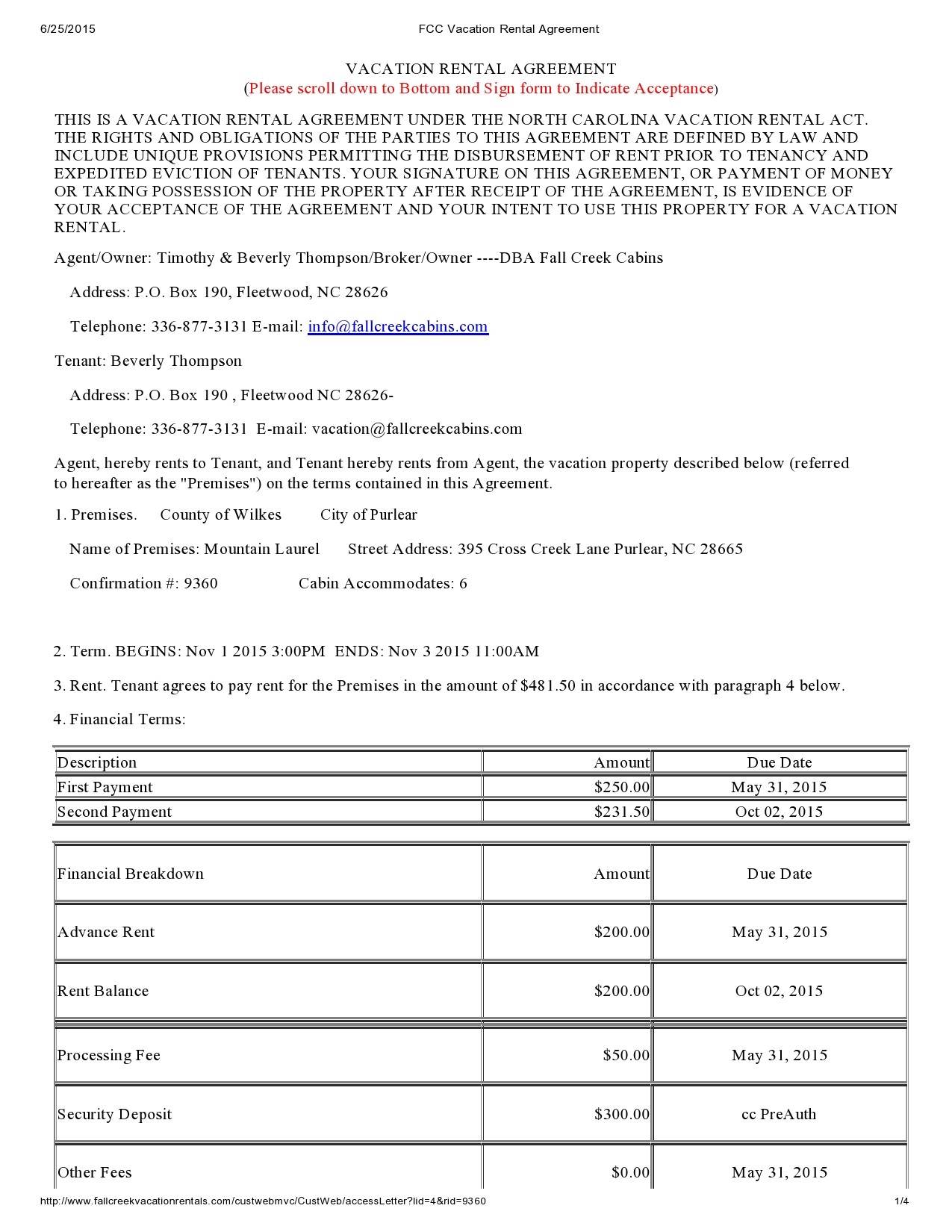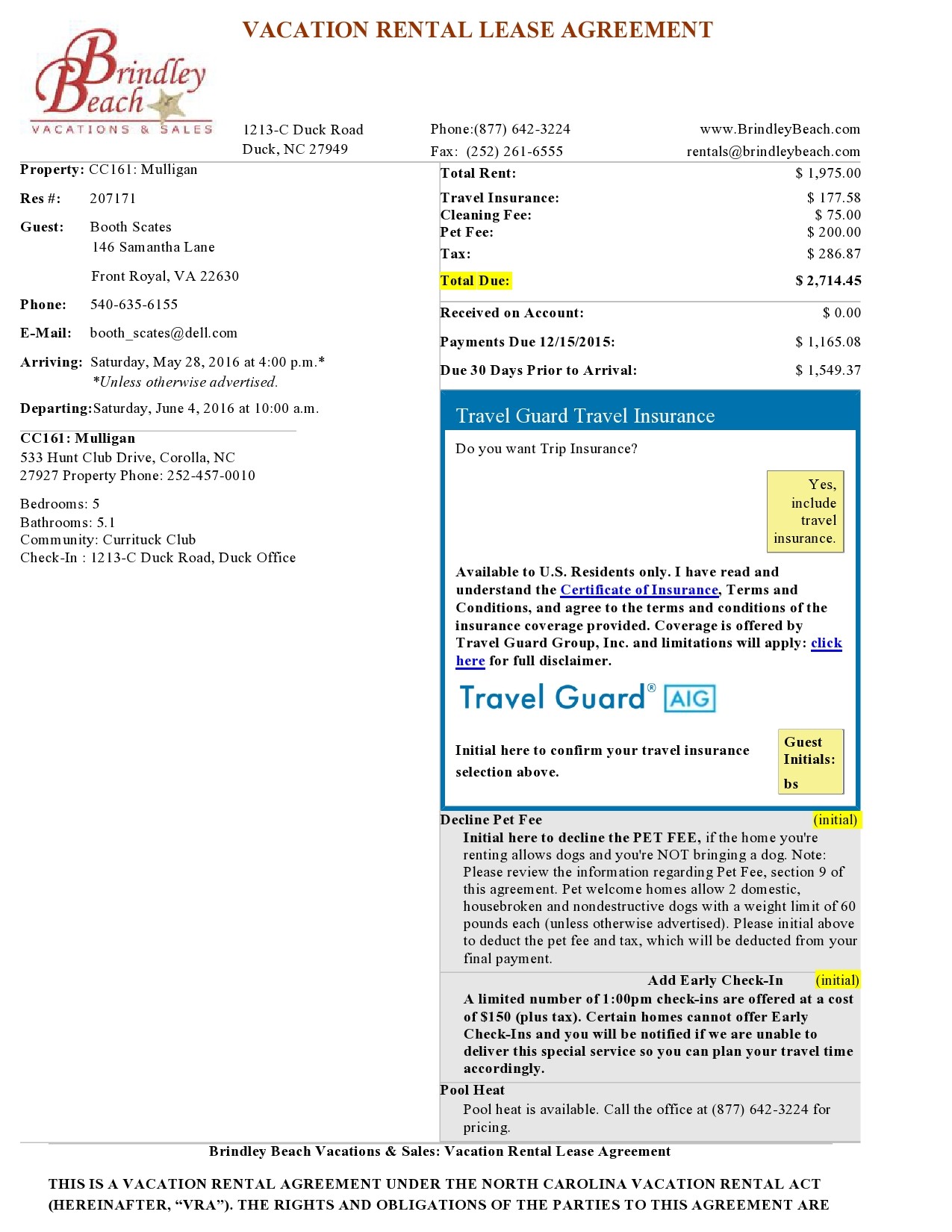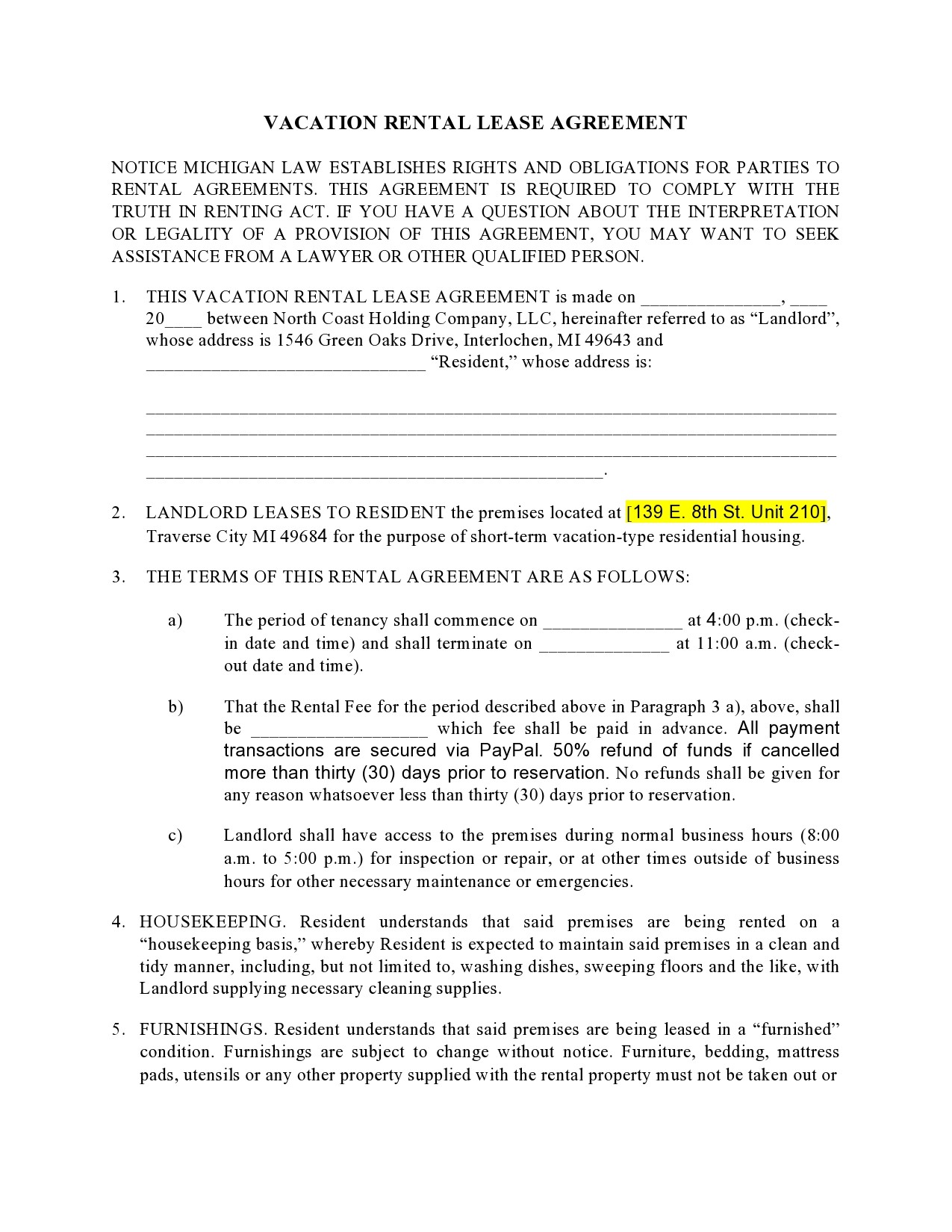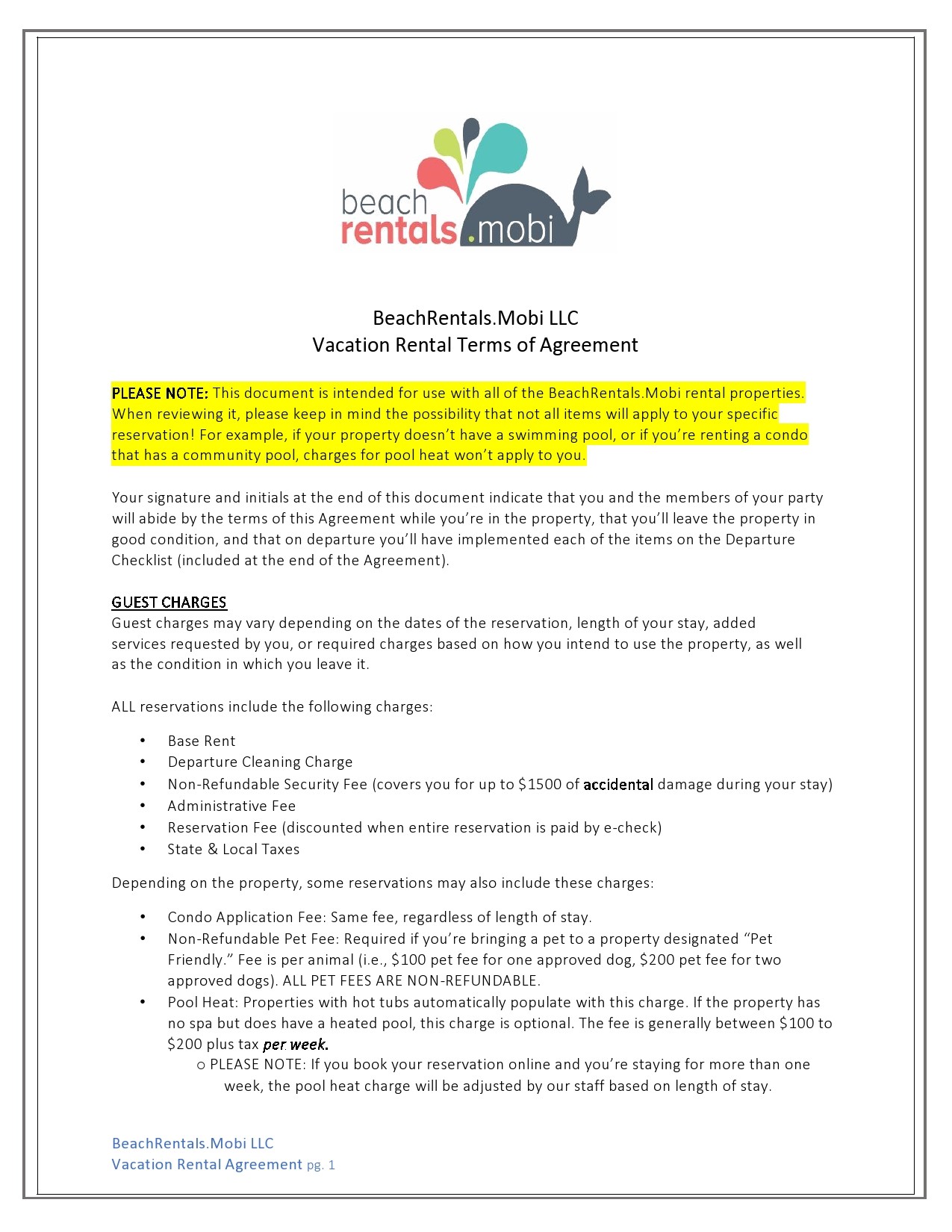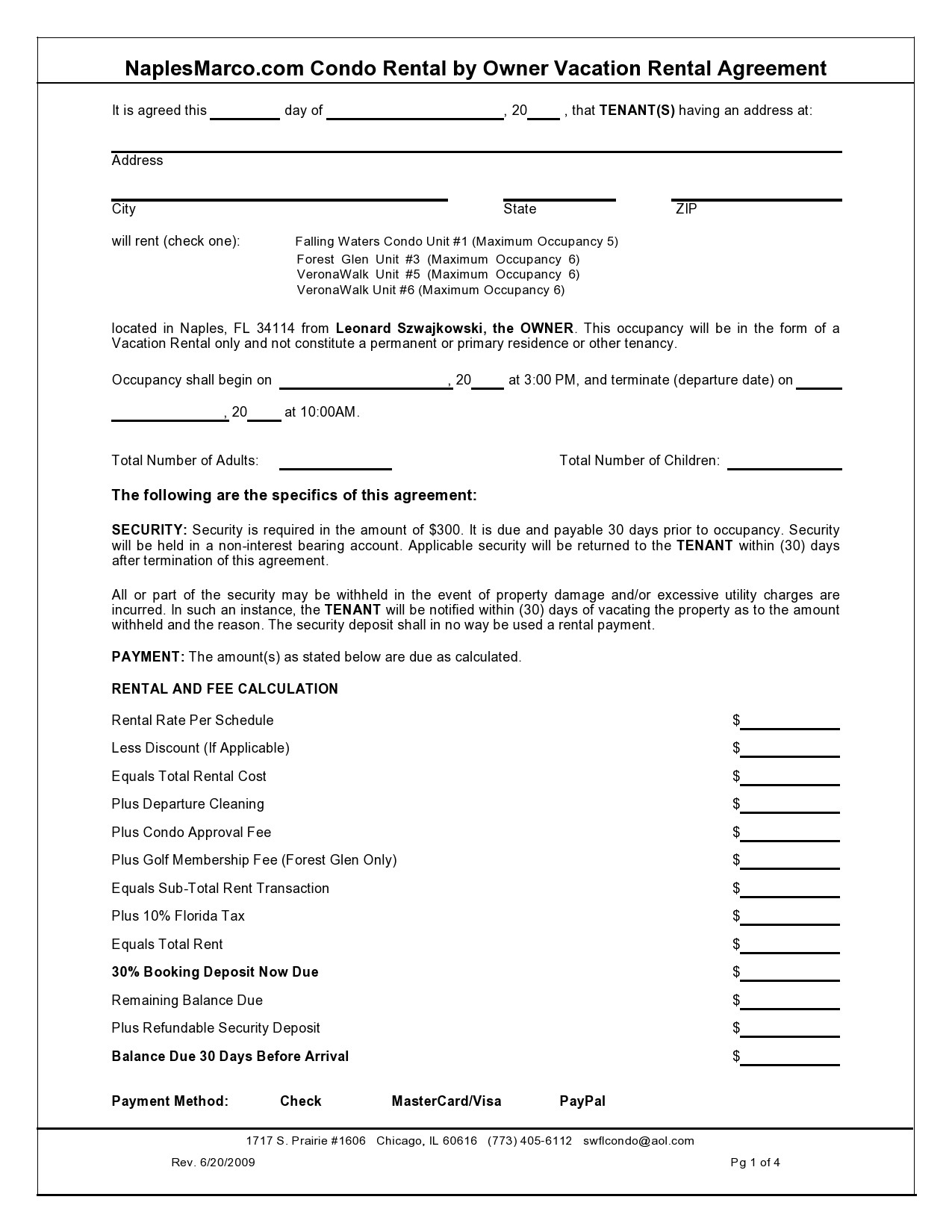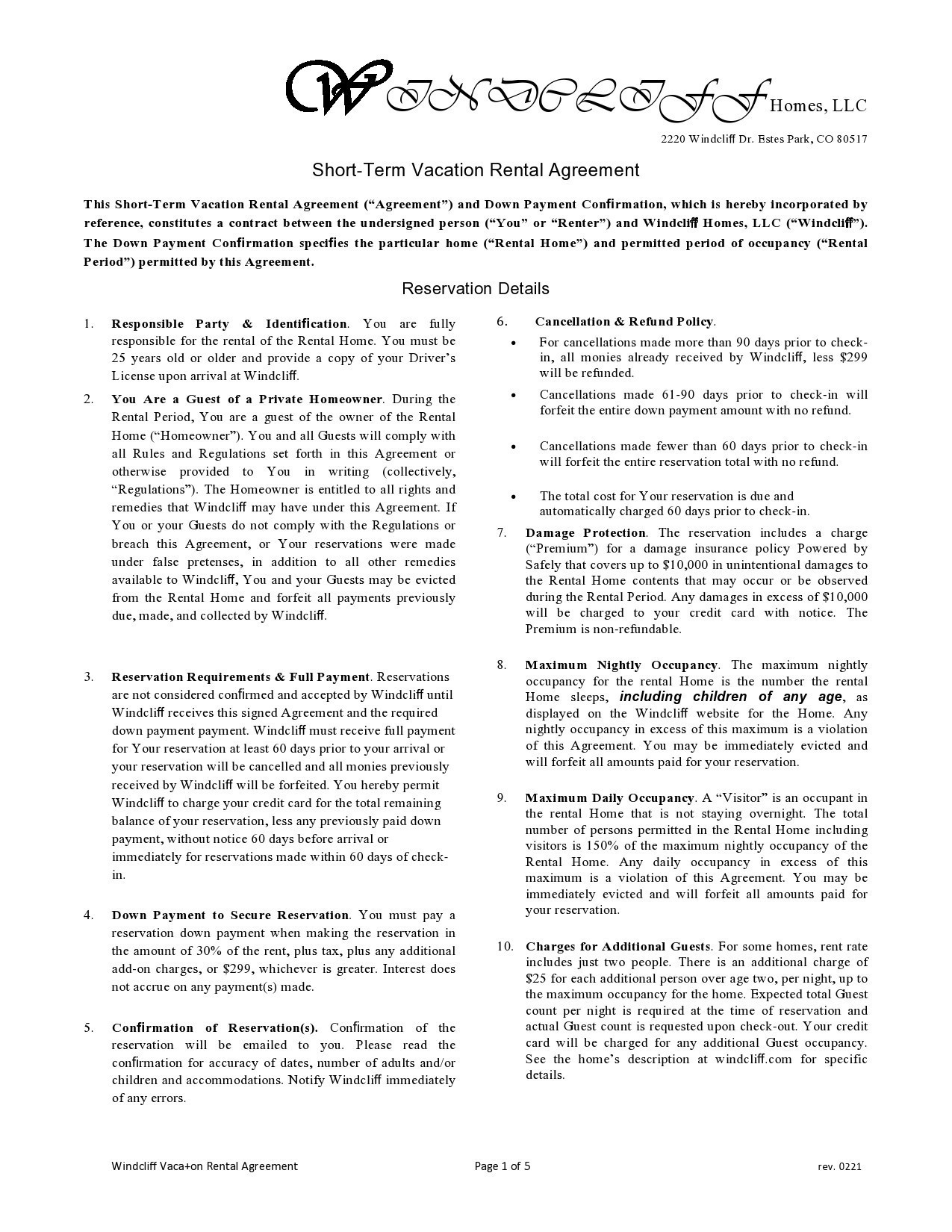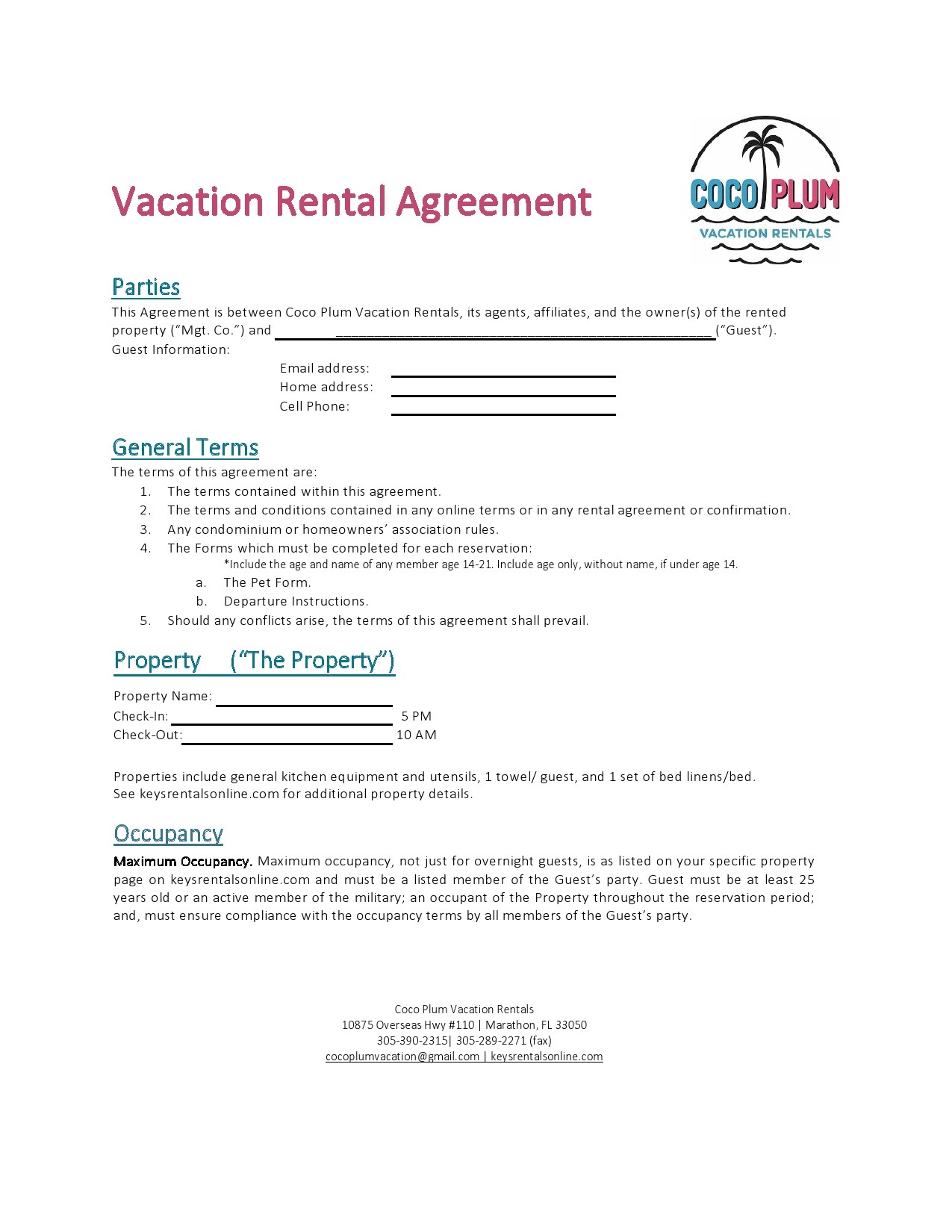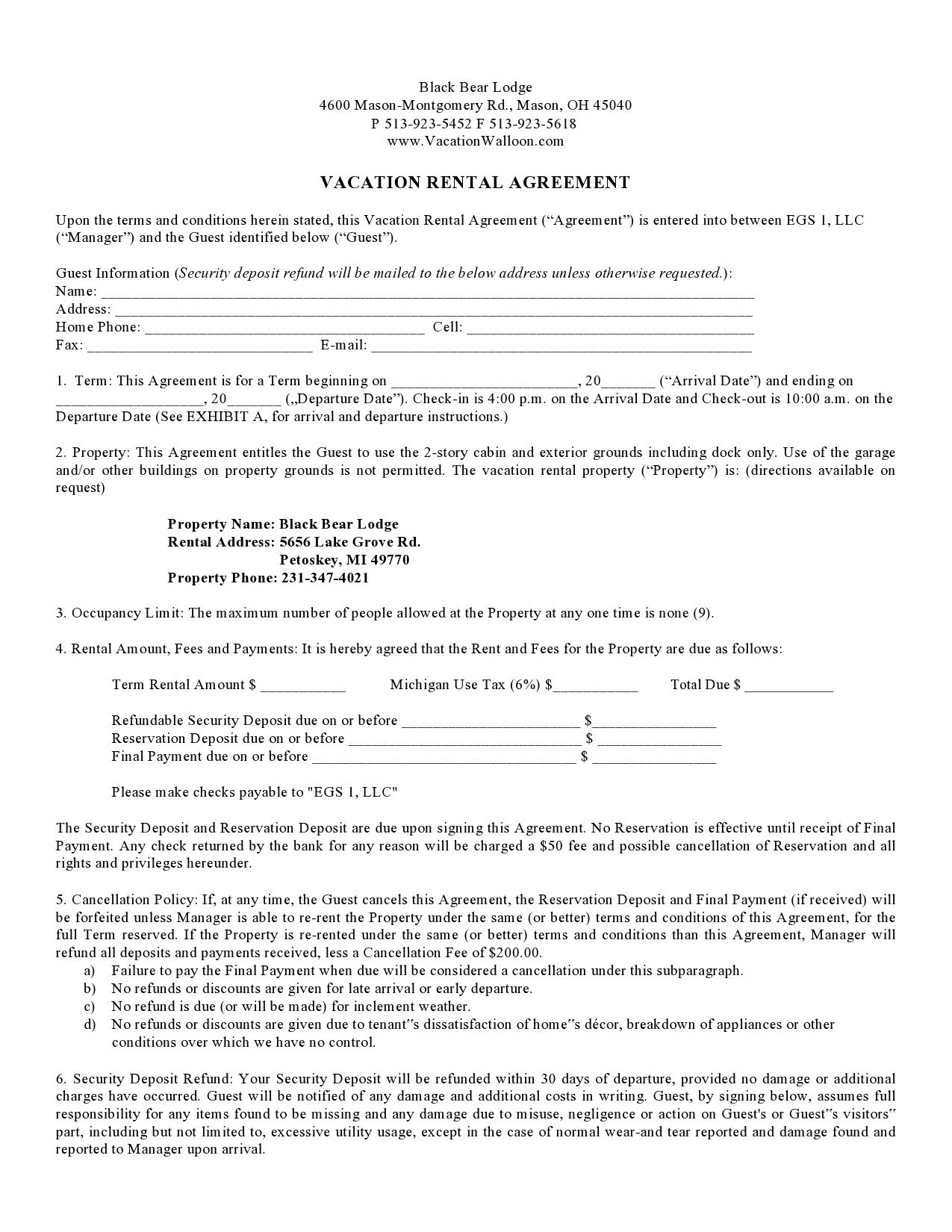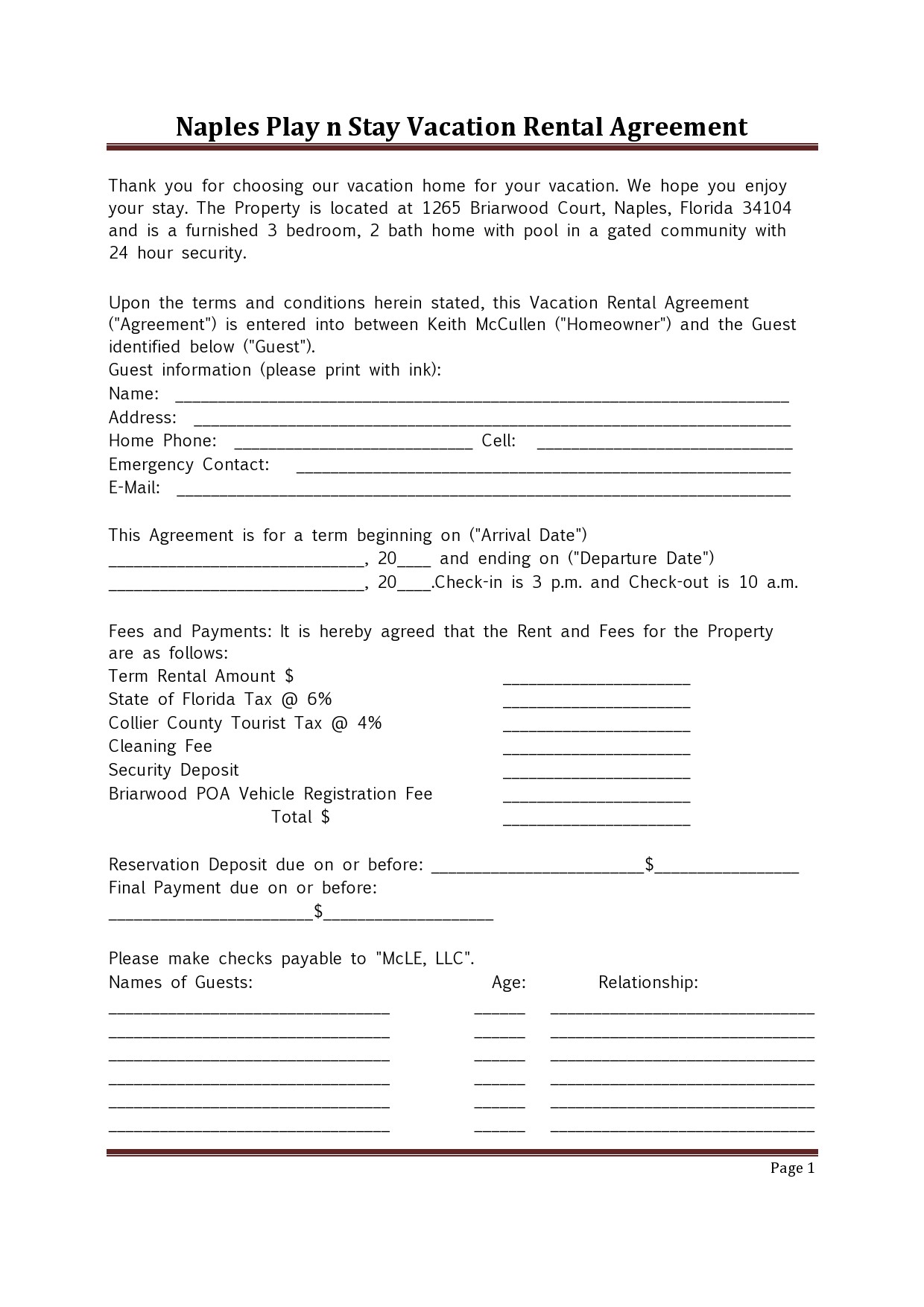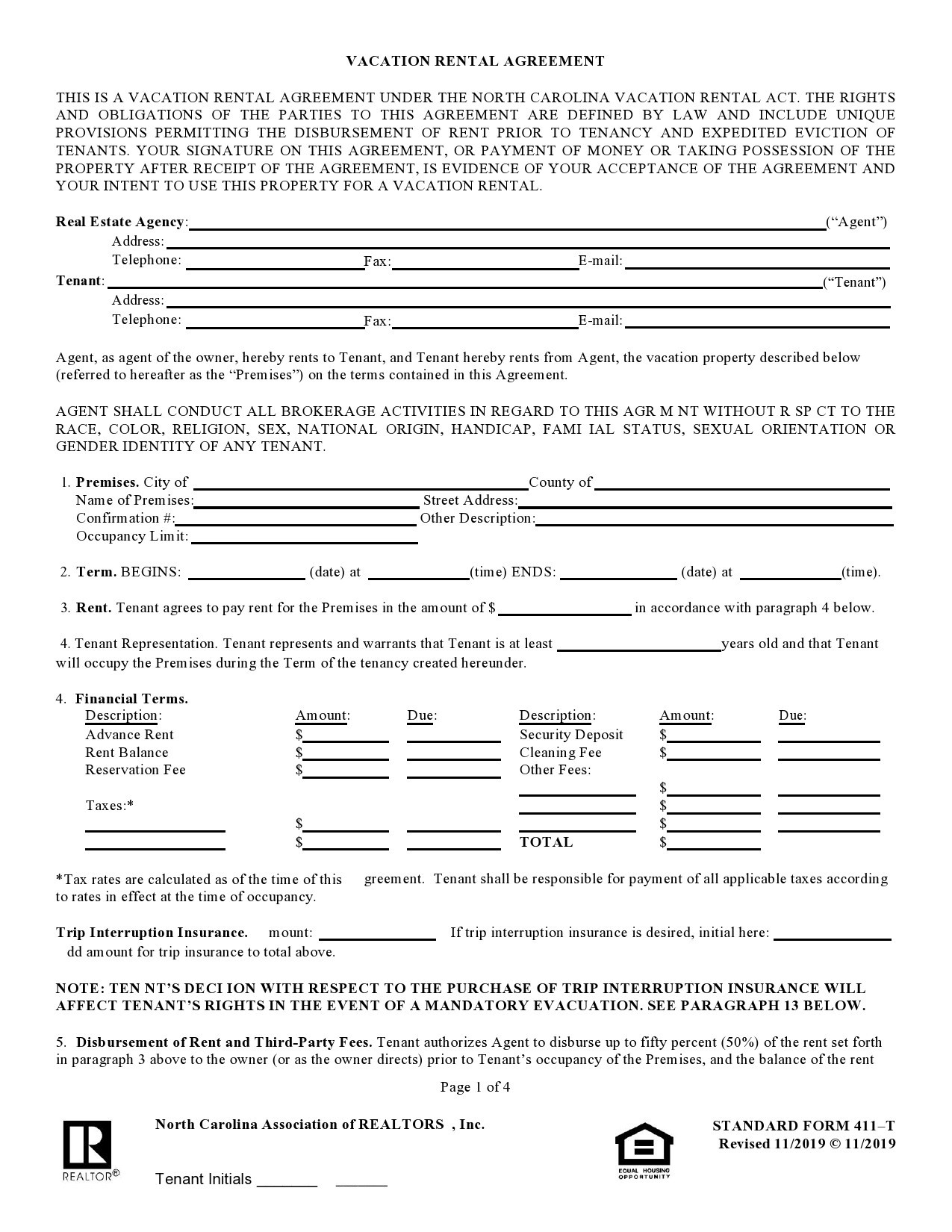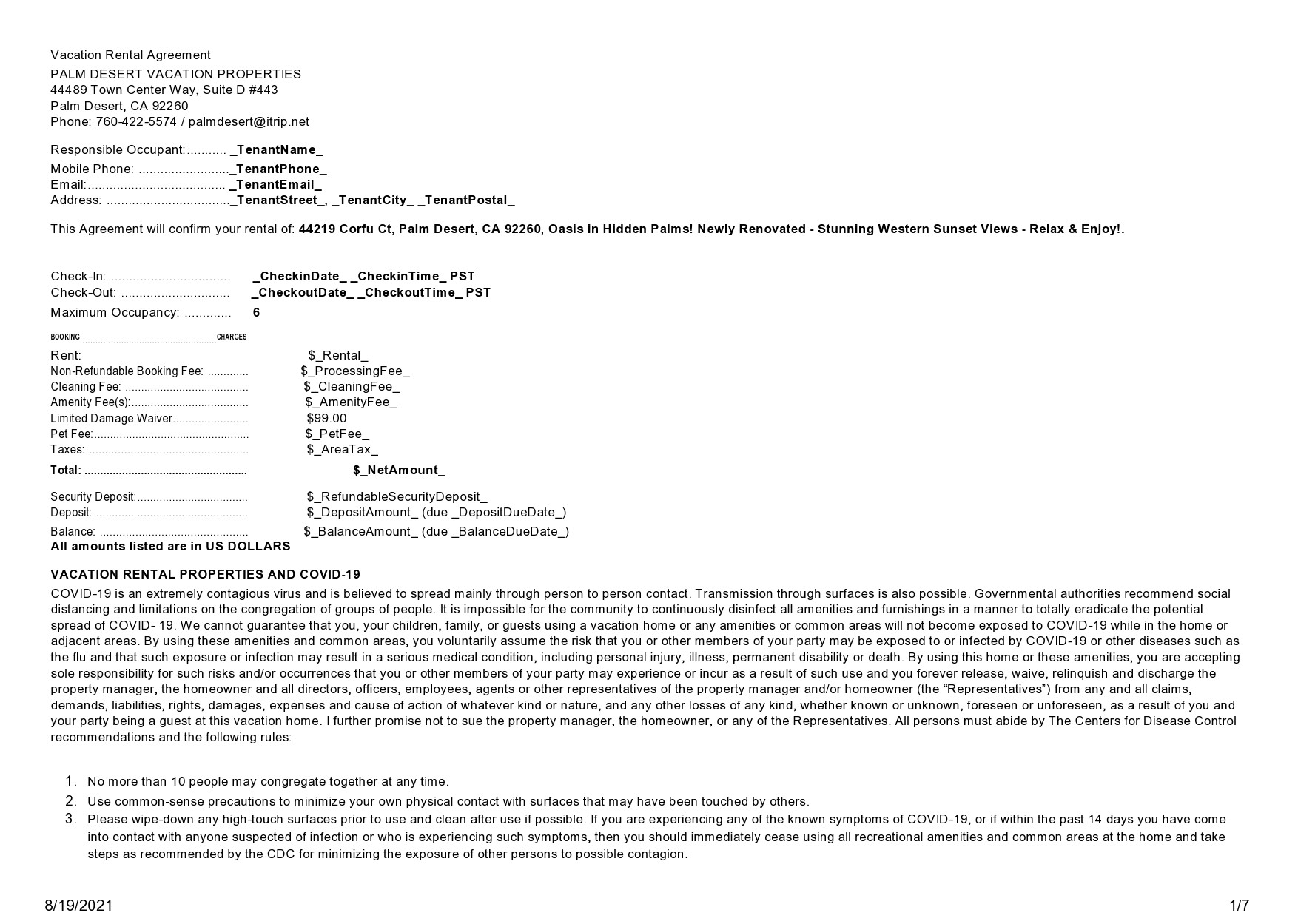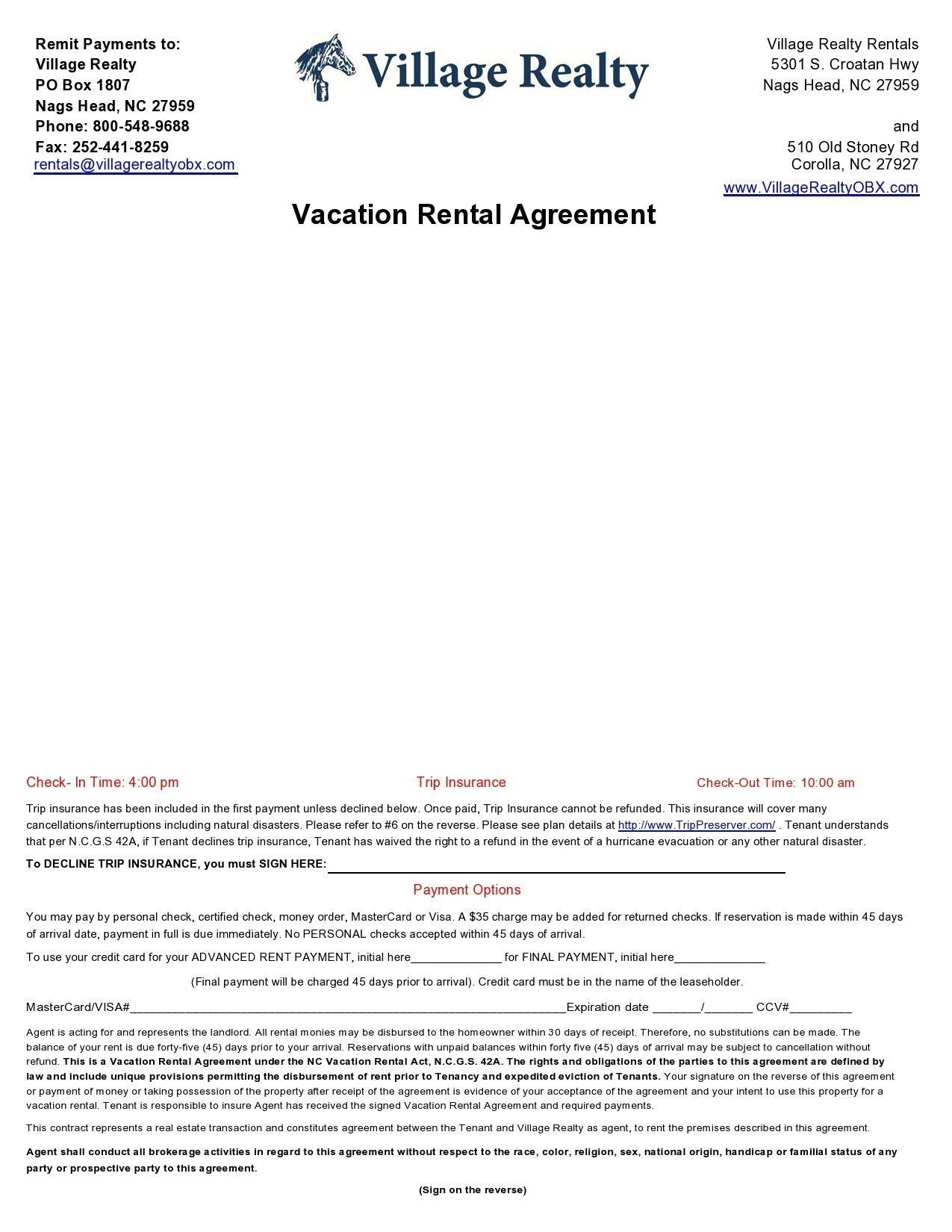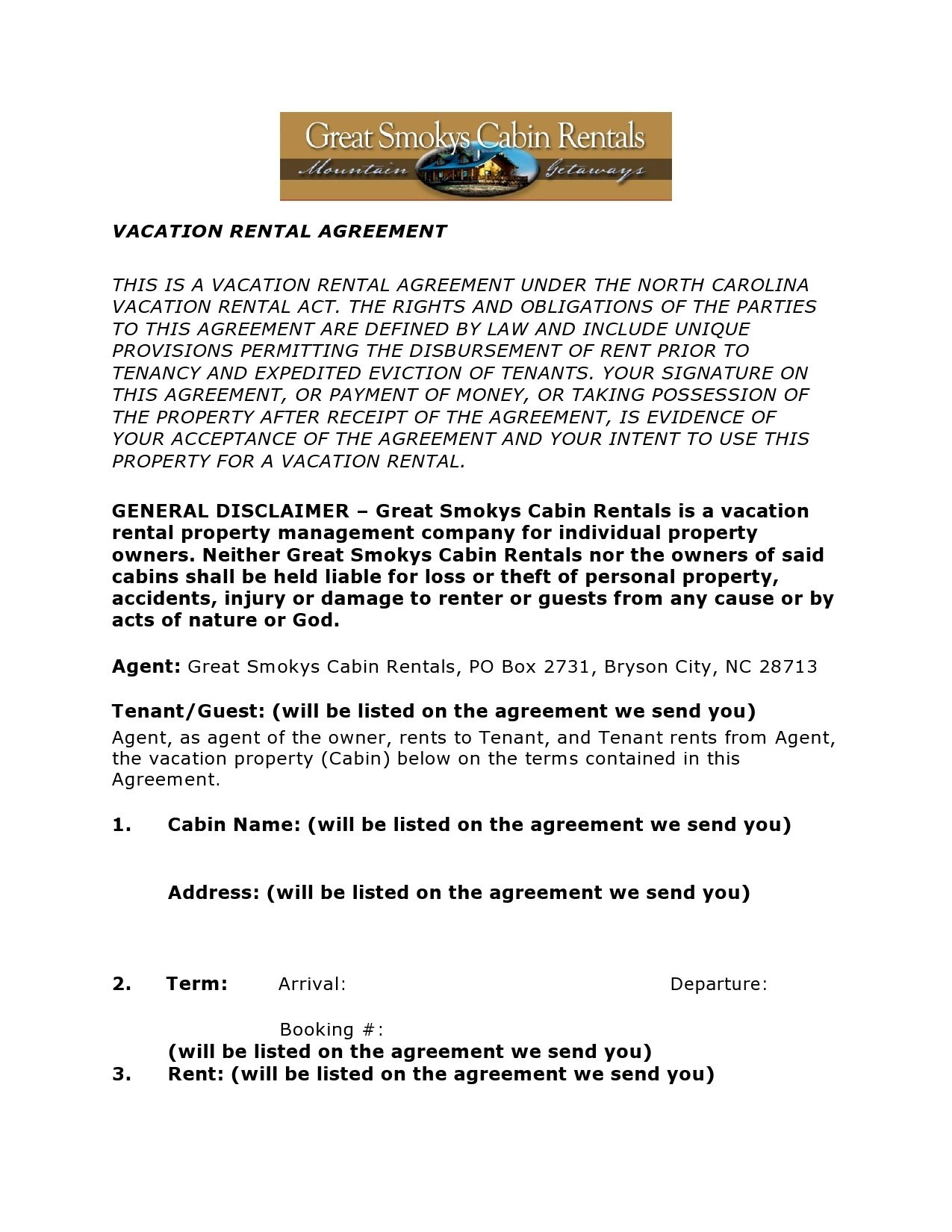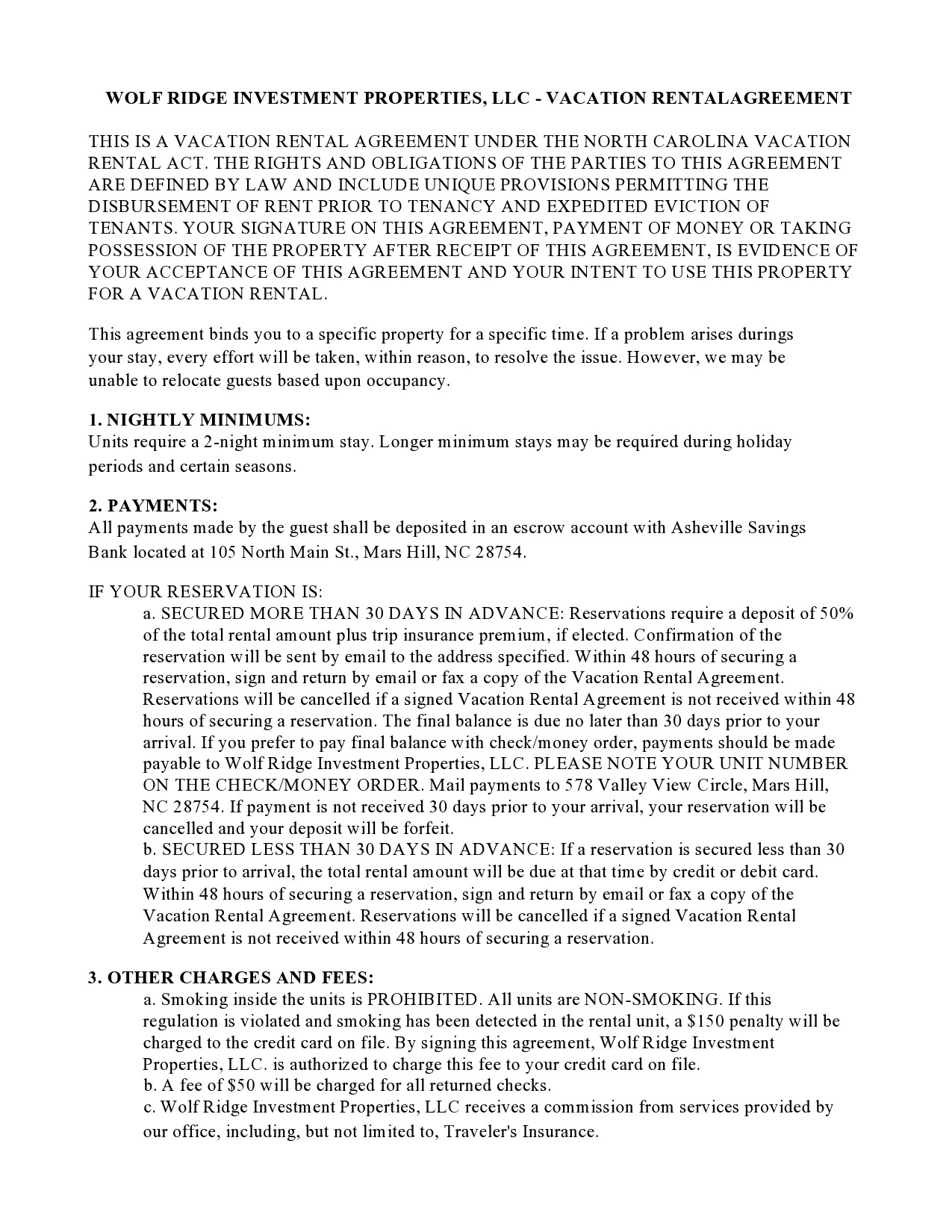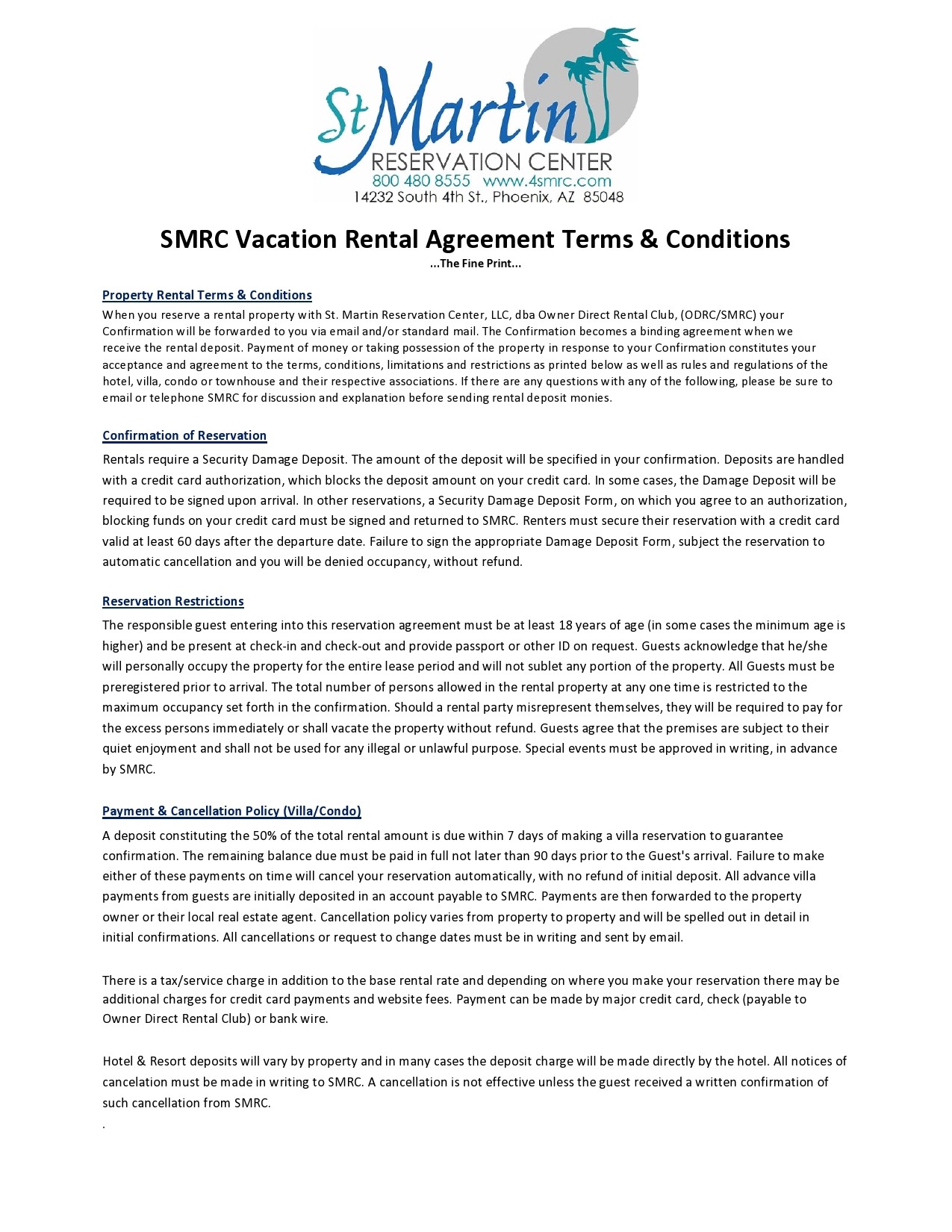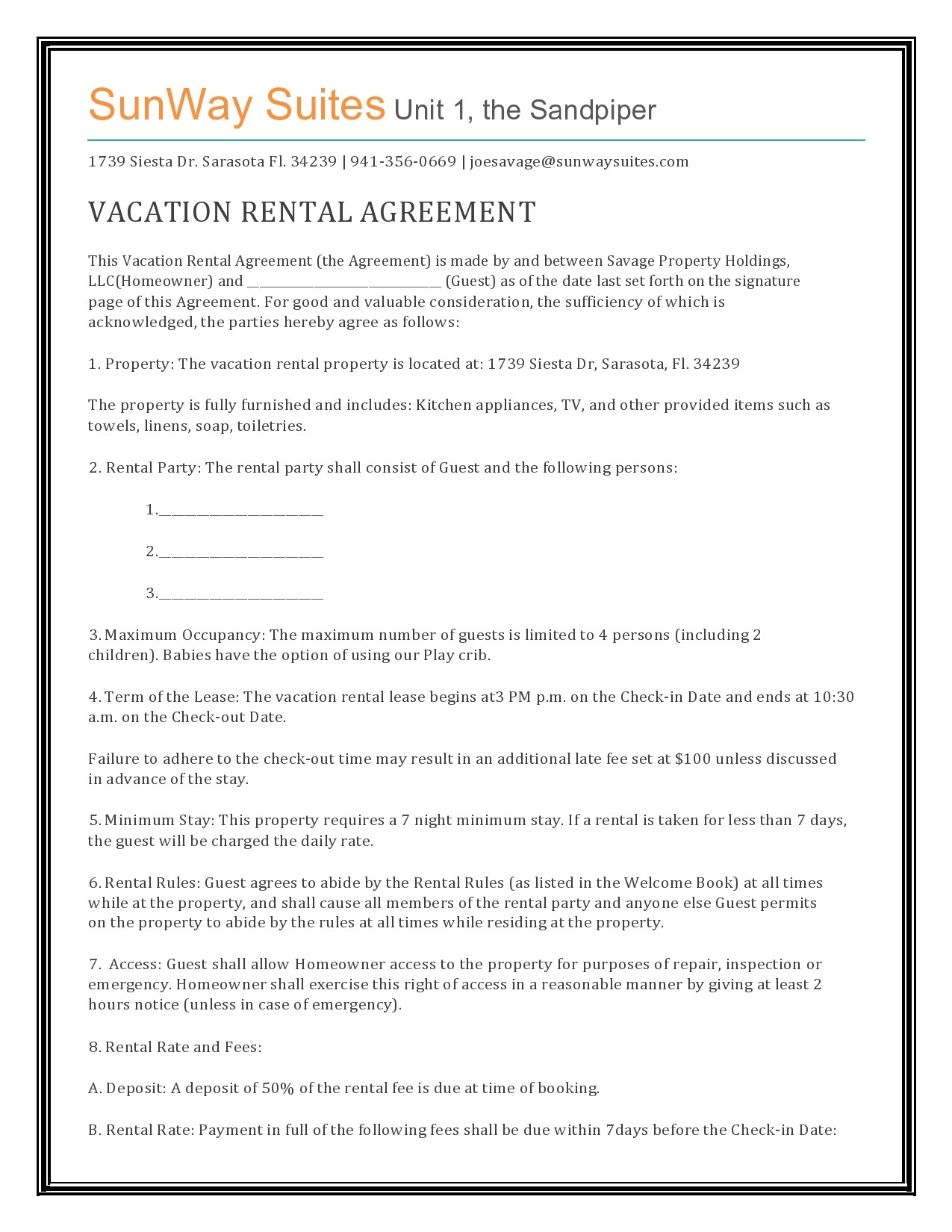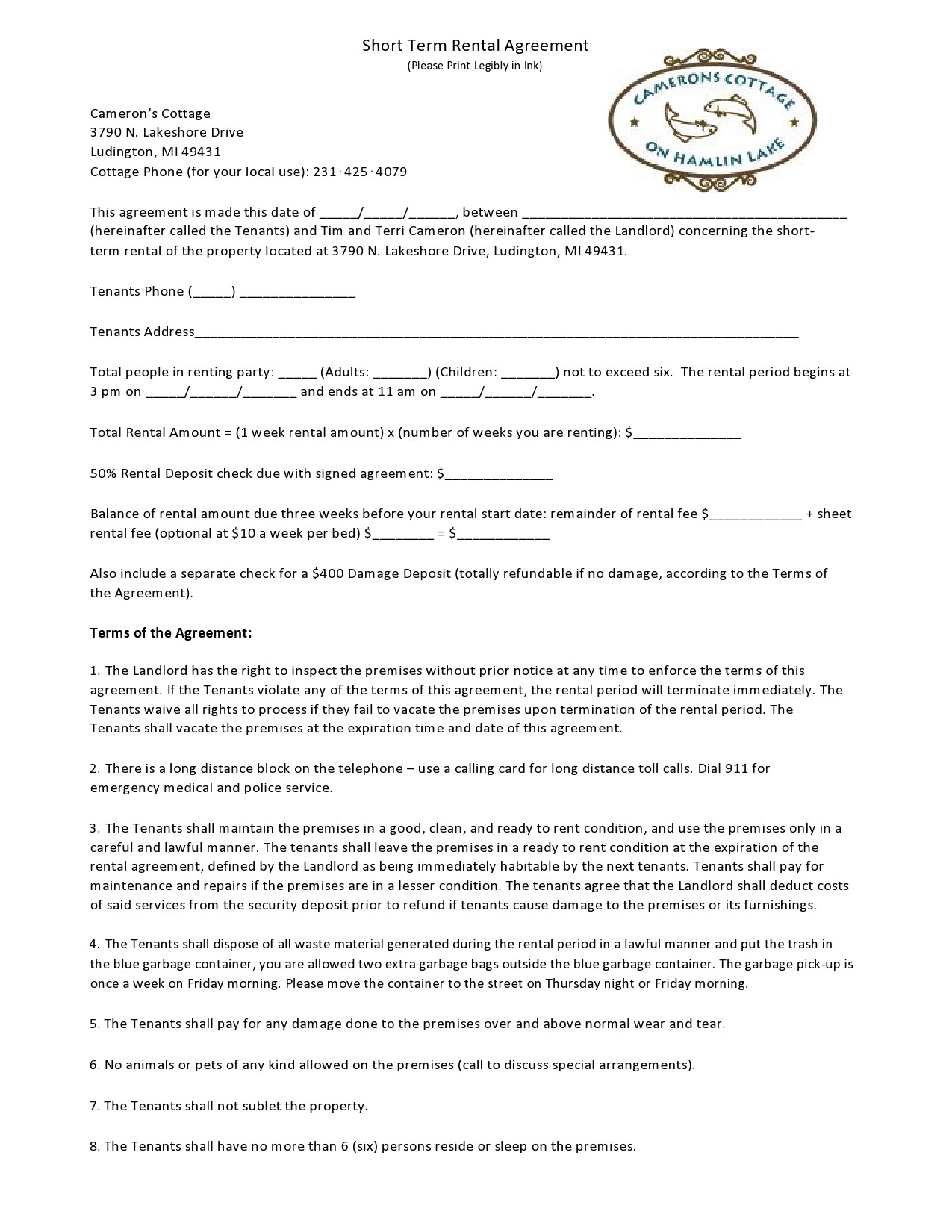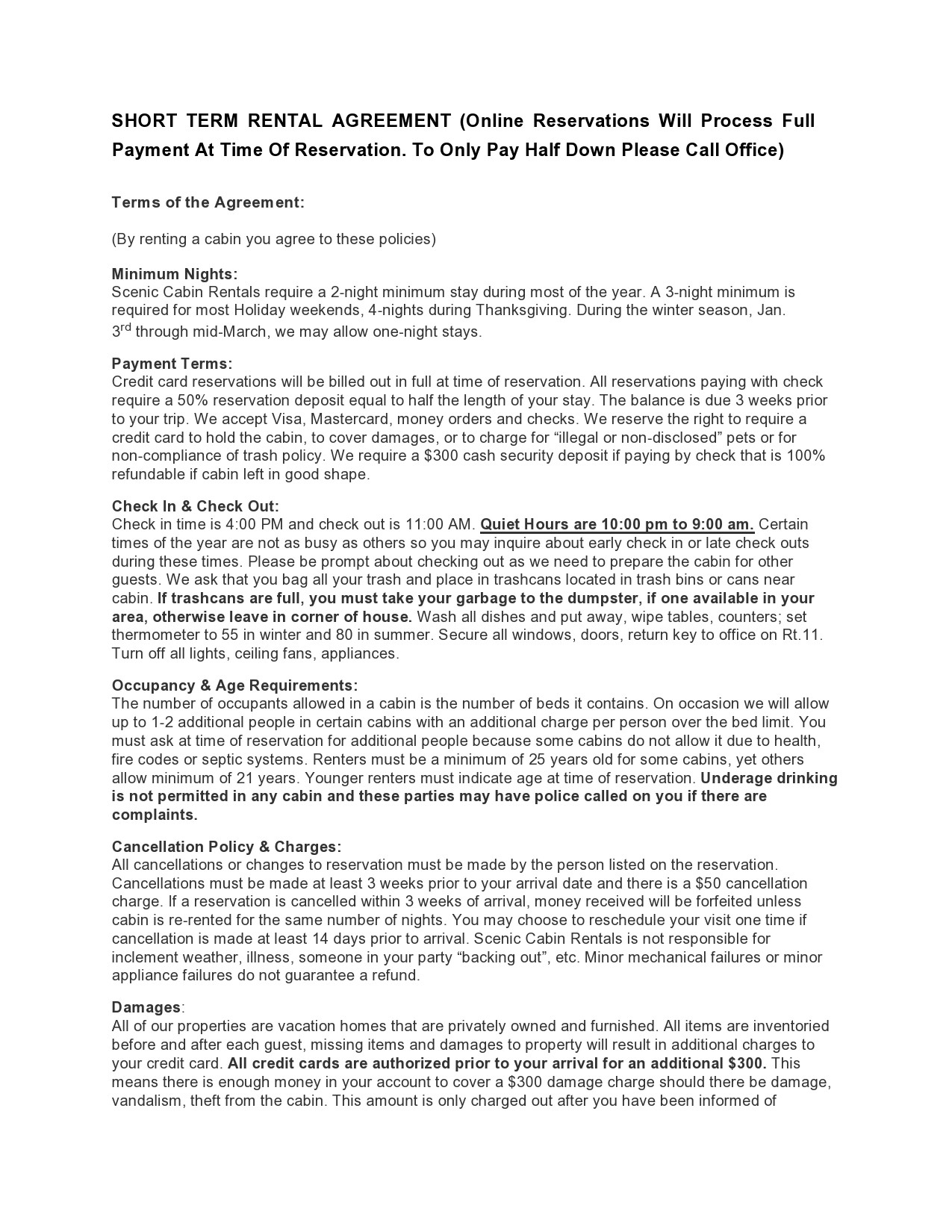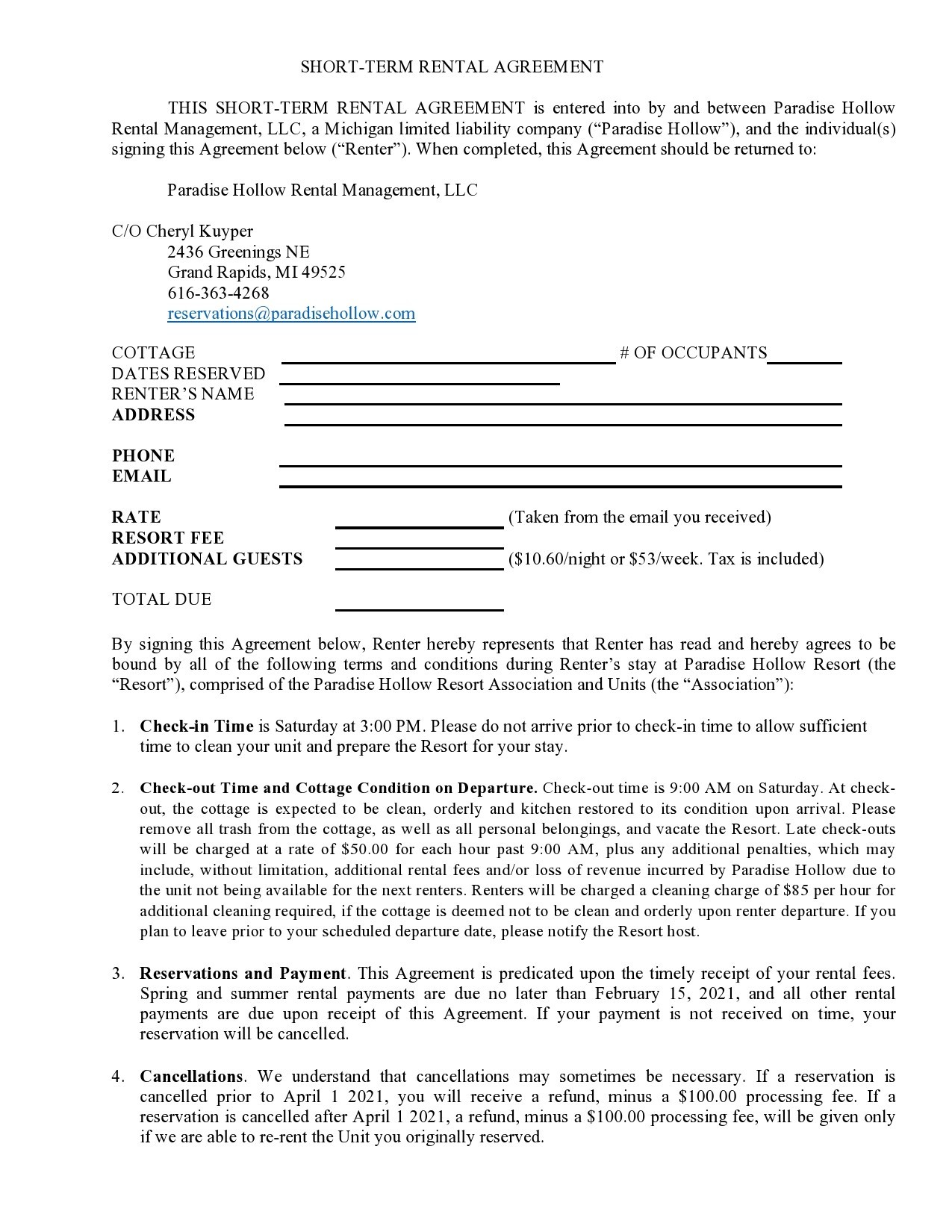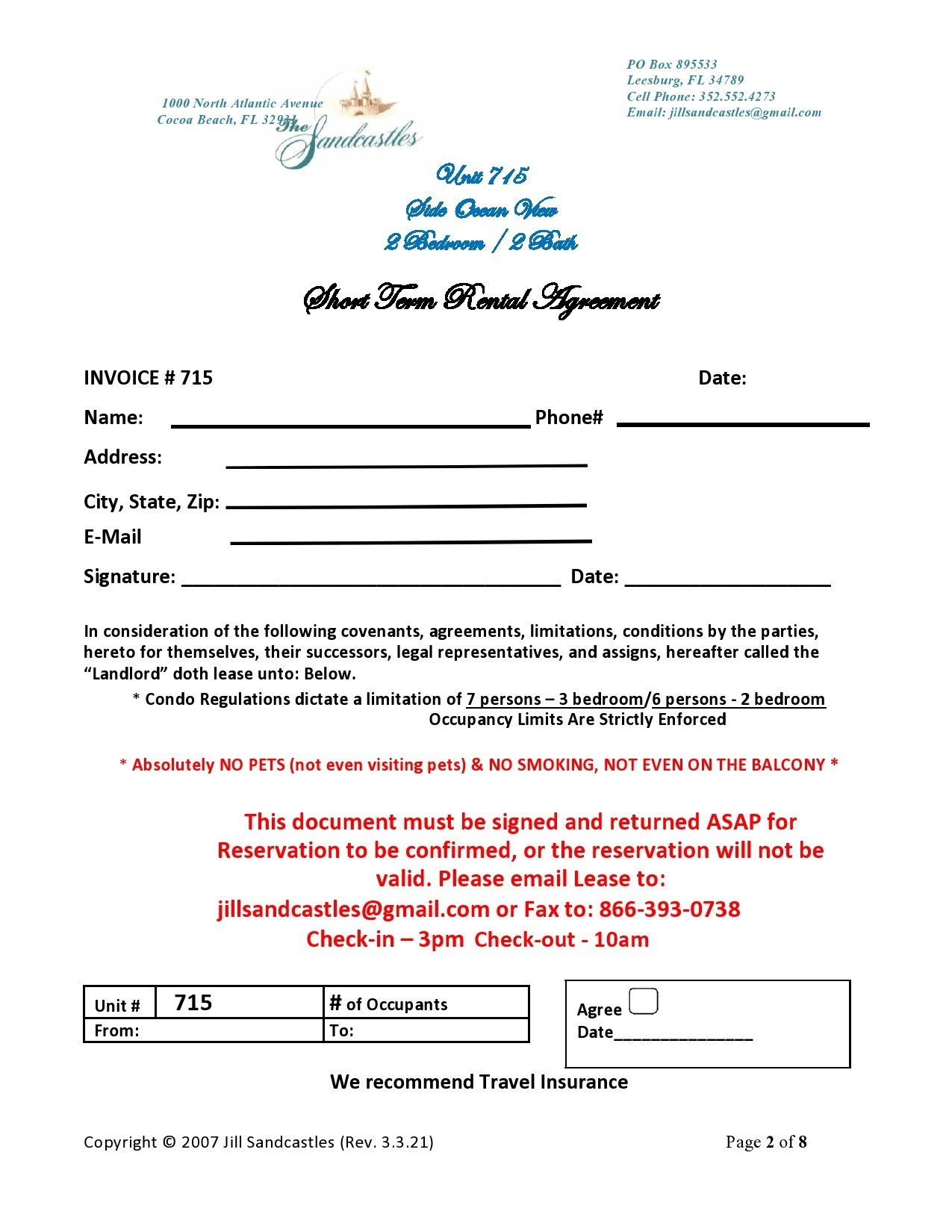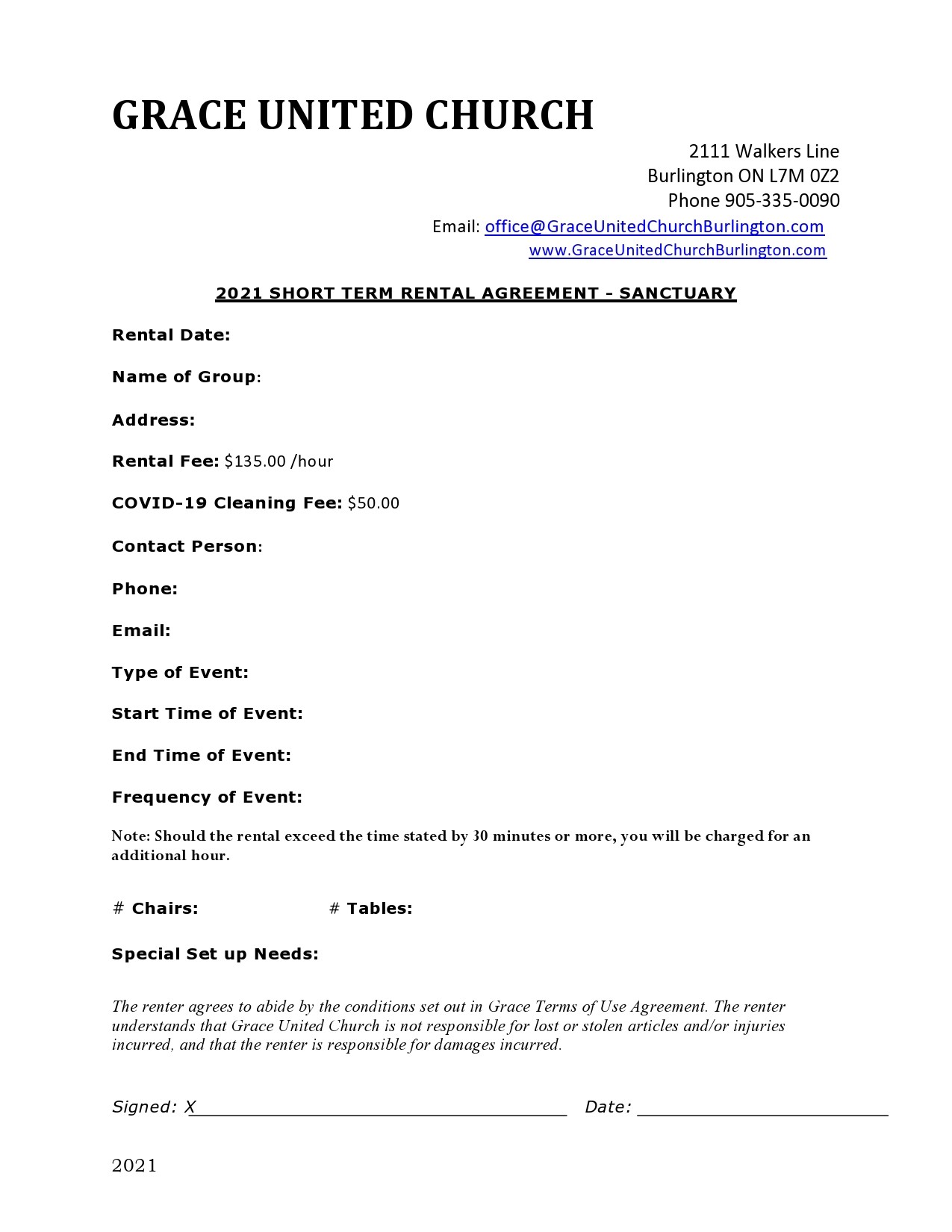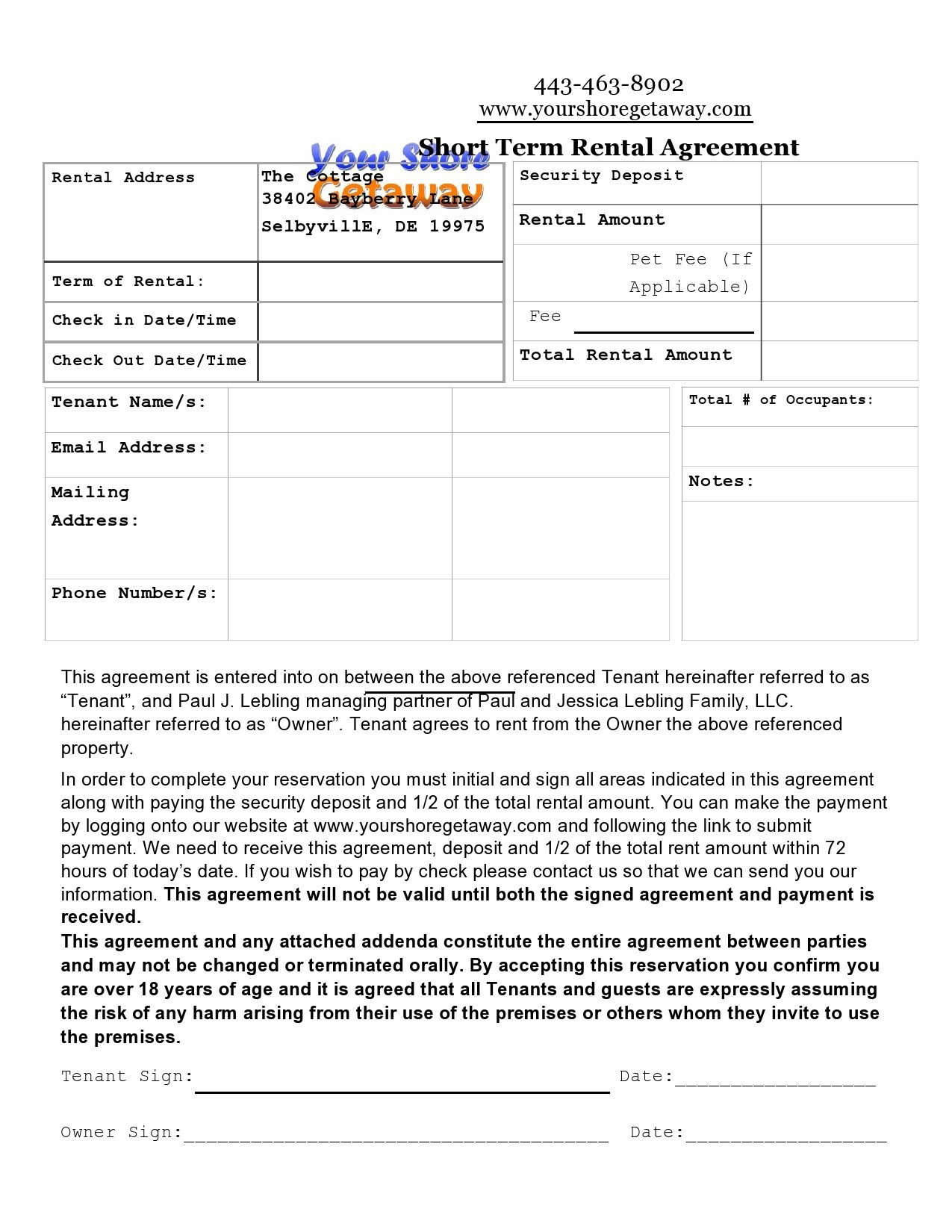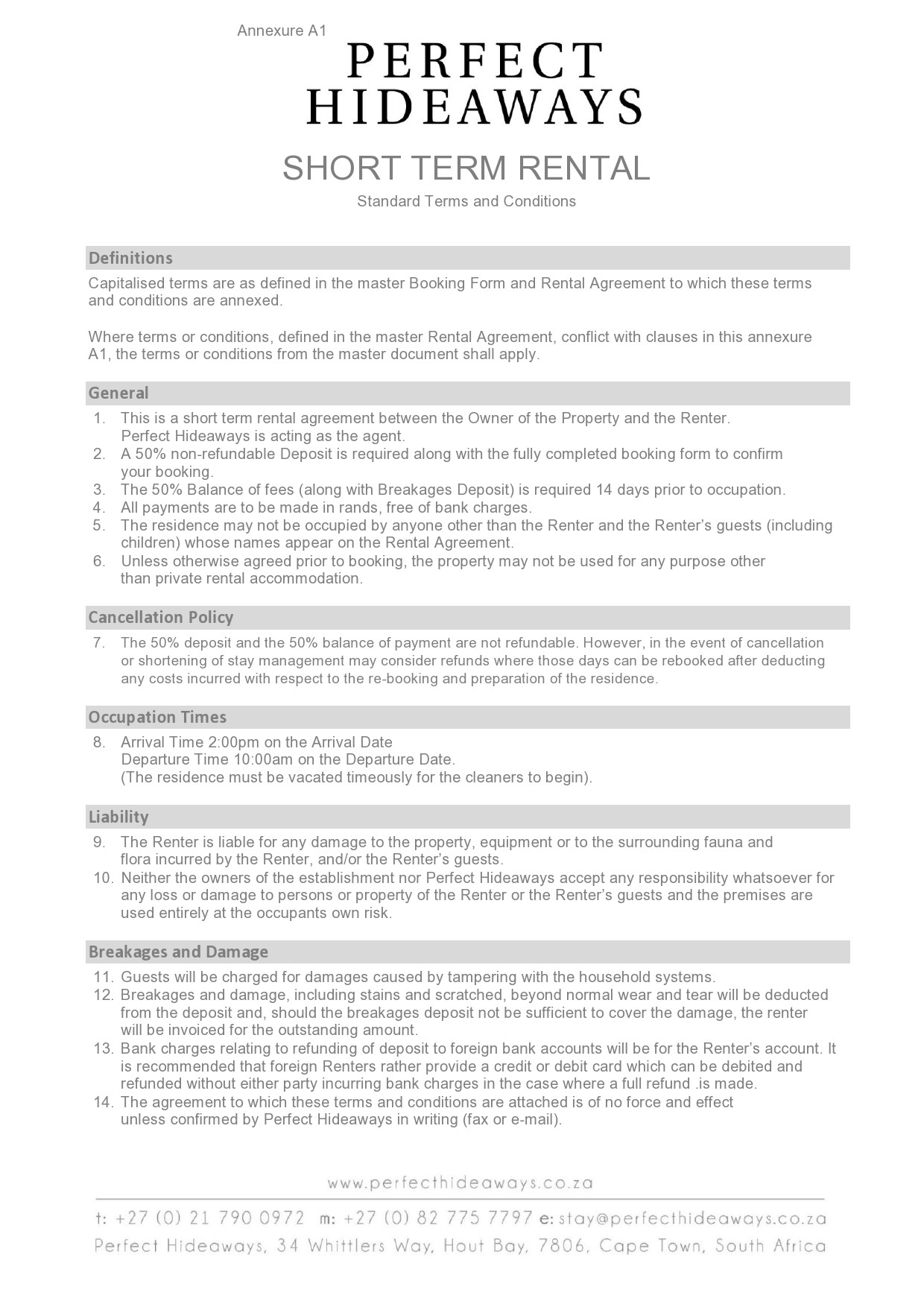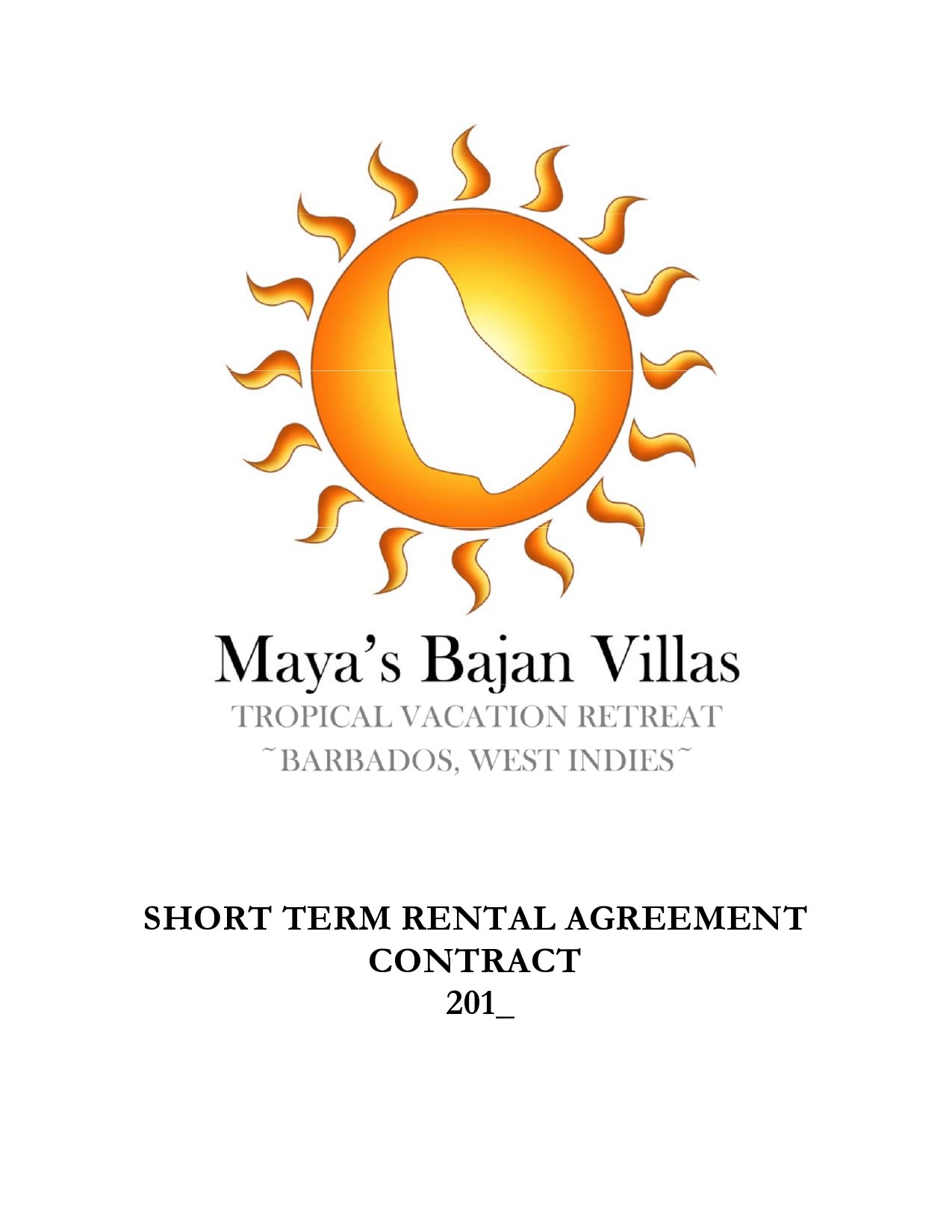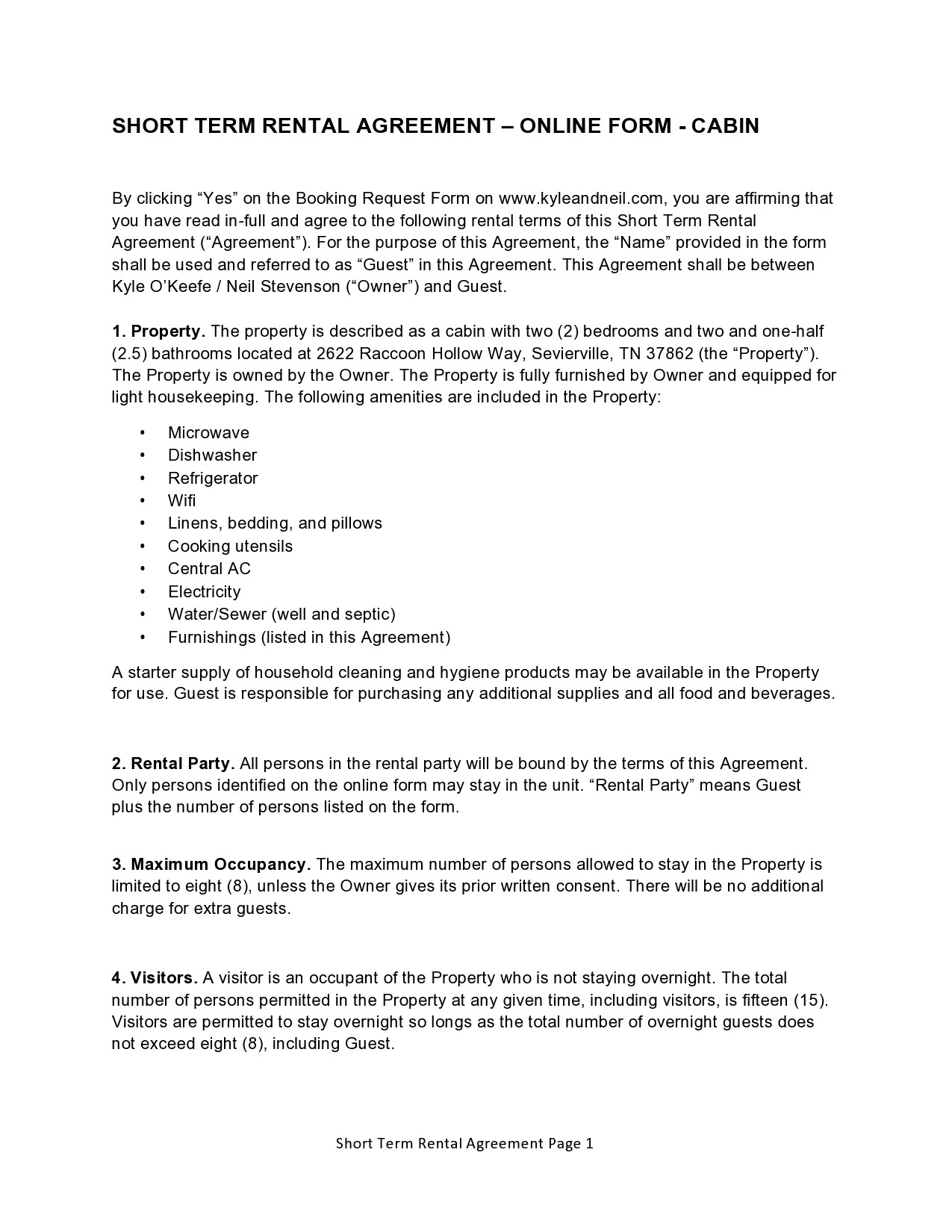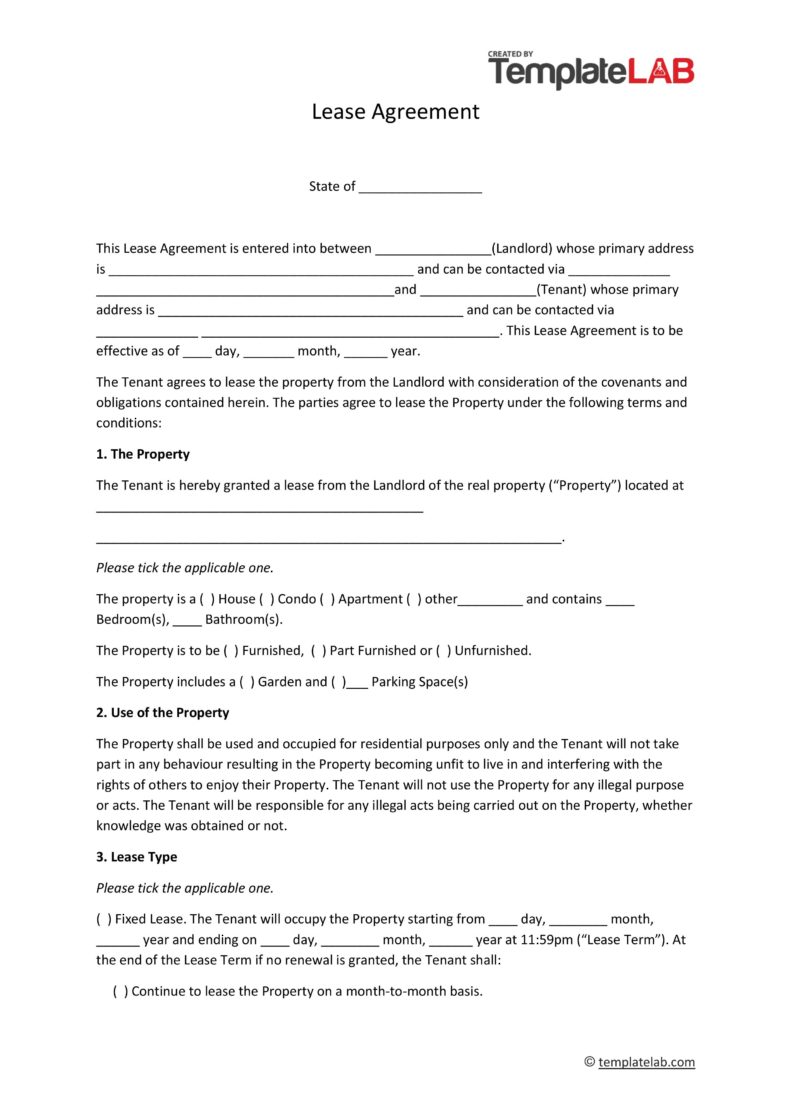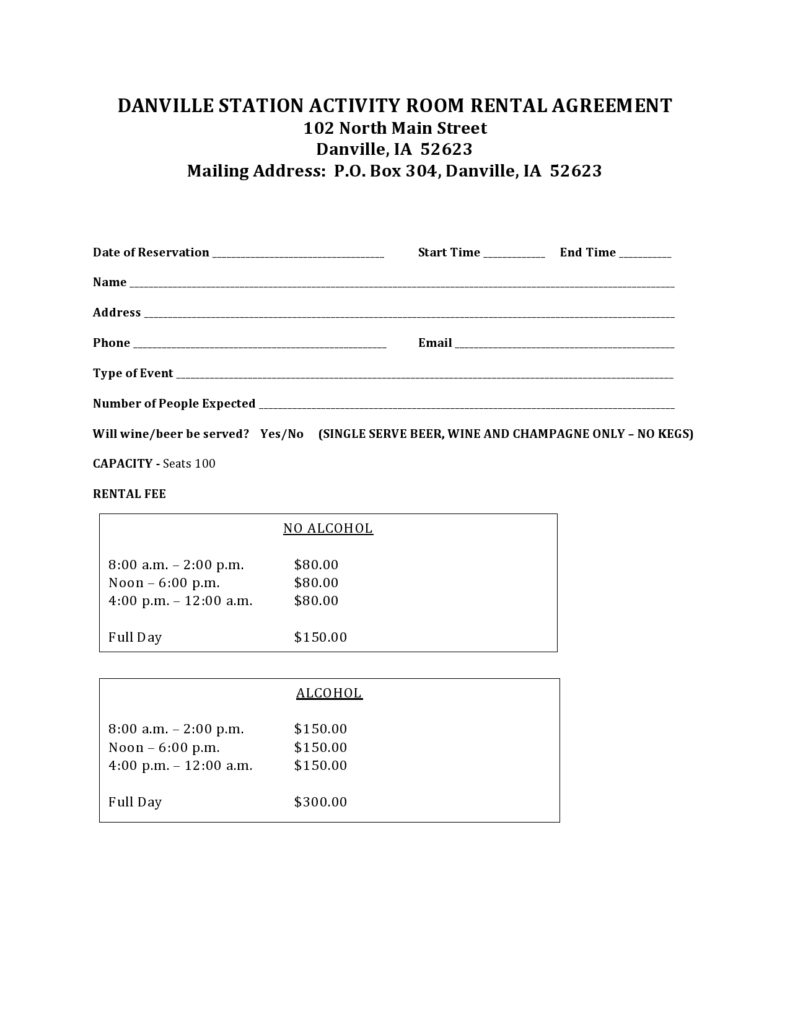When moving into a new apartment or rental, many tenants and landlords choose to sign an agreement for one year or more. This helps the landlord have a steady source of income over that amount of time, and it protects the tenant and their home for the next year.
Table of Contents
- 1 Short-Term Rental Agreements
- 2 What is a Short-Term Rental Agreement?
- 3 Vacation Rental Agreements
- 4 When Should a Short-Term Rental Agreement Be Used?
- 5 Short-Term Lease Agreements
- 6 What are the Advantages of a Short-Term Lease?
- 7 Temporary Lease Agreements
- 8 What are the Disadvantages of a Short-Term Lease?
- 9 What Should Be Included In a Short-Term Rental Agreement?
- 10 Vacation Rental Contracts
- 11 How Do I Protect My Vacation Rental Property?
- 12 Short-Term Rental Contracts
- 13 FAQ’s
There are times when the tenant or landlord will choose to sign a different type of lease. They may decide that a short-term rental agreement makes the most sense, allowing both to end the agreement earlier for any reason. Sometimes this is a vacation rental agreement where the tenant just stays for a few weeks, or it can be a temporary lease agreement as they look for a new home.
Before signing the short-term rental contract, both the landlord and the tenant will need to understand how these work, as well as some of the benefits and negatives of signing this kind of agreement over another choice.
Short-Term Rental Agreements
What is a Short-Term Rental Agreement?
A short-term rental agreement is any rental agreement that is for six months or less. A month-to-month lease is one of the most common examples of a short-term lease that tenants and landlords may agree on. While some month-to-month agreements may automatically happen after the initial one-year lease expires, some tenants and landlords may enter this agreement right from the start.
Some short-term leases are even shorter than a full month. For a vacation rental, the landlord may write up a vacation rental contract for someone who stays in a property for a week or two while vacationing. The rules of these agreements may be slightly different but will help the tenant and landlord be at the same time.
Vacation Rental Agreements
When Should a Short-Term Rental Agreement Be Used?
A short-term rental agreement can make sense in many situations. It provides a framework to protect the tenant and the landlord while setting out all of the rules right from the very beginning. Whether you stay at a vacation rental or want a month-to-month agreement at your apartment, this can be a smart agreement for everyone.
Even if a rental platform does not require the use of this kind of rental agreement, it is important to put it in place. There is always the possibility that a dispute will arise, and having this in place can provide protection to everyone involved.
As a landlord, if you plan to rent out your property for more than 14 days in a row, you will end up paying taxes on the rental income. Having a rental contract in place can help show that you did lease the property and will help out during tax time. If you need tax exemptions, that rental agreement is important.
A short-term rental agreement will provide protection to the landlord and the tenant. It is a smart idea to have it drawn up and signed by both parties.
Short-Term Lease Agreements
What are the Advantages of a Short-Term Lease?
While many landlords and tenants like to work with a long-term lease for a steady rental income and a safe home to stay in, there are some advantages to choosing a short-term lease option as well. Some of these benefits include:
- Flexibility: the main reason a tenant will agree to a short-term lease is that it provides them with a good amount of flexibility. As long as they give the required notice, which should be found in the contract, they will be able to leave the property quickly without violating the agreement.
- Increase rent: Since the rental amount is only for the term of the lease, the landlord will be able to increase the rent more often. Before the increase, the landlord must give the proper notice, but this can give them more freedom to change the rates based on what works for them.
- Change terms: A short-term lease will allow for quick changes in the terms of the agreement. If the landlord wants to change the requirements for a move-out inspection, the terms of the security deposit, or their pet policy, they can do this easier with a short-term lease than a long-term lease.
- Work well for vacation rentals: It is not a good idea to provide a vacation rental without a lease in place. But most of these rentals are only done for one to two weeks. A vacation rental contract allows the landlord to change the rental amount based on the time of year and keeps them protected as well.
These benefits are available for both tenants and landlords, which is part of what makes them an appealing option to choose.
Temporary Lease Agreements
What are the Disadvantages of a Short-Term Lease?
While some tenants and landlords may agree that a short-term contract is a good option, there are a few disadvantages to choosing this over a long-term lease. Some of these include:
- Higher rent: The tenant should be prepared for their rent to be higher with a short-term lease. This may benefit the landlord since they can make more on the property, but is a drawback for the tenant.
- Terminate lease: Both the landlord and the tenant will be able to terminate the lease with very little notice. This can be stressful for both parties. The landlord will have to find a new tenant quickly or lose income, or the tenant will scramble to find a new place to live.
- Change terms: The landlord can easily change the terms of the lease, which may seem unfair to the tenant. The tenant can choose not to follow them, but then they must hurry to find a new place to stay.
Both tenants and landlords need to weigh the benefits and negatives of this kind of agreement before they decide to sign the document.
What Should Be Included In a Short-Term Rental Agreement?
Each short-term rental agreement will have particulars on who is staying on the property, how long they will be at the property, and any other particulars of them staying on the property. The tenant and landlord can determine what information to include in the document as well. A few things that legally should be present, to protect the landlord and the tenant include:
- Details about the property. This can include the address of the property, a description of the property, and any amenities as well.
- Who will stay at the property? These will include the names of those who sign the agreement as well as any children who will be there.
- The agreed rental period. This can be extended if both parties agree, but the agreement needs to have the initial rental period on it.
- Any rules and regulations: This is a good place to clear the air and list out the rules and regulations that the landlord expects the tenant to follow while living on the property.
- Any check-in or check-out procedures. This is most likely used for a vacation rental to make sure the property is in good shape after the tenants leave.
- All of the details about the rent. This can include the amount of the rent, the deposit, and the payment details.
- The cancellation policy if the tenant agrees to show up and pay something for the property, but then needs to cancel.
- The signatures of the owner and the tenants who will stay there.
If there are any special agreements that the landlord and tenant agree with, then they should add this into the agreement from the beginning. It is not safe for either party to make agreements without putting them in writing in that document.
Vacation Rental Contracts
How Do I Protect My Vacation Rental Property?
Running a vacation rental is a great way to make some money and invest in your future. There are many guests who are interested in going on vacation who would rather stay in a nice home or apartment rather than a small hotel, often for a similar price. Choosing a good rental property and fixing it up in the right location can make this possible.
You need to be prepared to handle some of the tenants who will come your way. While many vacationers are just looking for a nice place to put up their feet at the end of the day, there are some who may cause trouble. A little bit of damage can cost you a lot of money, and you need to be protected ahead of time.
There are a few steps that you can take to be prepared to avoid the bad guests and protect your vacation rental property. Some of these include:
- Screen your guests: Even in a vacation rental, it is a good idea to screen your guests. Sometimes a bad one will slip by, but you may be able to catch some bad ones based on reviews other landlords have left. Take the time to look for these and avoid renting to them to protect the property.
- Create a rental agreement: This is exactly what the short-term lease agreement is for. You can list out the amount of the rent, any house rules you would like to set, the security deposit, and what will happen if the tenant does not follow the rules of the home. This gives clear expectations for both parties before anyone goes into the property.
- Ask for a security deposit: Ask the guests for a security deposit. This money can either go to the rental amount they agree to if they leave the place in good condition, or is used to clean up the mess and damages if those are left behind.
- Have insurance: It is always a good idea to have some insurance in place on the property. This can help for accidental or purposeful damage to the rental property. You can add the cost to the rental fee or use the security deposit on the property to help if the insurance is needed.
While these do not guarantee that you will get the perfect guests each time, they may be enough to deter some guests and can provide you with some protection if the guests do try to damage the property.
Short-Term Rental Contracts
FAQ’s
What is the main benefit of a short-term rental agreement for landlords?
A short-term lease can benefit the landlord because they will be able to charge a higher amount in rent for the tenant to have a shorter contract. They can also choose to change the lease terms when it is convenient or to increase the rent more often than with a long-term rental agreement.
What is the main benefit of a short-term rental agreement for tenants?
Tenants can benefit from a short-term lease. When the temporary rental contract is done, they have the ability to move out quickly. For tenants who may have a job waiting for them soon or who are waiting to purchase a home, these agreements offer them the chance to leave when it is convenient, rather than waiting a year.
What is the shortest term for a lease?
Some vacation rentals will allow tenants to stay for two to three days. There may be a few that allow for shorter, but the fees and time cleaning do not lend themselves well to this. It is not uncommon to see a short-term lease at a vacation rental last for a few days at its shortest, up to a few months at the longest. For a short-term agreement, the shortest term is often one month long.
What is the difference between short-term rental and vacation rental?
Both of these rental agreements are pretty much the same thing. The main difference is that a vacation rental is often a place the tenant stays in while on vacation, while a short-term rental may be a place the tenant stays in for longer and makes their home. Vacation rentals will often last less than 30-days, with some being as short as two or three days, up to two or three weeks as the individual vacations. A short-term rental will often be between 30-days to six months.

